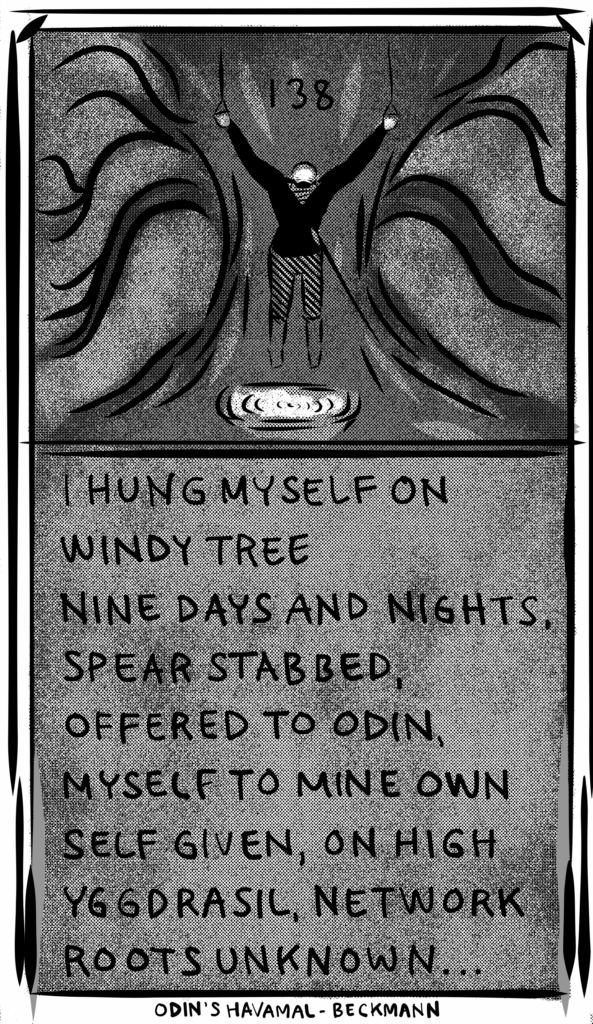Forward On Odin’s Havamal:
John F. Beckmann, PhD.
My Interest in the Havamal.
I have studied the Havamal quite intensively over the last year. The Havamal is a collection of proverbs attributed to Odin. My interest in the Havamal was driven by receiving genetic ancestry data, which showed me to be 75% Scandinavian. This was a bit of a shock to me, as I knew my ancestry was in part Scandinavian, but I did not understand I was majority Scandinavian.
My interest in the Havamal is not an endorsement of paganism. However, like the writings of Homer, it is within the western cannon and has survived the test of time – i.e., its lindy. Beowulf, Wagner, and J.R.R. Tolkien literally copied from these collected sagas/eddas. Even the English days of the week derive from the Norse gods. Wednesday is Wōdnesdæg (Odin’s day). Tuesday is Tyr’s day. Thursday is Thor’s day. Friday is Frigg’s day.
Viking history and mythology needs to be understood within the context of Viking society and culture. An important point is that the Viking society was driven by values that include physical power; and the necessity of friendship with extreme loyalty in extreme cold environments. In this realm, one could be killed by a warrior, a rogue, the cold, a disease, or starvation at any time. Life was often short and brutish… as Hobbes would say. These cultures would obviously believe in fate and could not help but feel that they were often at the mercy of cruel unseen forces (Gods who didn’t love them outright). The Havamal is cynical and presents wise strategies that assist survival within this landscape. The Vikings not only survived but expanded during an age of mixed paganism and Christianity where these cultural/memetic systems were under direct competition with each other. When Vikings encountered Christianity, most eventually opted into this system in lieu of the pagan one; it seems clear that long term, the peaceful Christian system leads to one of positive cultural growth, peace, and forgiveness, rather than the cruel Viking world of pagan survivalism and honor killings.
The Saga of Grettir the Strong.
The Saga of Grettir the Strong contains an exemplary tale detailing life within this culture and exhibits the struggles of a warrior poet during these times. One particular side quest is exemplary, a family was separated during Christmas time when the head of the house traveled to the Christmas mass; leaving behind his family at their rural farm house. Grettir, a pagan warrior of mixed allegiance was wintering with this family at this time and opted to stay at the farm. Simultaneously, a large raiding band of about 12 Viking berserks sailed and landed at the beachhead near the farmhouse. Viking berserks were essentially armored gangs of raiders that wandered wherever they wanted and did whatever they wanted, simply because they had the power to do so – No one could stop them, in an age where the “riddle of steel” got you whatever you wanted… Grettir saw the berserks and realized they were coming to raid the rural farmhouse. In this moment, he made a karmic good choice and decided to defend the family that had given him winter shelter. Being a large warrior himself, he approached the raiding band. Using trickery, he suggested that he would join them and swear allegiance to their gang – that he would lead them to the farm house – and party hard with them there… The berserkers accepted his offer. He led the raucous raiding party to the house and encouraged them to begin their fun, demanding the women of the house open up casks of mead. The women were obviously highly disturbed, many crying and fearing for their lives, yet they could do nothing against a band of 12 + 1 armored berserker giants… Grettir kept the party going getting everyone as drunk as possible – later in the evening the band inquired about the bathrooms and Grettir showed them the way. For some reason, the 12 berserks were now naked at this point (it’s not clear to me why…) and Grettir ushered them into the bathroom or perhaps some sort of sauna. When the last berserk went into the bathroom, Grettir closed the door, locked the party inside, ran to the house and donned armor and a spear and returned to the door. When the berserks realized they had been tricked they immediately started breaking down the door. With the door broken they rushed out, armed with anything they could grab, and a battle of naked men ensued. Grettir impaled the first four to come out through the guts with a spear, then killed four more in direct hand to hand combat, while the other four ran away. After killing eight berserks, he chased down the other four who fled, killing two, and finding the last 2 frozen to death in the cold. This made Grettir famous in Scandinavia and his tales spread far and wide, being a hero in this case, and often an anti-hero in later blood feuds. His Saga is emblematic of the culture that ancestral Scandinavians lived under for probably thousands of years. It was not a pleasant system of governance, by violent power and religious worship of death in battle – which is probably why most Scandinavians opted into Christianity or outright atheism over time. I present this summary for one to understand the context under which the Havamal arose. Surviving in these times would often be a combination of guile, power, and luck…
On the Viking Empire and its Descendants.
The Viking culture, system, and thought led to an expansive sea faring warrior empire that reached westward all the way to the America’s (Vineland – see Sagas of the Greenlanders) and eastward into Ukraine and Russia (see later sections of the Saga of Grettir the Strong). Westward, the Vikings conquered, settled, and interbred with the Europeans, British, Irish, and French. As such, most Europeans encode Viking DNA, in part. In France, Normandy was owned and settled by Vikings, whose later descendants would move eastward as Frankish leaders of the Crusades. In America, the Native Americans attacked and pushed out the two earliest attempted colonies. The Vikings called the Native American warriors, “the screamers”. These early battles, encounters, and tragic settlement attempts are described in “the Sagas of the Greenlanders.” Rumors suggest that Vikings might have even settled the Midwest, though these seem only to be legends with slim fact based evidence; but I wouldn’t rule it out given that one can reach the Midwest quite easily by navigating rivers and the great lakes. Later in the 1800’s Viking descendants would in fact colonize the Midwest, in the early American westward expansion. Eastward, many Vikings traveled to Constantinople to fight in the Varangian Guard. The Varangian Guards were hired bodyguards of the Byzantine Christian emperors who found great utility in these warriors known for their loyalty and ferocity. Furthermore, my understanding is that the modern nations of Russia, Ukraine, and Belarus are essentially founded, in part, by Viking Varangians. Vladimir Svyatoslavich (Vladimir the Great) was a Viking convert to Christianity and descendant of Vikings. Thus the Viking ancestry covers the globe and the writings in the Havamal and the Sagas are part of our shared world heritage.
On the Mythology of the Vikings.
The sagas make clear that the Vikings believed in a full spectrum mythological bestiary including but not limited to giants, dwarfs, witches, sorcerers, magic, ghosts, devils, and beasts. Today, we are quick to cast shade on this mythology. On the other hand, a wise reader will note that dwarves are real, giants are real (Hafþór Júlíus Björnsson), hobbits are real (Homo floresiensis), and magic (collective will) has some truth to it; ghosts and werewolves were probably real in the sense of evil nocturnal humans dressing up as these creatures to commit crimes. Finally, beasts (bears and wolves) are undoubtedly real and undoubtedly killed many Scandinavians over the course of evolutionary history. My point is that to a Scandinavian living in medieval times – these concepts were in fact truth – though people could not always understand the mechanisms underneath. Looking back into the minds and writings of these ancient peoples can often be quite illuminating to our more “advanced” society.
On Odin.
My best hypothesis is that the mythological pantheon of gods, like the Viking gods, the Greek gods, the Roman gods etc… are personalities derived from patriarchal figures that emerged in history. Odin, or at least the idea of Odin, and the writings of Odin, probably source to a real man, who really existed, founded a family and/or society and passed on his stories through oral tradition. Stories that led to his rise and survival in that environment. After many years, the identity of this person would essentially be masked/forgotten by time, and the founding father (so to speak) would simply be epitomized as a god. So essentially, the hypothesis is that pantheon mythological pagan gods were probably real men -> who led impactful lives making them demigods -> who transcribed or dictated their memes -> whose true identities were forgotten over time -> thus becoming pagan gods. Camille Paglia argues that pagan gods essentially allow humans to opt into ideological systems held by those various folk heroes – in order to test the merits of their memetic systems under different contexts – for better or worse.
I have no doubt the Vikings found Christianity particularly appealing because there is actually much overlap with Norse mythology. Odin hung himself on a tree and endured suffering to gain wisdom, similar to how Christ was crucified on a tree. Odin was called the “All-Father” – essentially a fatherly ethos, which no doubt connected in at least some ways to “God the Father”. Both systems envision God as a Father – and so in some sense there is overlap with what might be called fatherly patriarchal wisdom. Imagine an ancient priest translating Christianity to a Viking pagan, given the similarities it would probably actually feel confirmatory and clarifying to them – leaving nuances and minor differences conveniently lost in translation – but confirming where they agreed.
Odin was likely a barbarian king who won power by the sword and later gave up the sword to learn how to read and write, understanding that words and memes hold commanding power. Odin’s quest to read and write the runes is central to his mythology; To Odin, writing was so highly valued that he cut out his eye as the price to learn it. Whether or not he really did that is unclear to me, though it’s possible to imagine a scenario of a secret rune cult exacting a hefty price, in exchange for teaching how to read and write runes, which would indeed be a sort of secret wizardry power in a world of illiterate men. Furthermore, the concept of divine memetics overlaps with not only the Gospel of John, “In the beginning was the Word, and the word was God, and the word was with God”, but also with the Sefer Yetzirah; Many religions essentially worship the power of the written meme to become reality.
Overall, my point is that these overlaps, probably allowed the Scandinavians to accept Christianity without much trouble, for the better – as it puts a guard on the barbarian culture that leads to constant blood feuds, revenge killing, and power struggles. Christ allows one to opt out of these systems for a system focused on positive mercy and forgiveness – an effective counter to blood feuds – which often destroyed Viking societies…(at least one American colony in the Saga of the Greenlanders actually exterminated itself by blood feud).
Translating the Havamal into Comics.
To restate, replicating the Havamal as meme is not an endorsement of paganism. Though I learned a lot in the process as the Havamal does truly contain wise cynical proverbs on a plethora of topics (including hospitality, friendship, loyalty, defense, and yes – power) – that provide context onto the history of the Viking age and the culture of the Scandinavians, their memes, and the selective regimes that applied forces shaping their genetics and those memes. These words are part of my cultural heritage and I argue that not all words, especially wise written words from what is likely some ancient paternal ancestor, should be thrown out with the bathwater of paganism. This is my humble opinion and I suspect that most Scandinavians would feel similar; Enjoy. 🙂
//
Wisdom for Wanderers and Counsel to Guests (001 – 080)
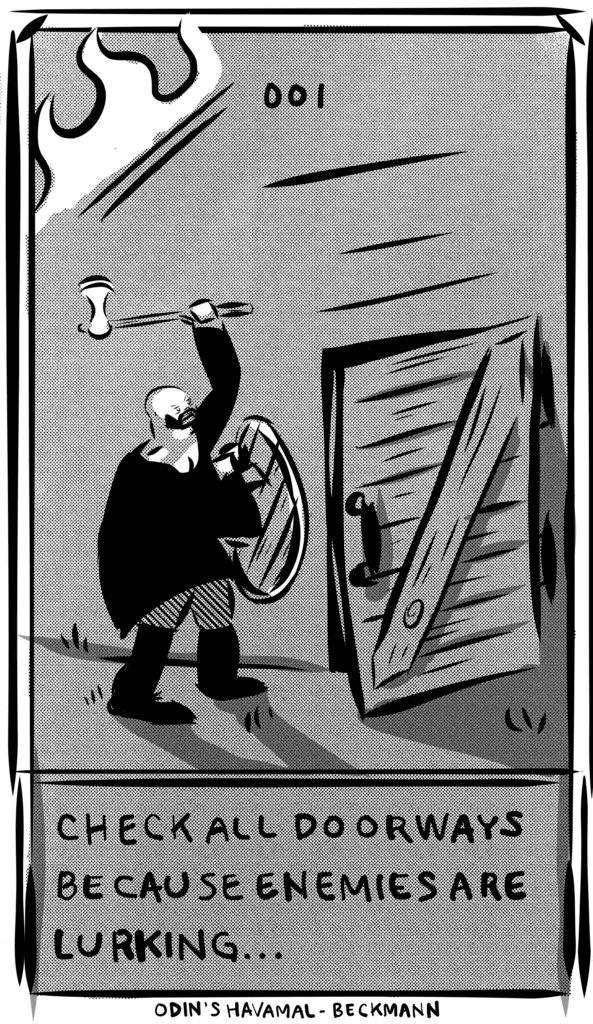
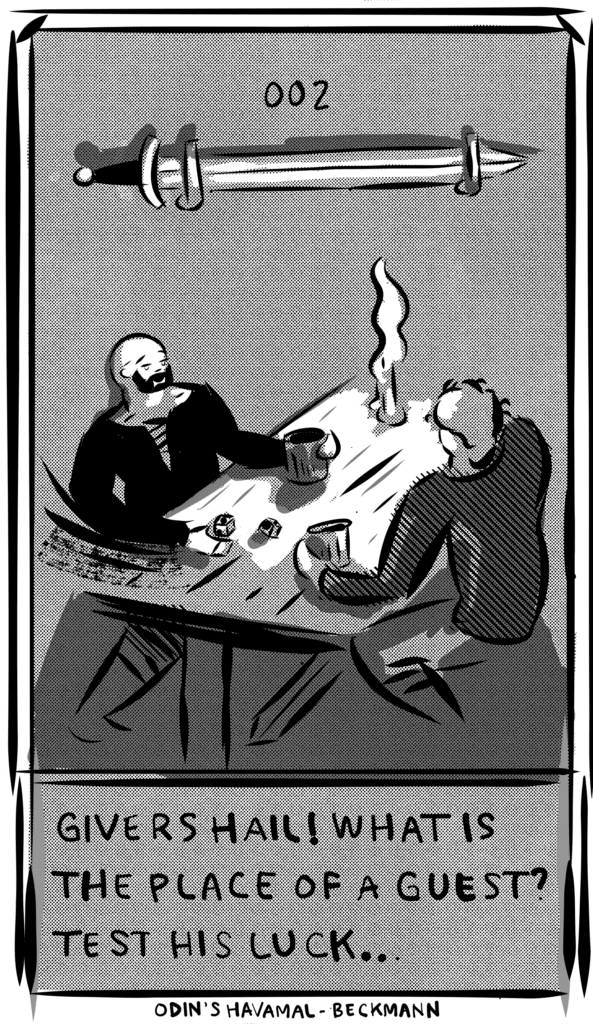
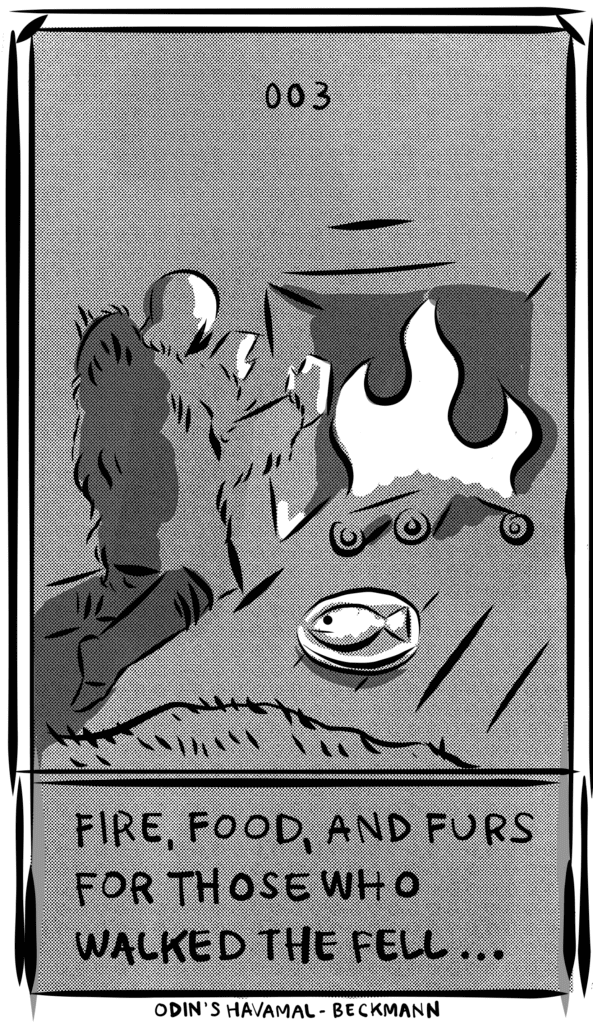
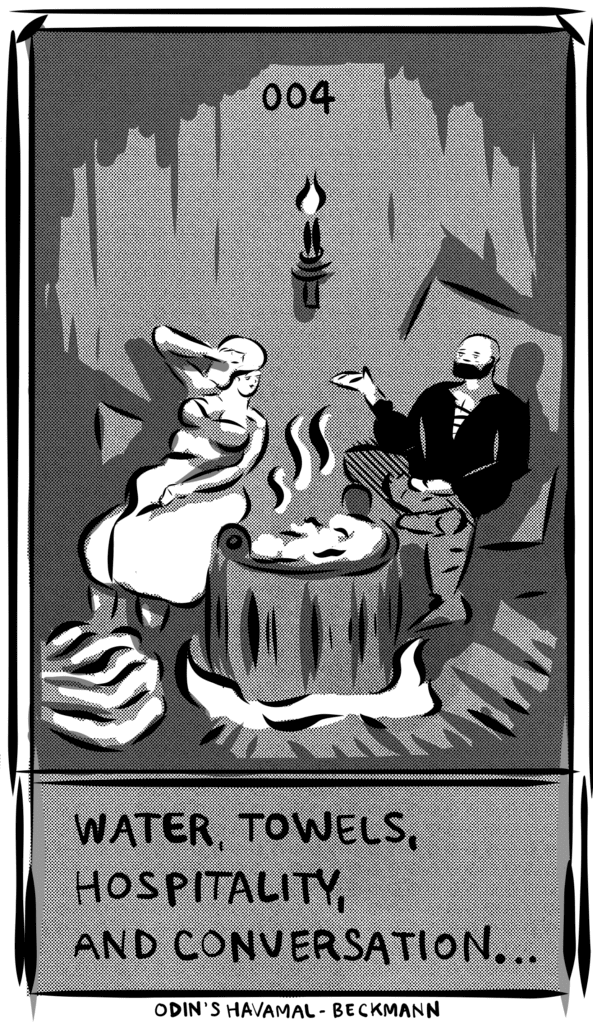
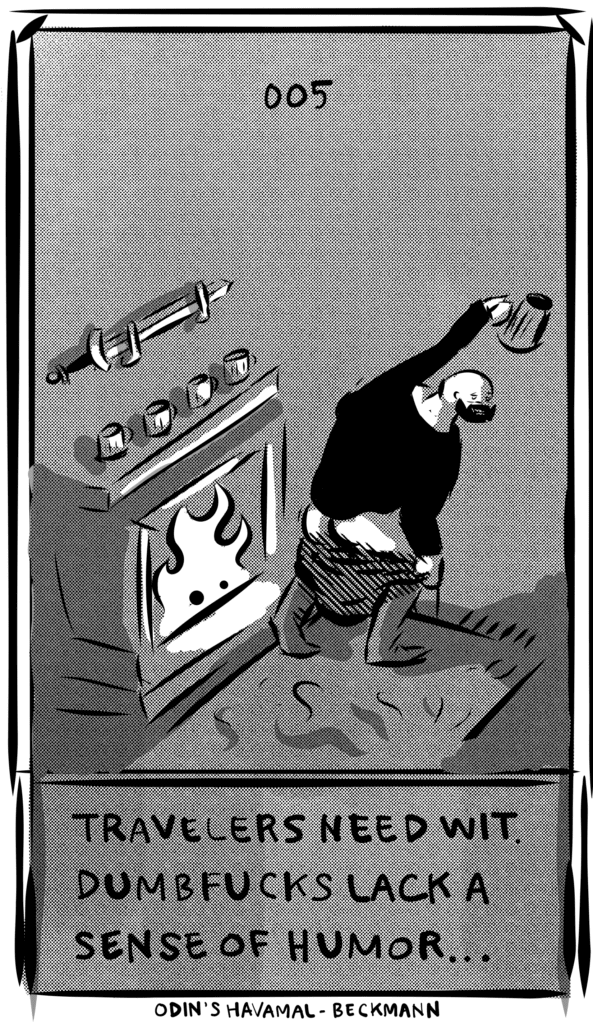
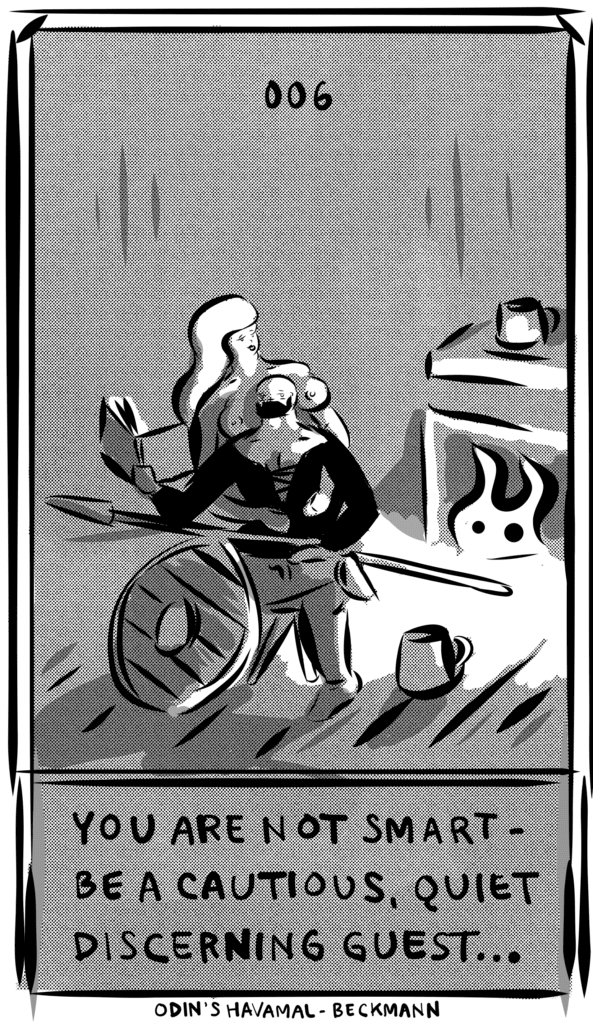
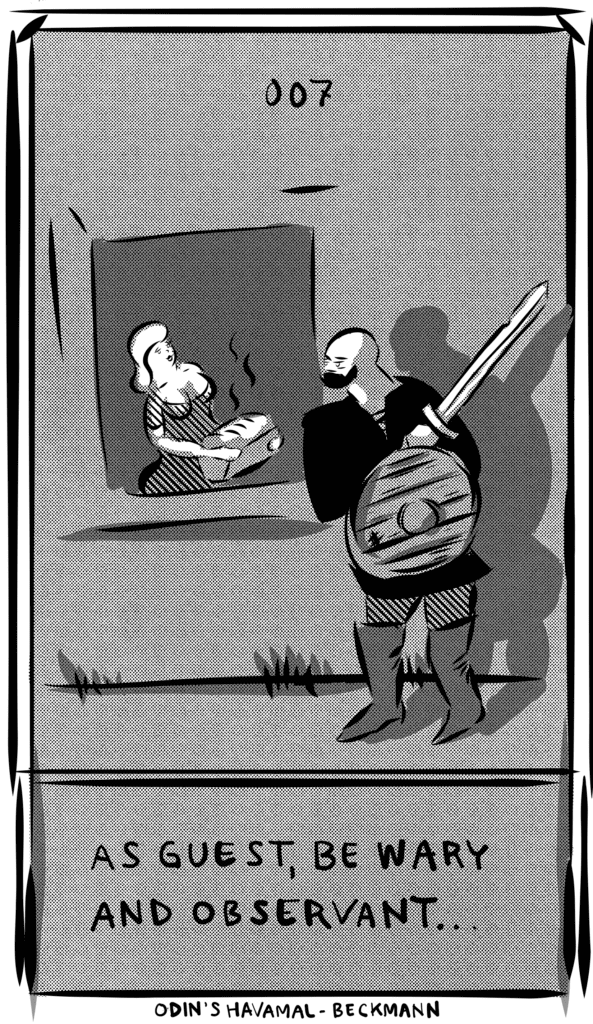
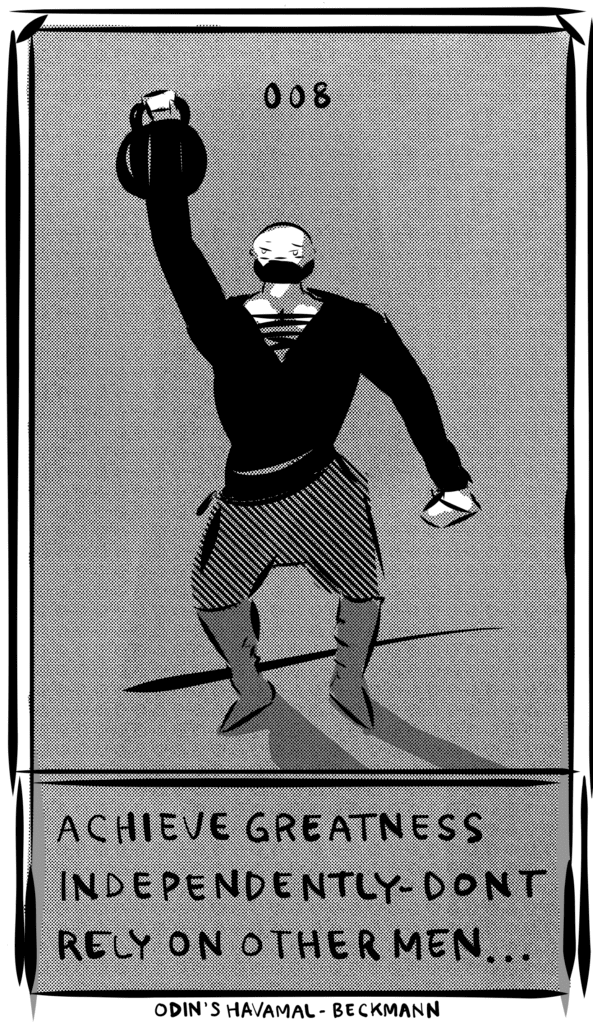
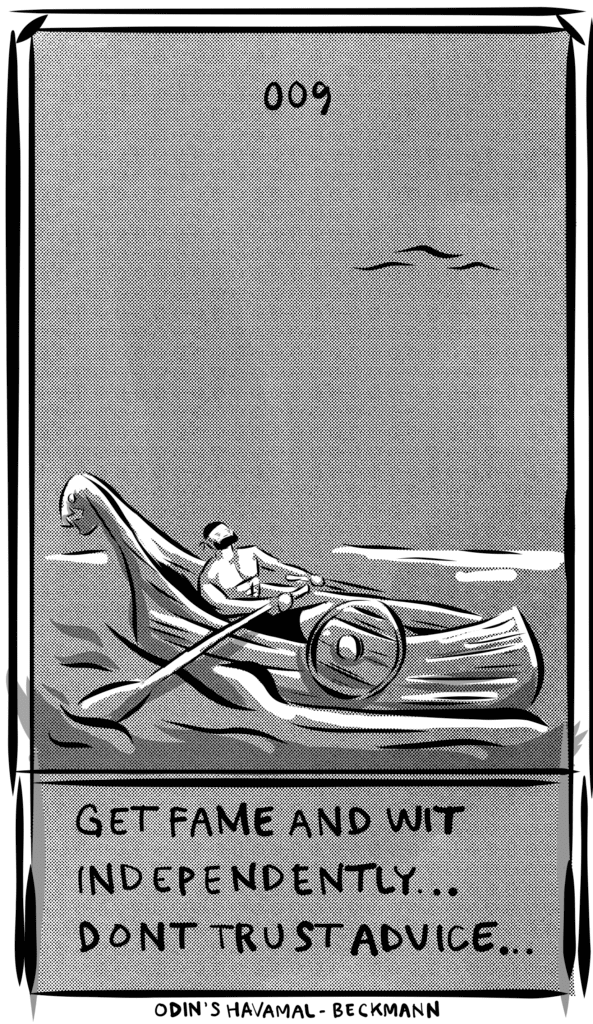
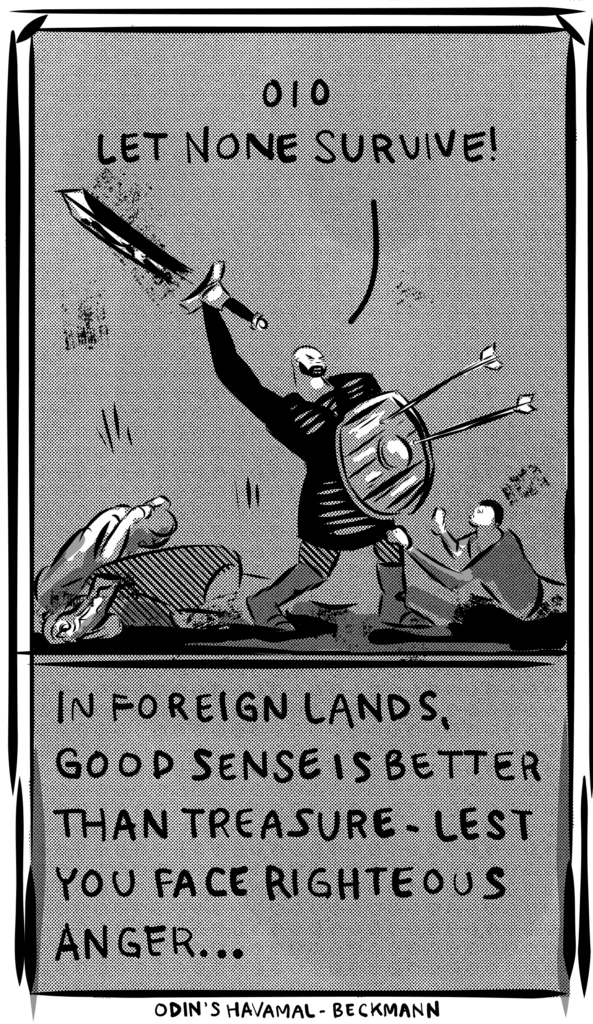
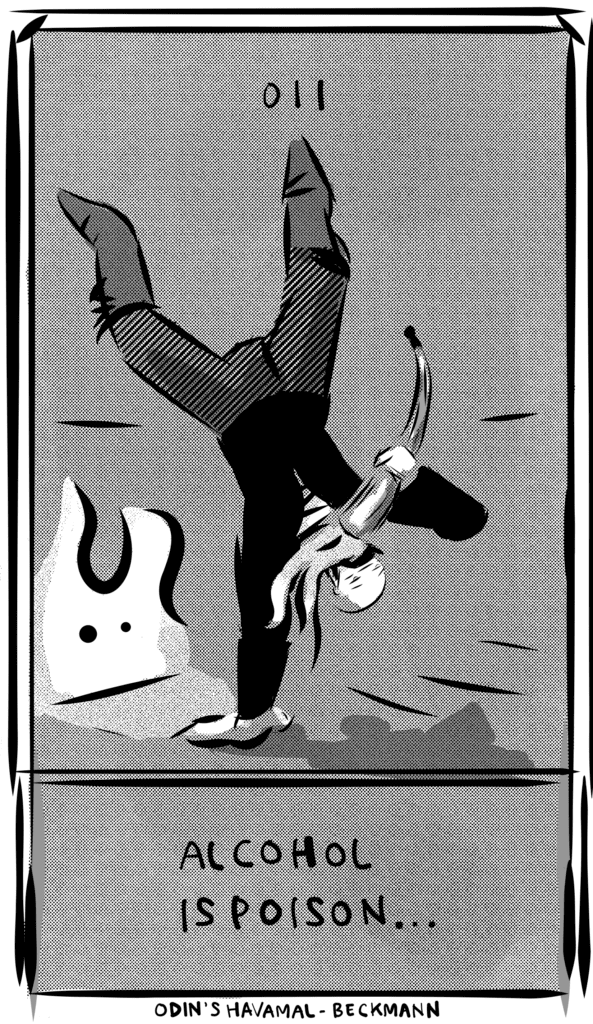
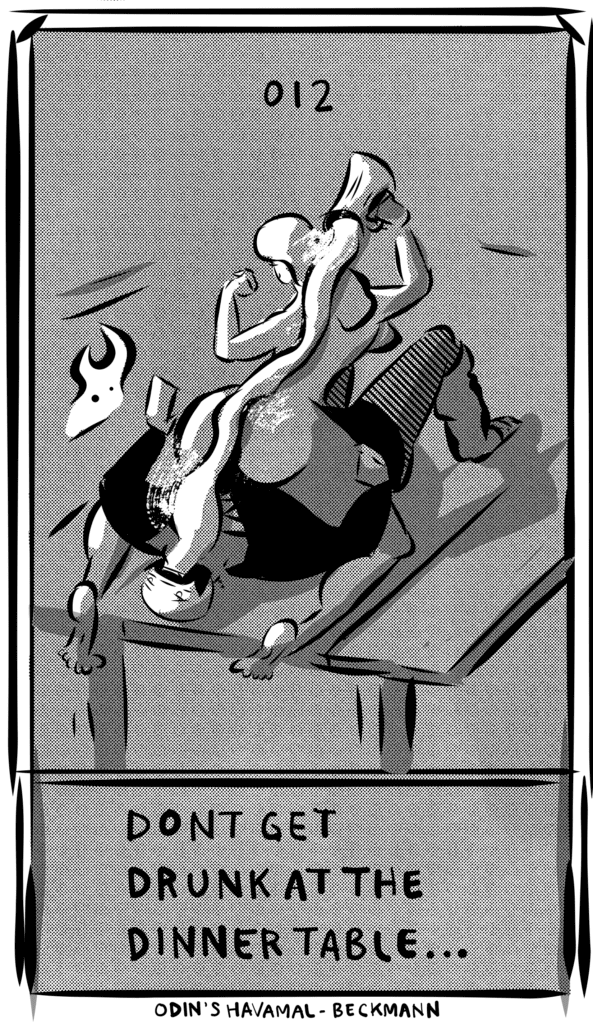
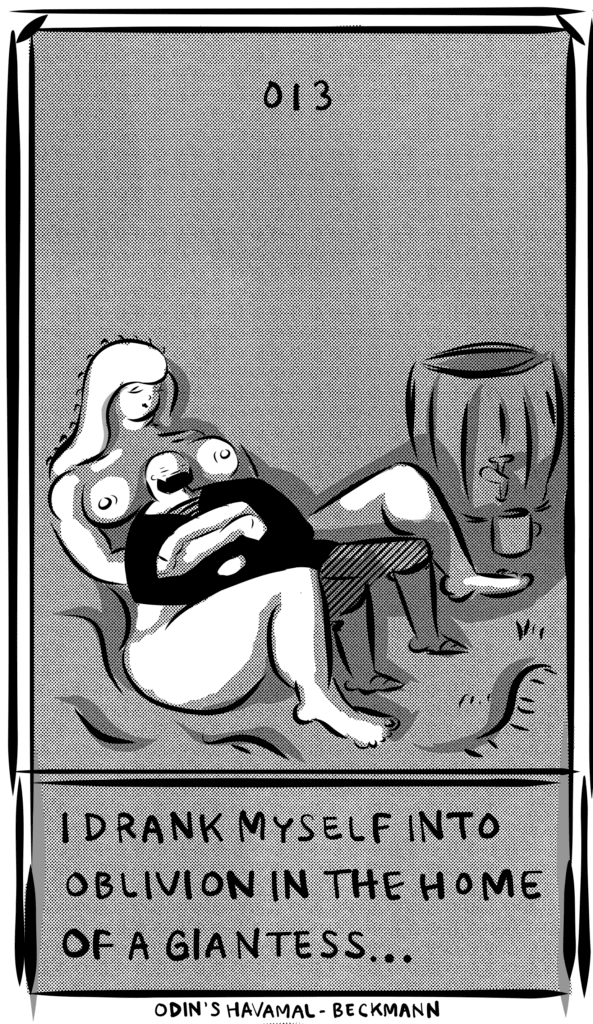
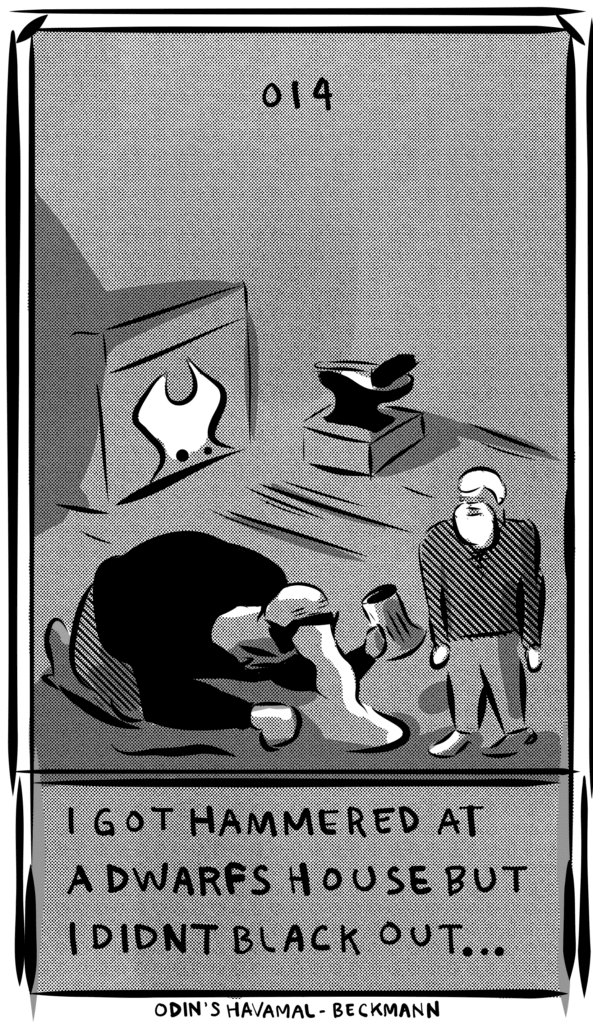
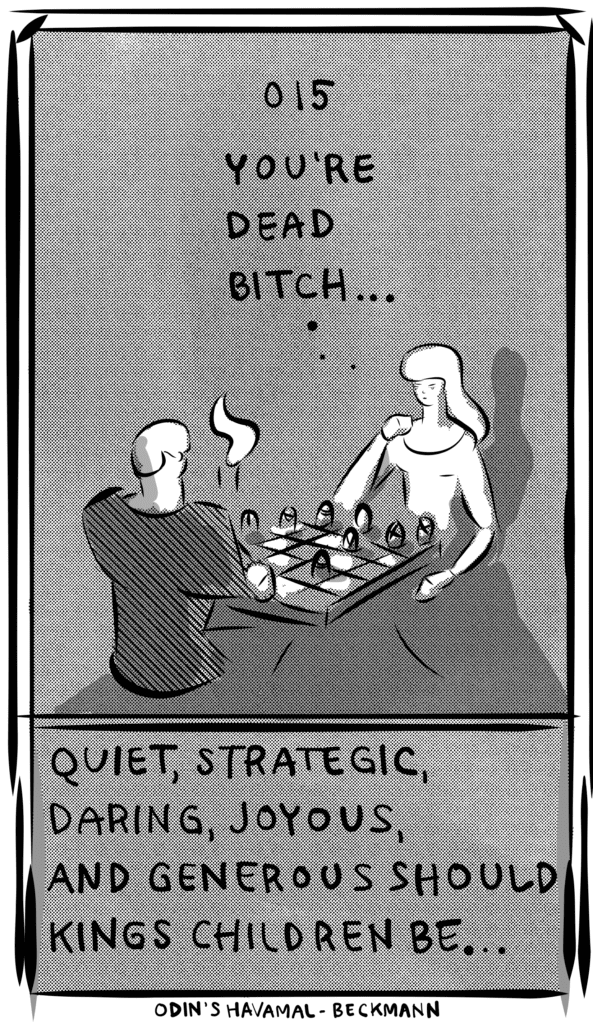
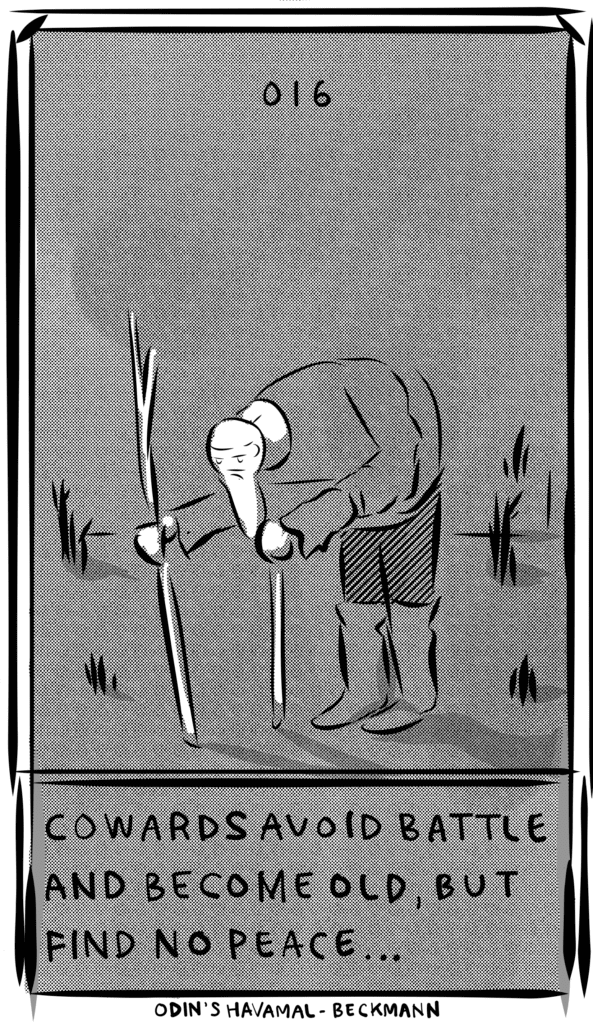
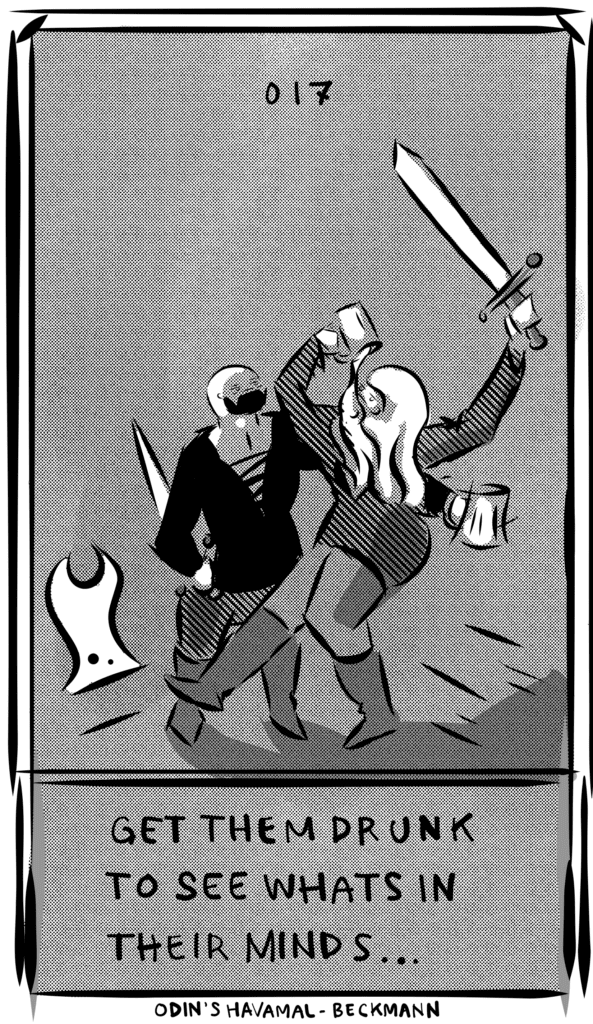
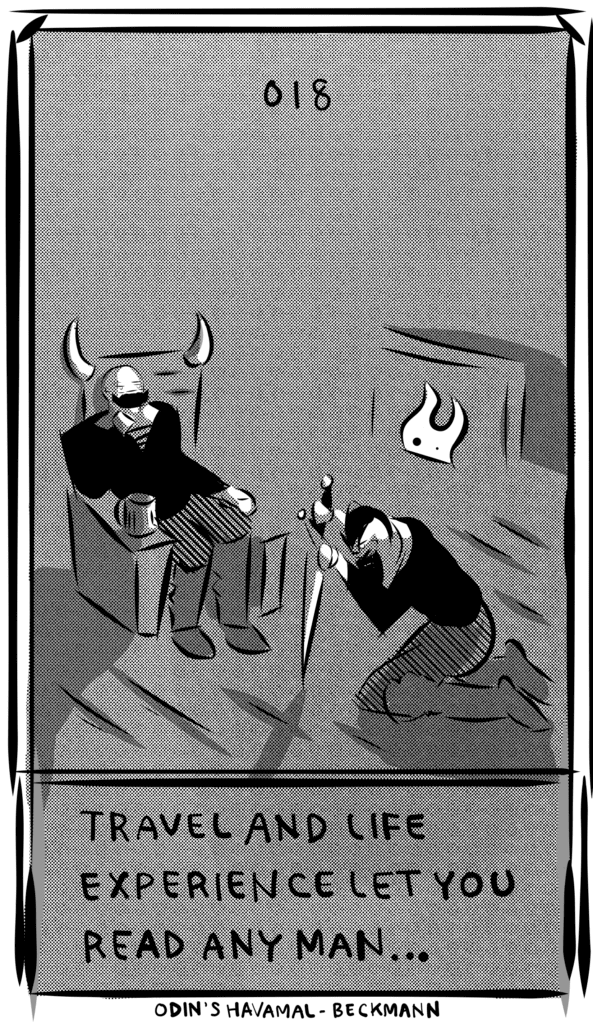
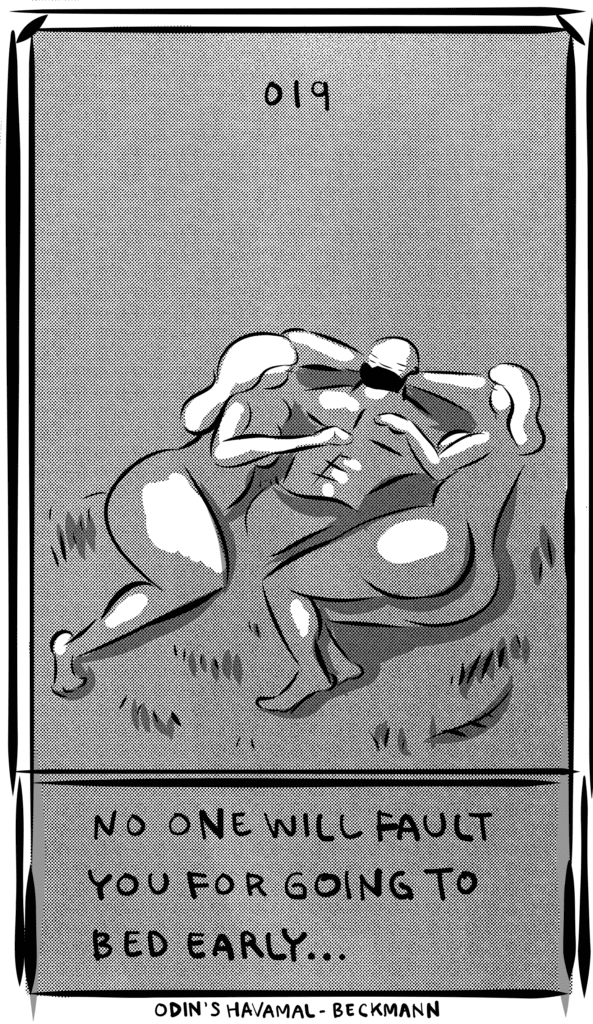
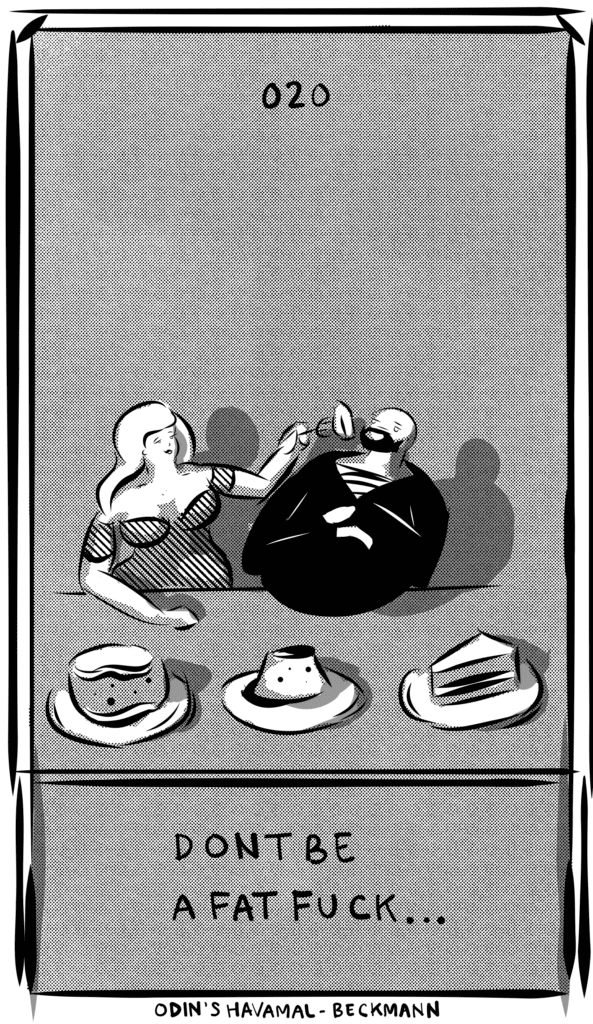
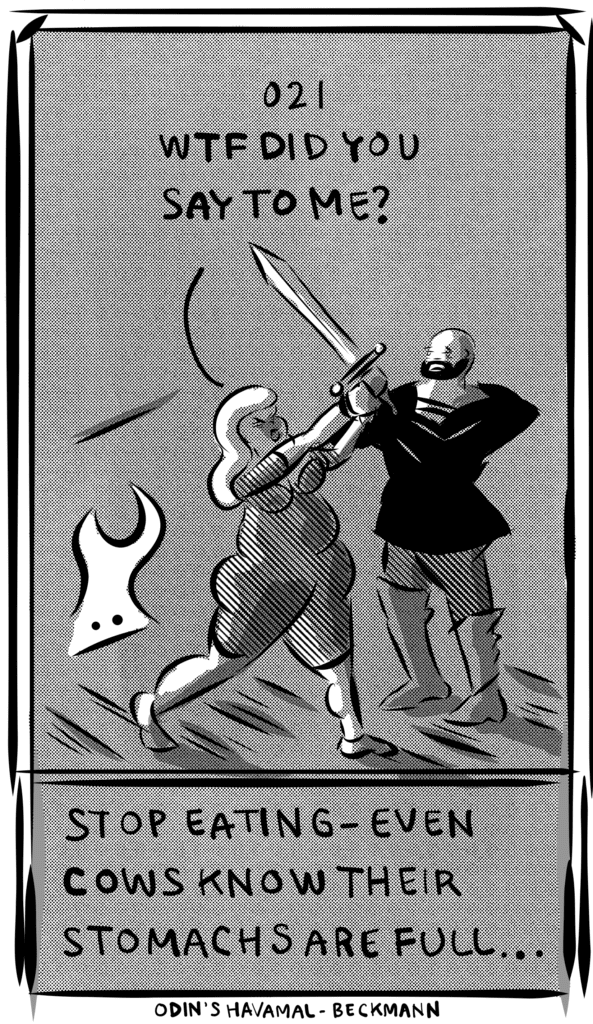
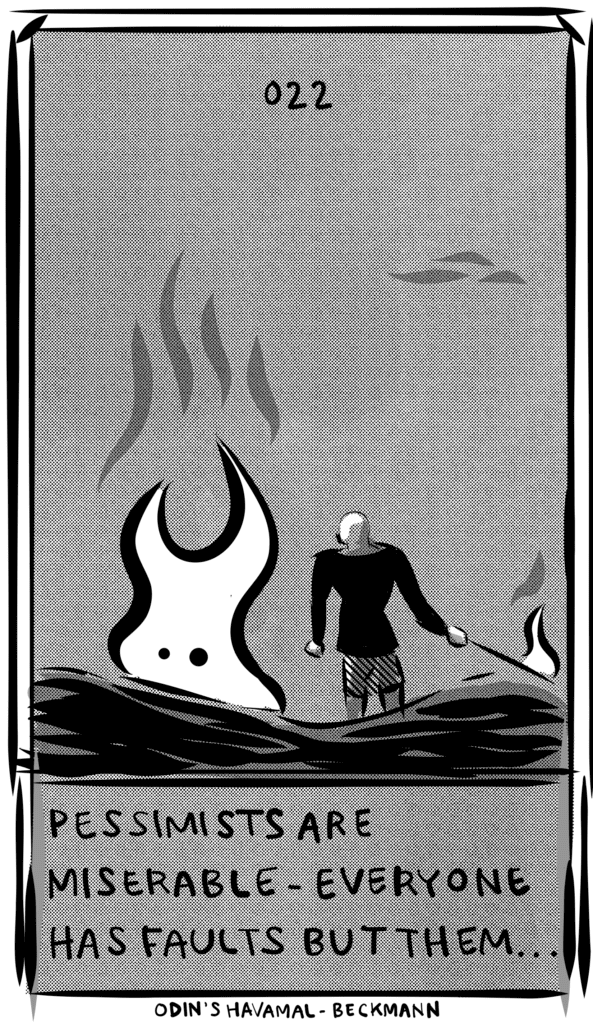
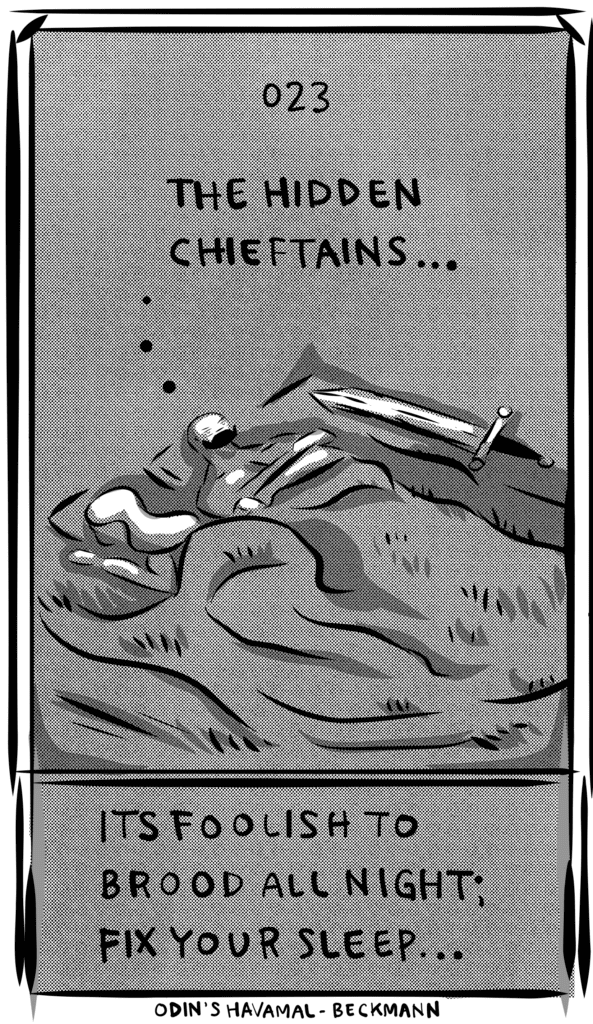
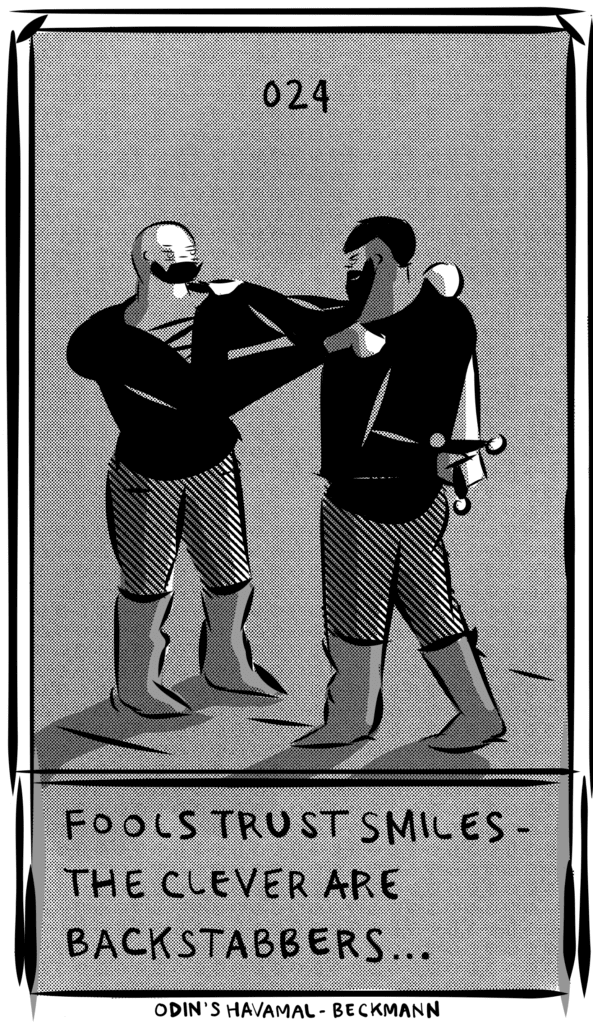
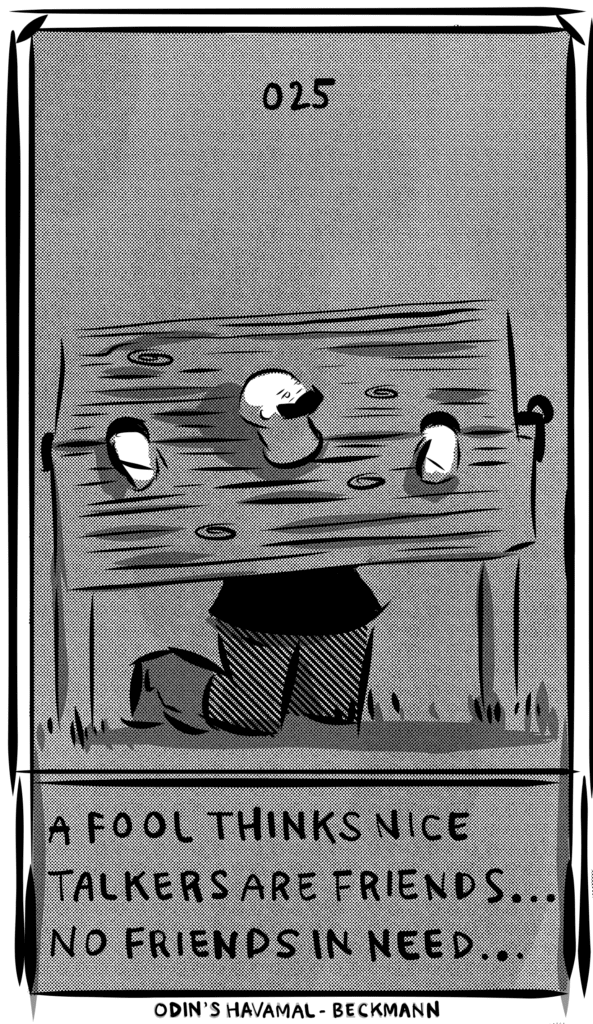
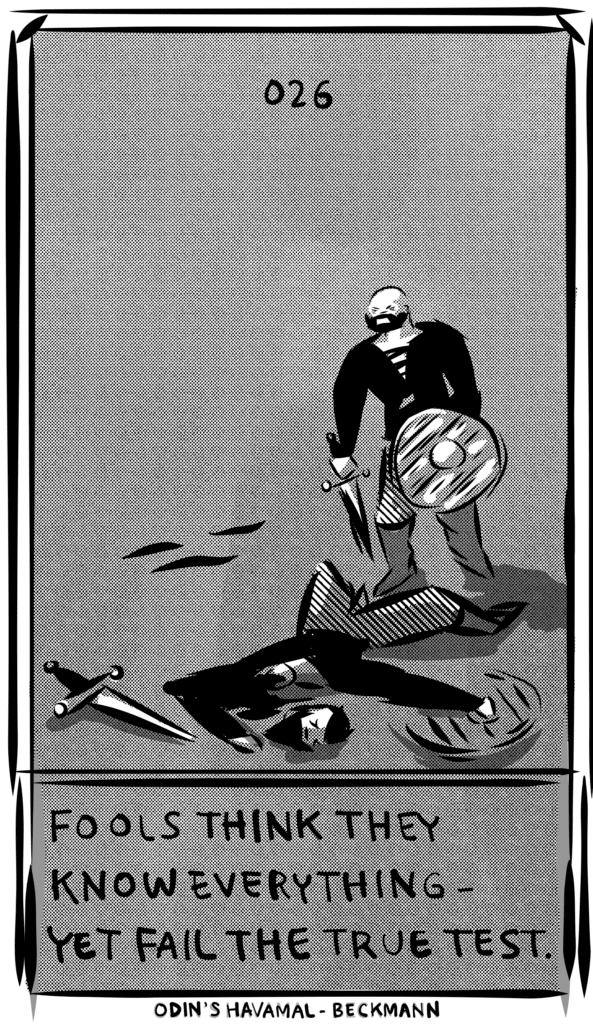
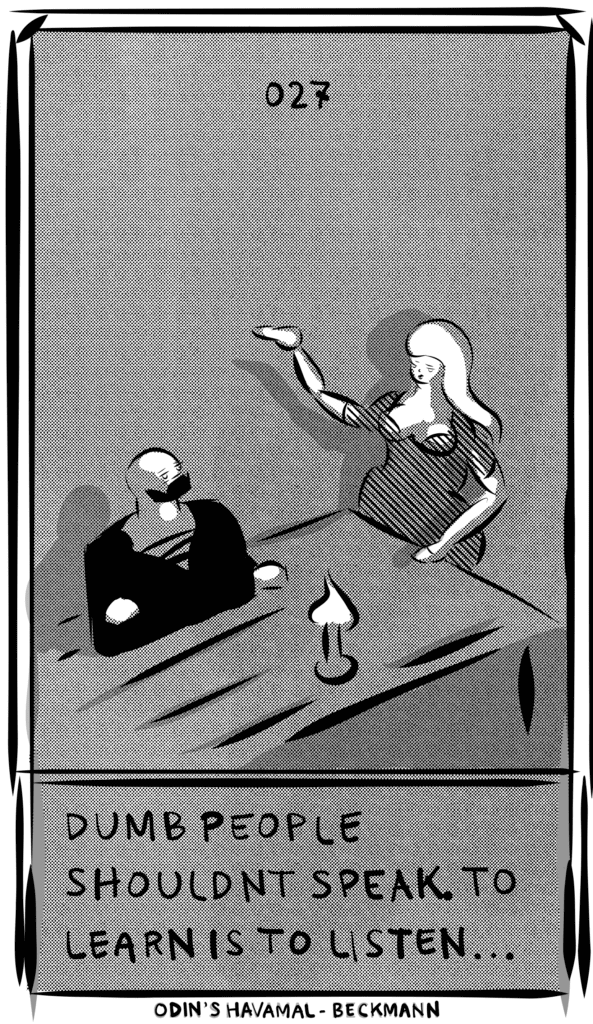
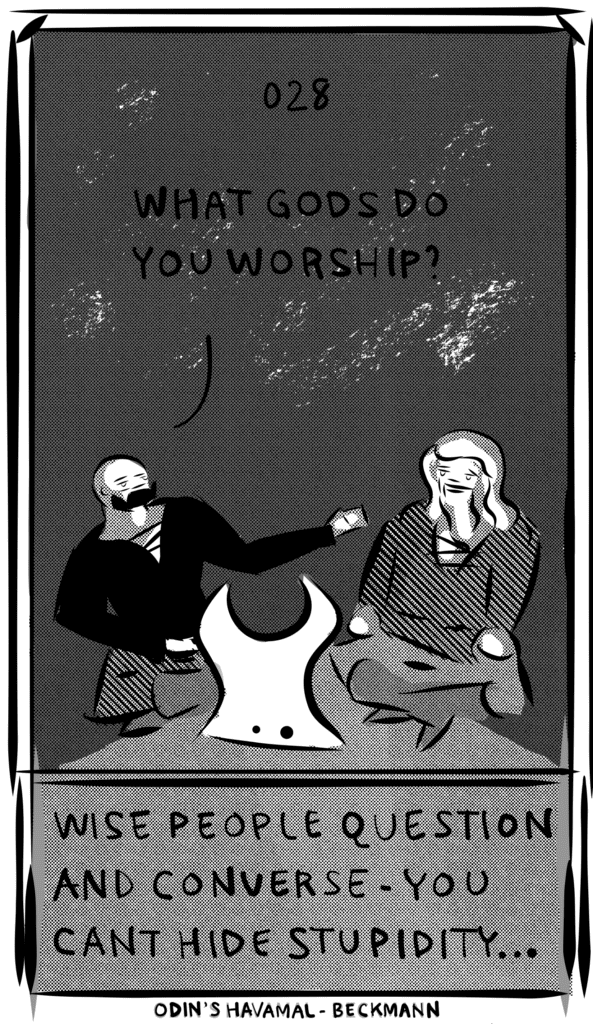
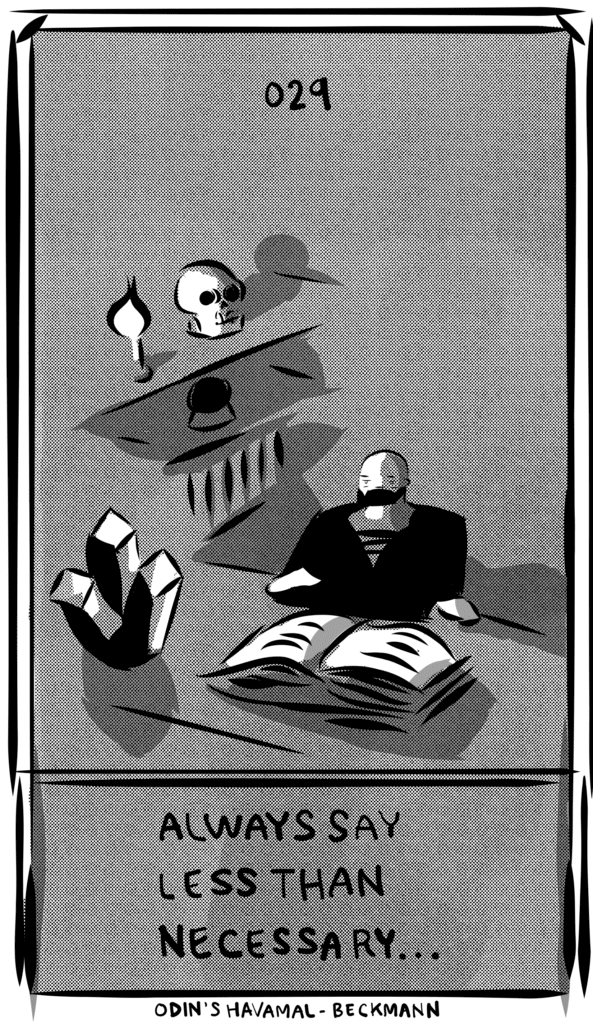
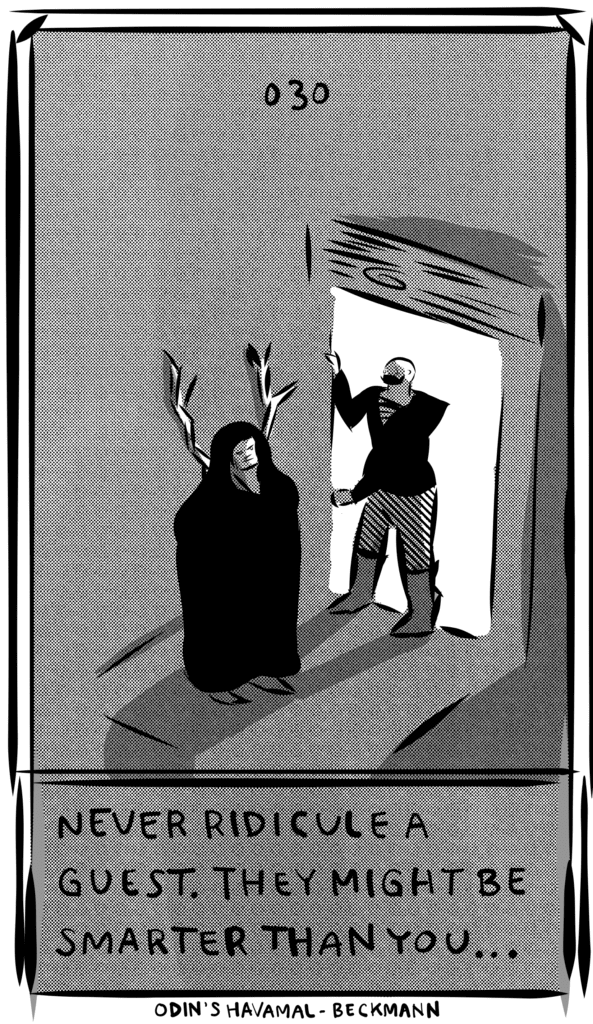
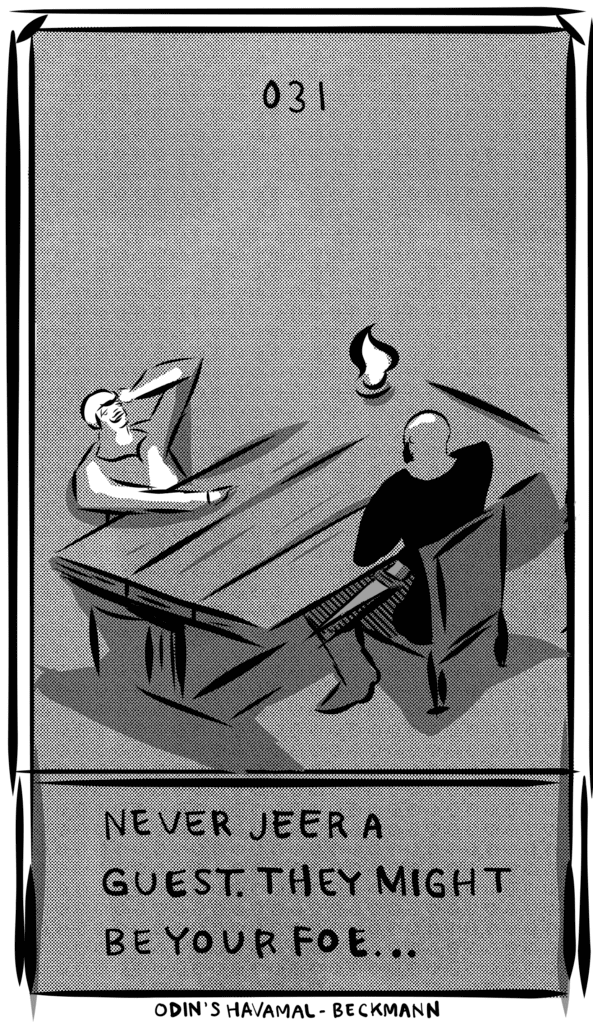
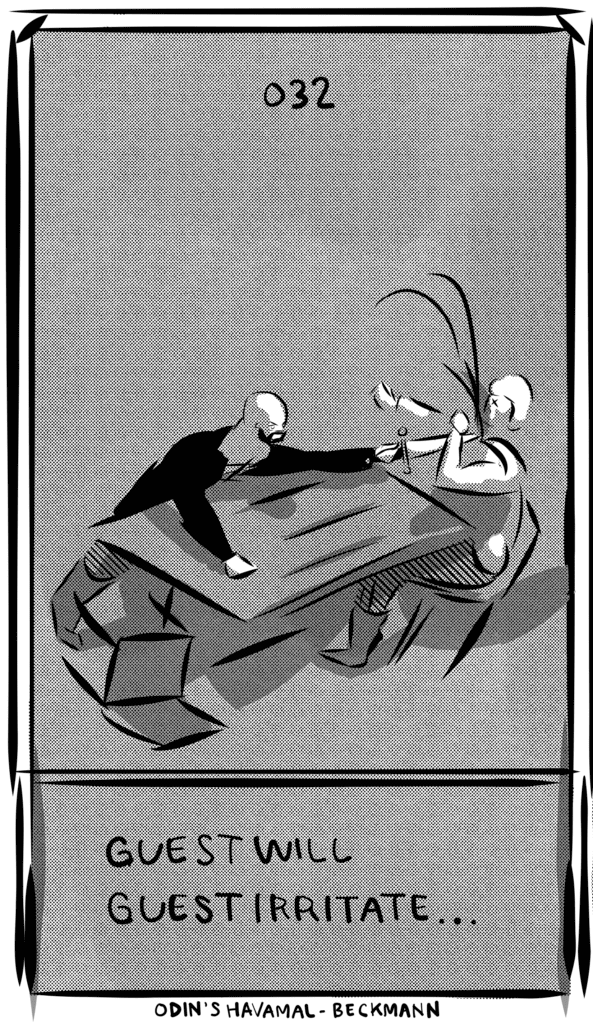
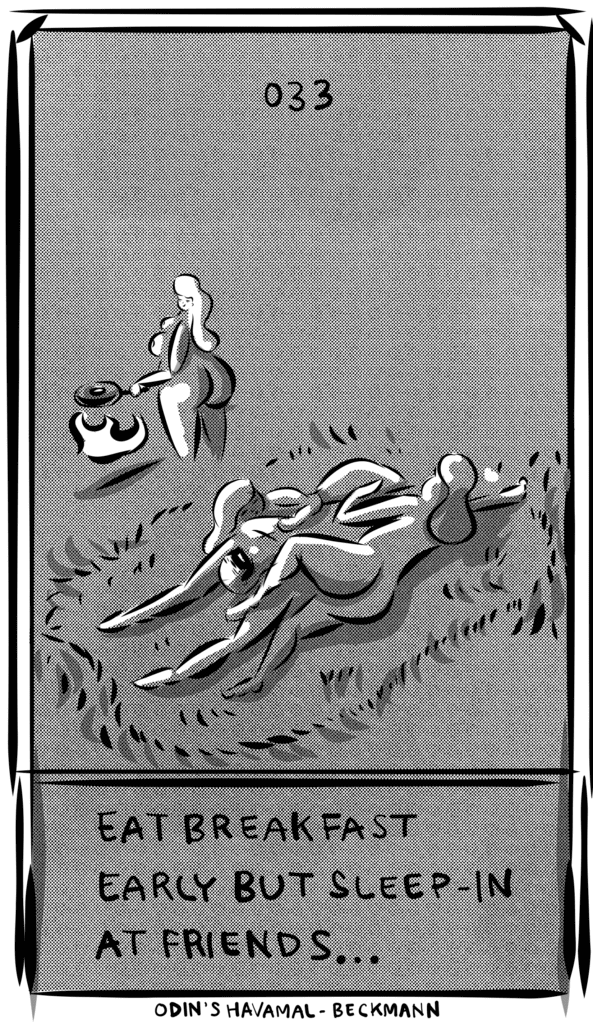

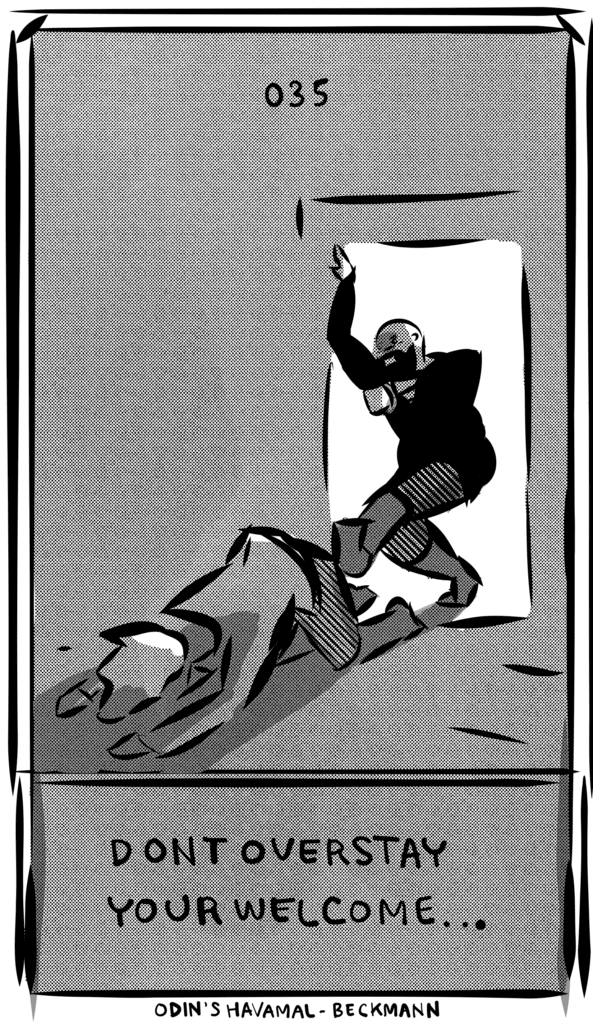
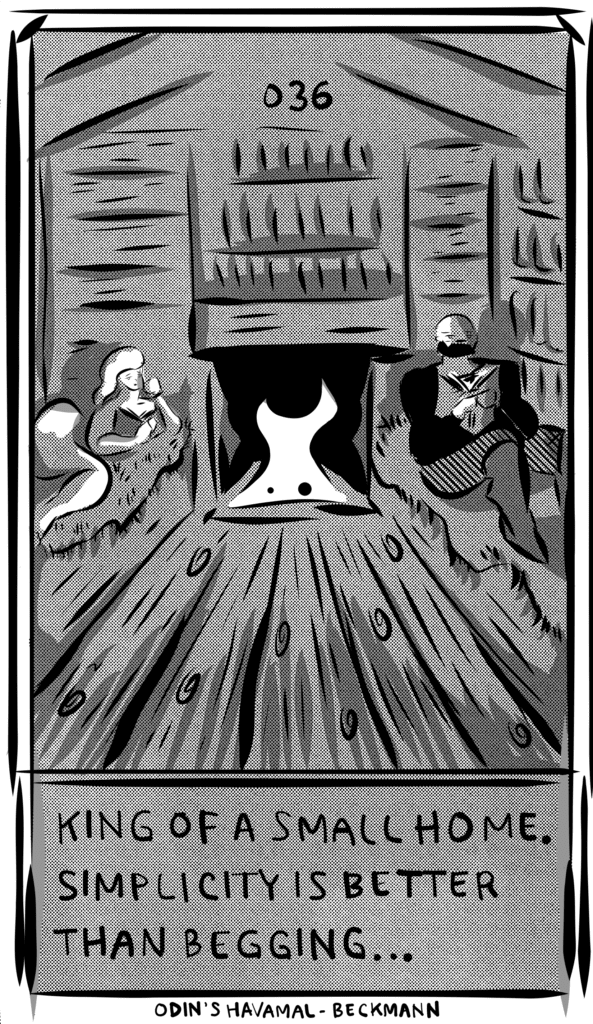
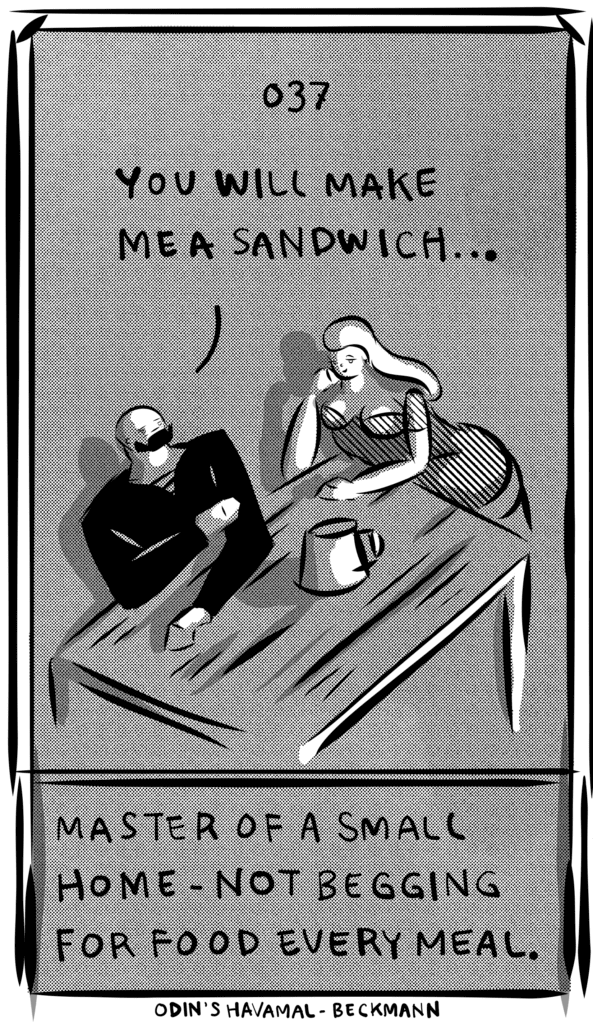
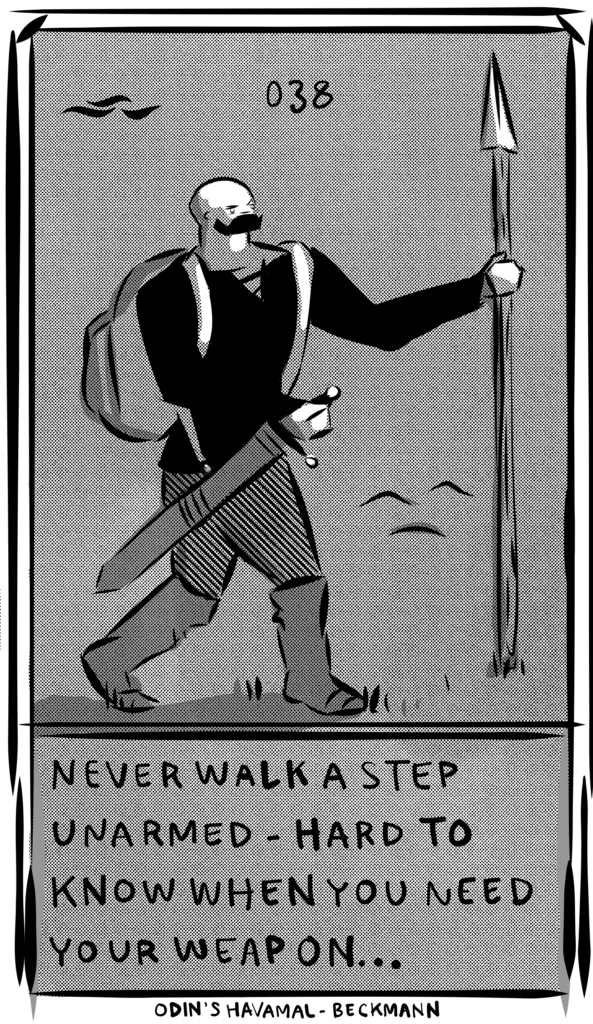
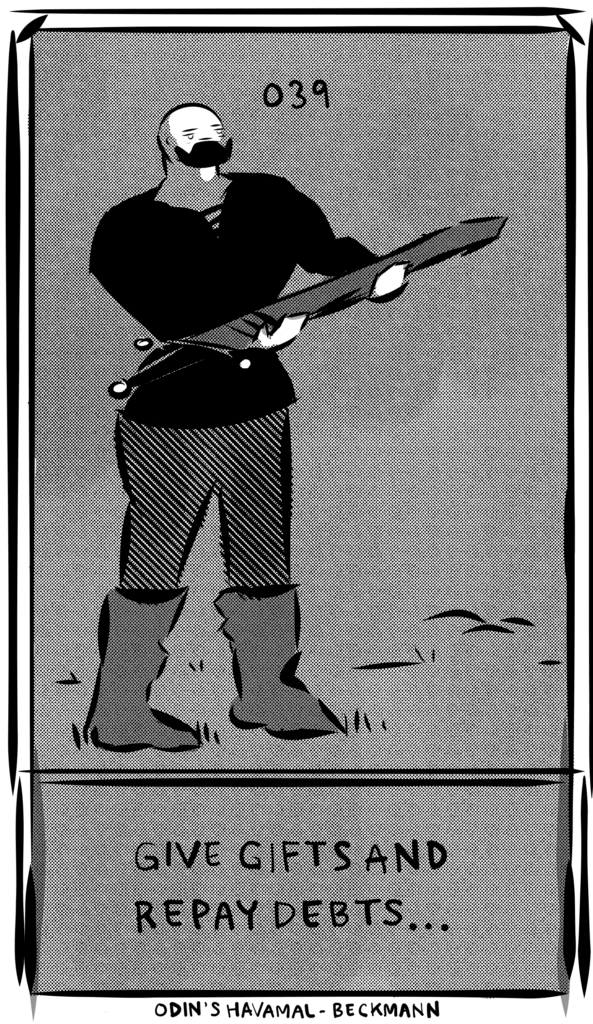
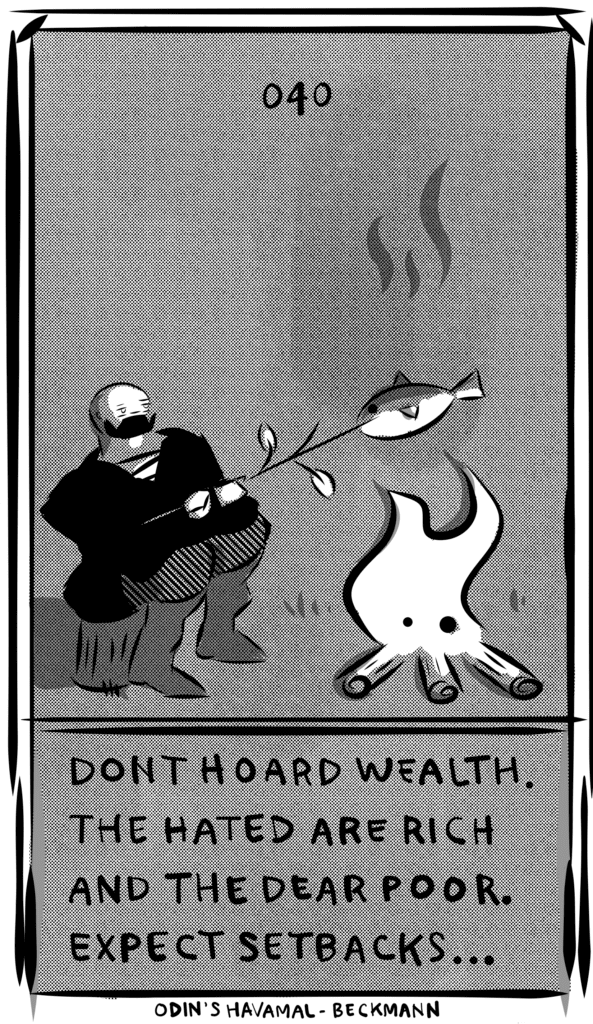
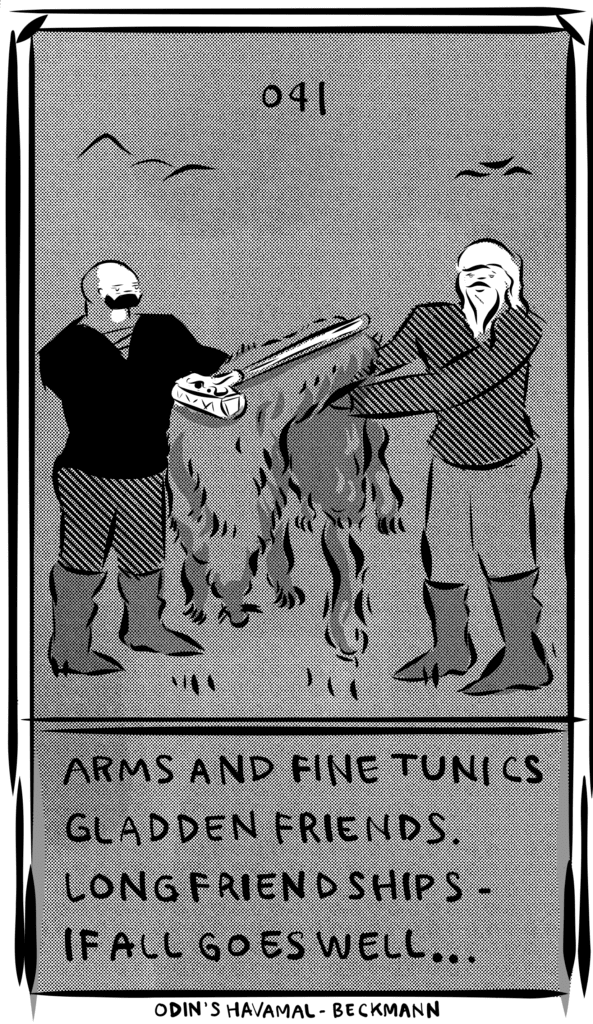
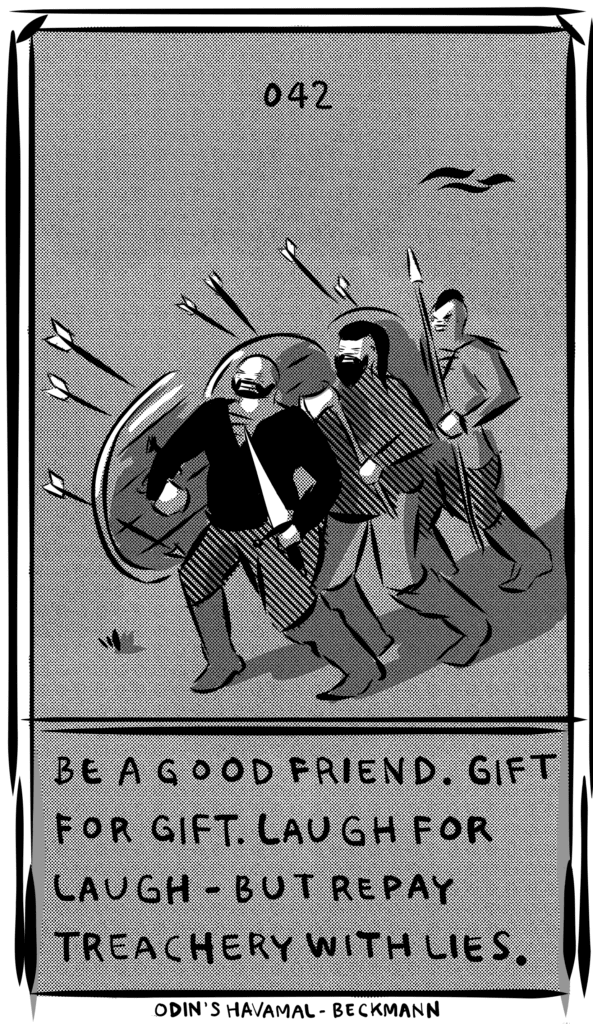
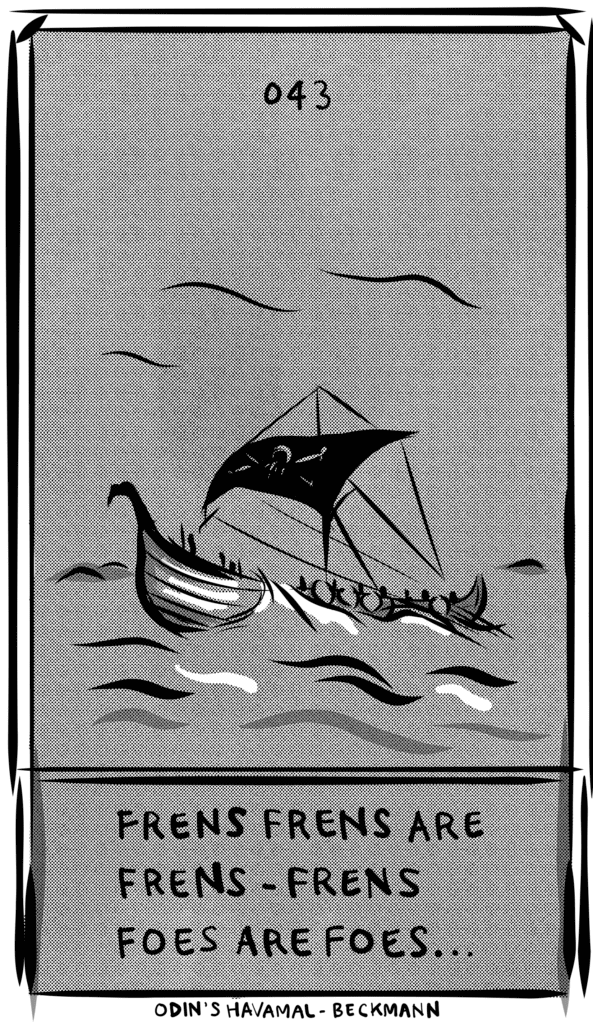
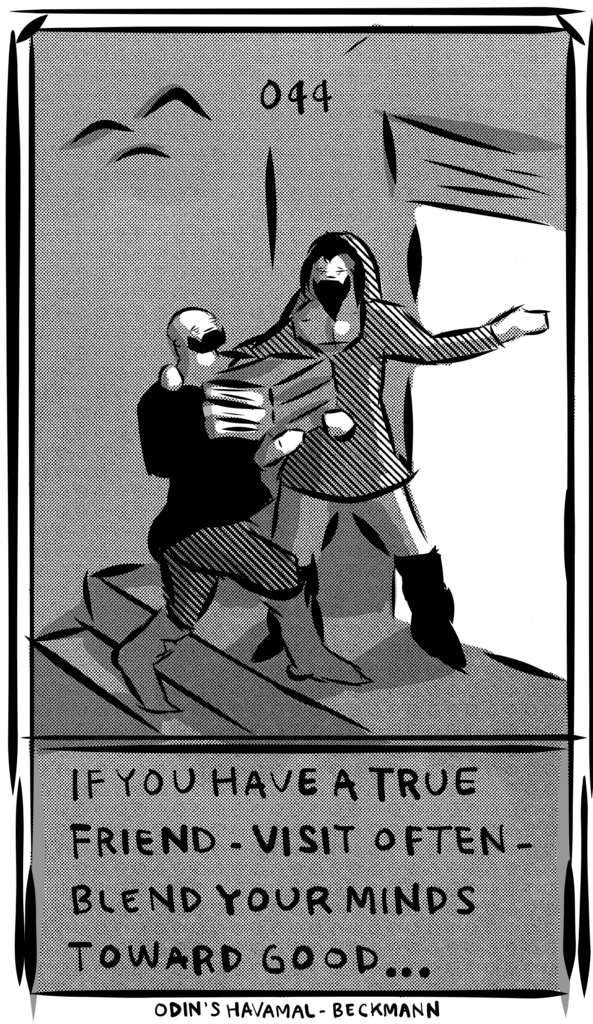
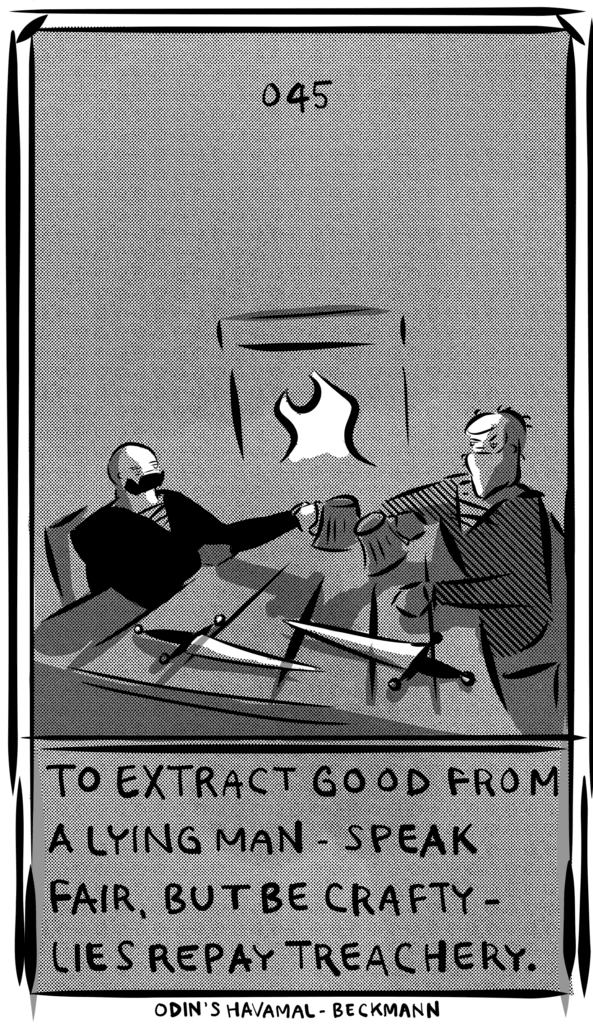
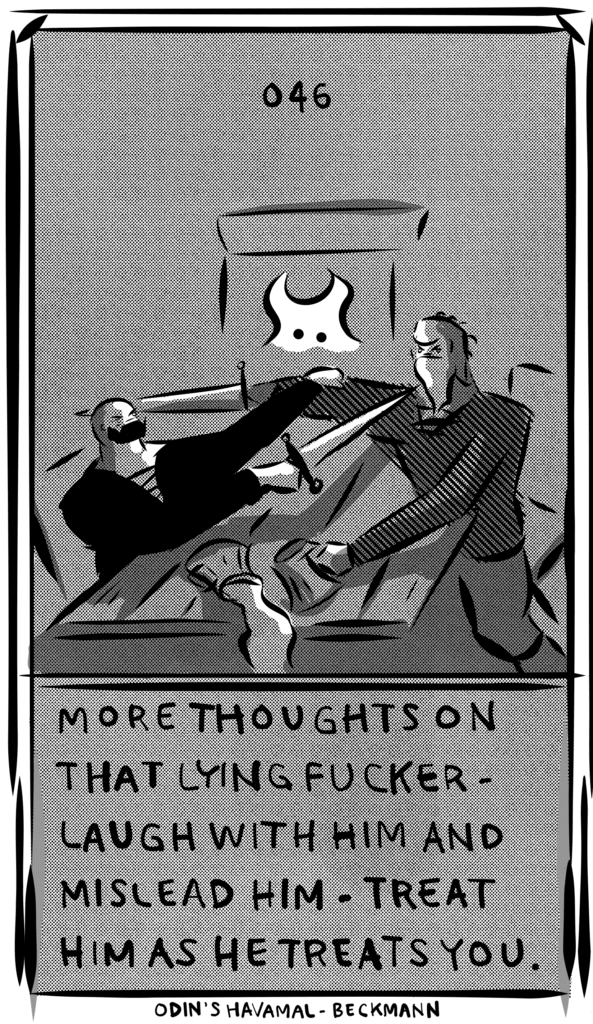
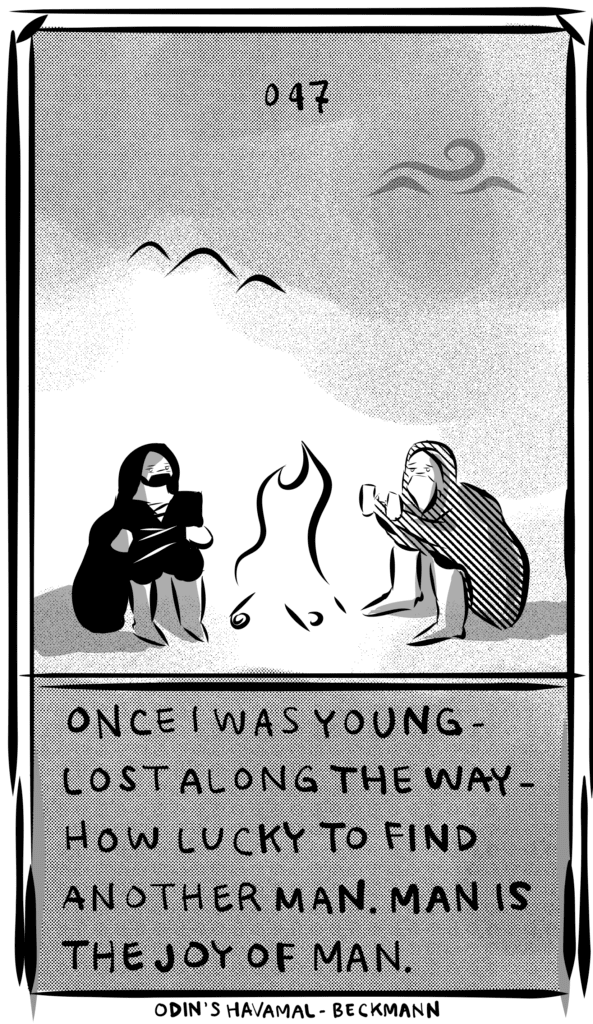
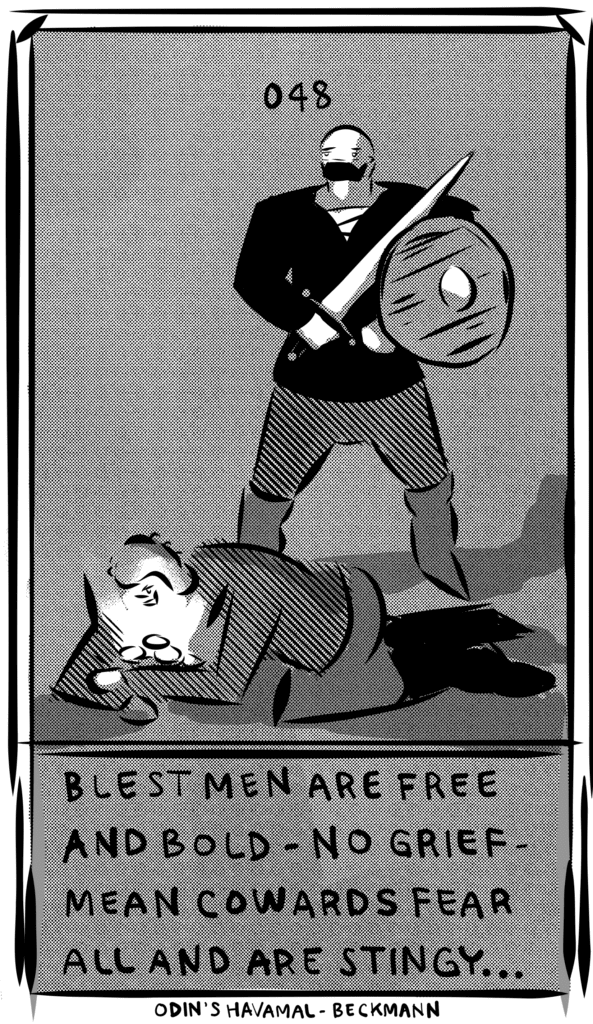
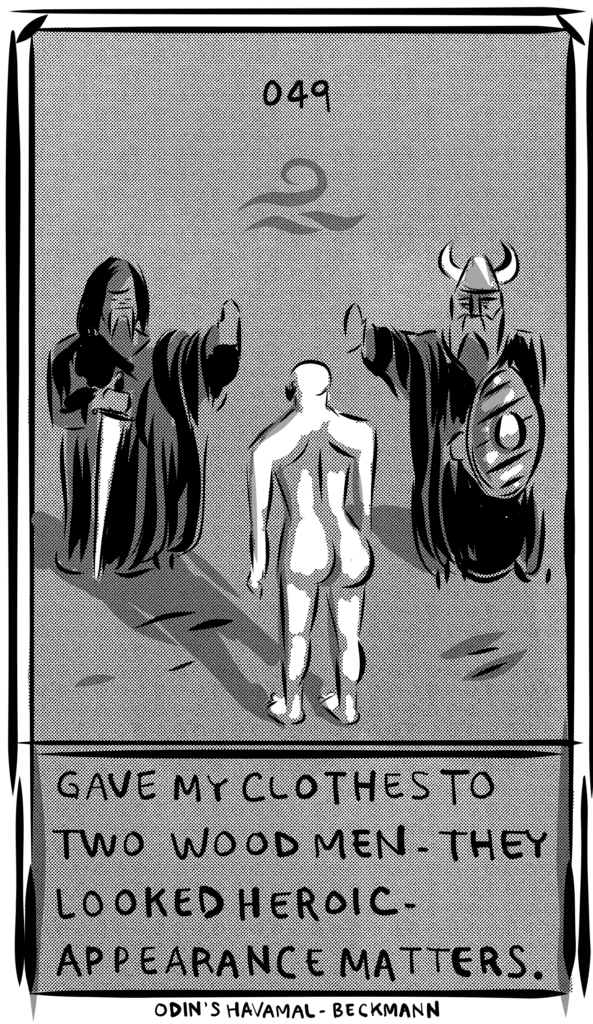
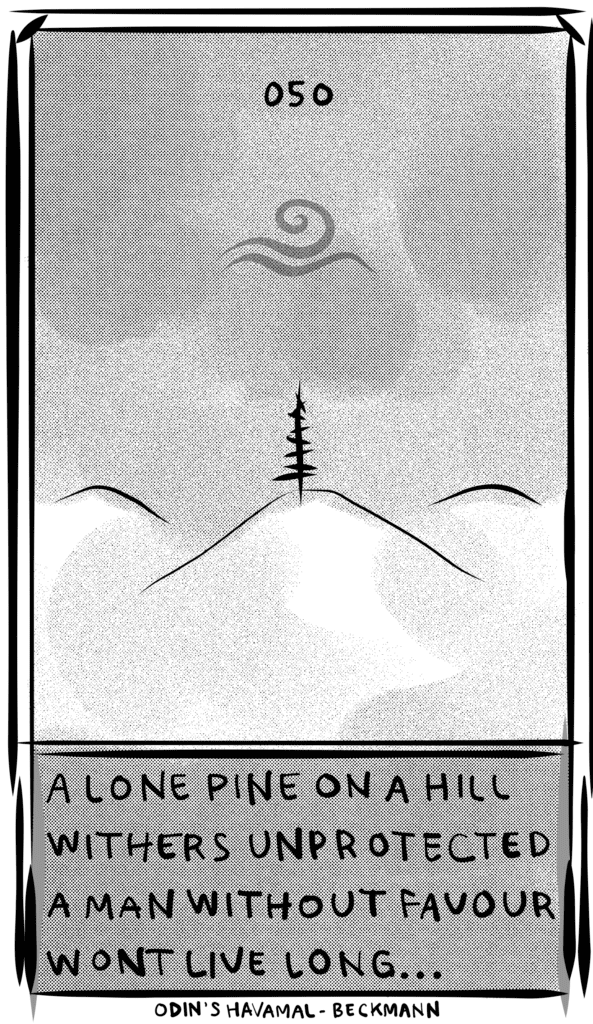
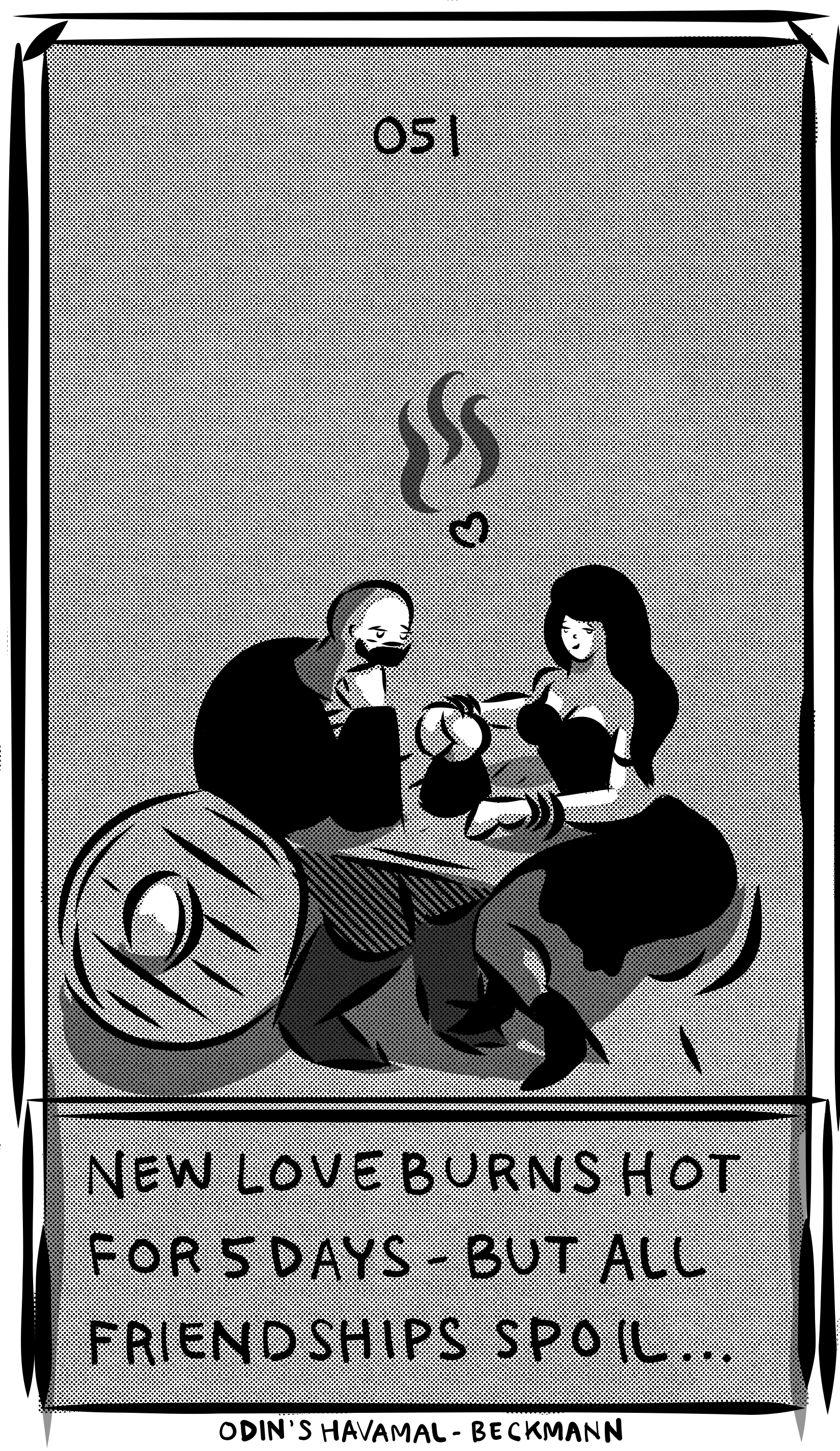
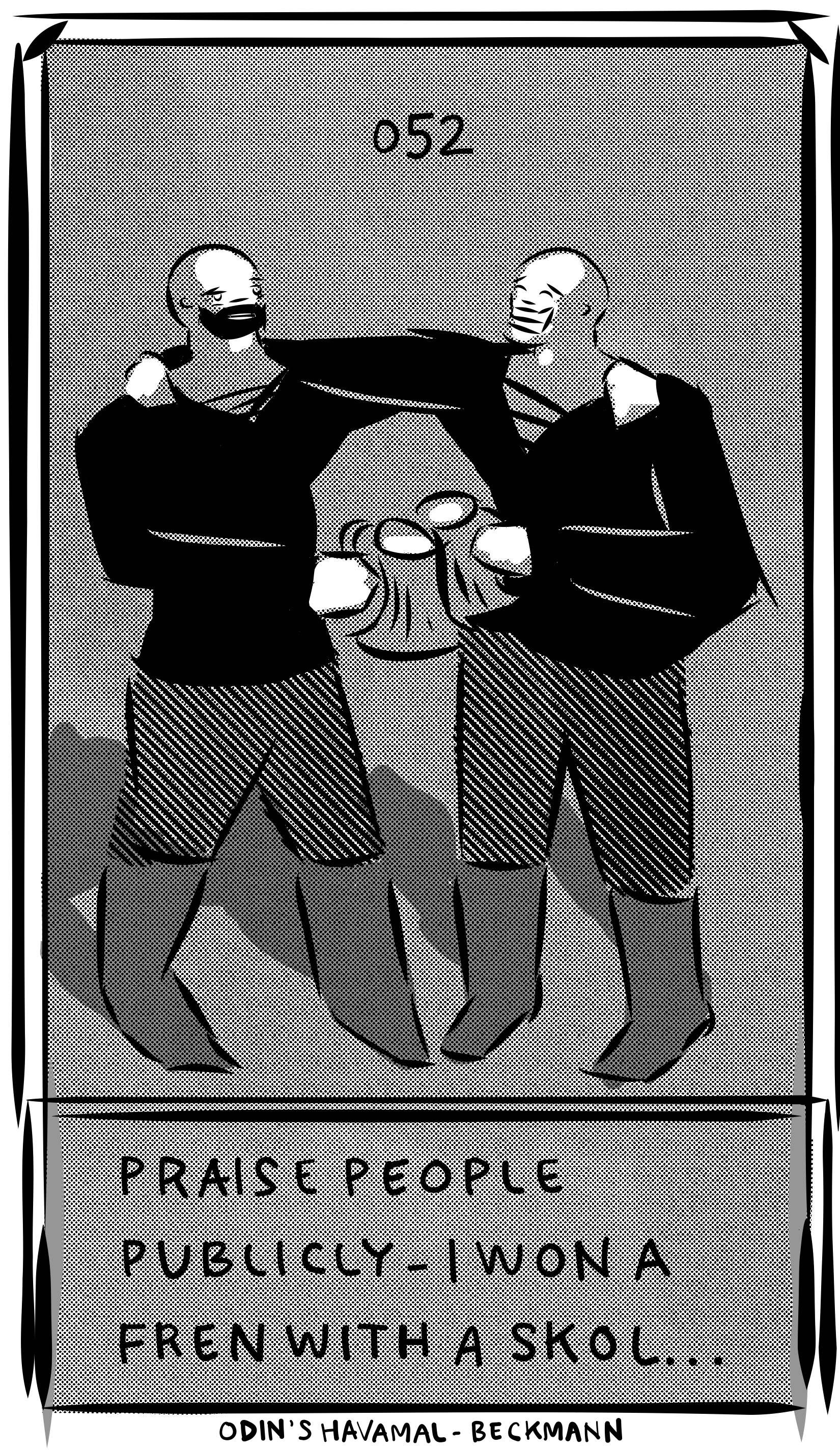
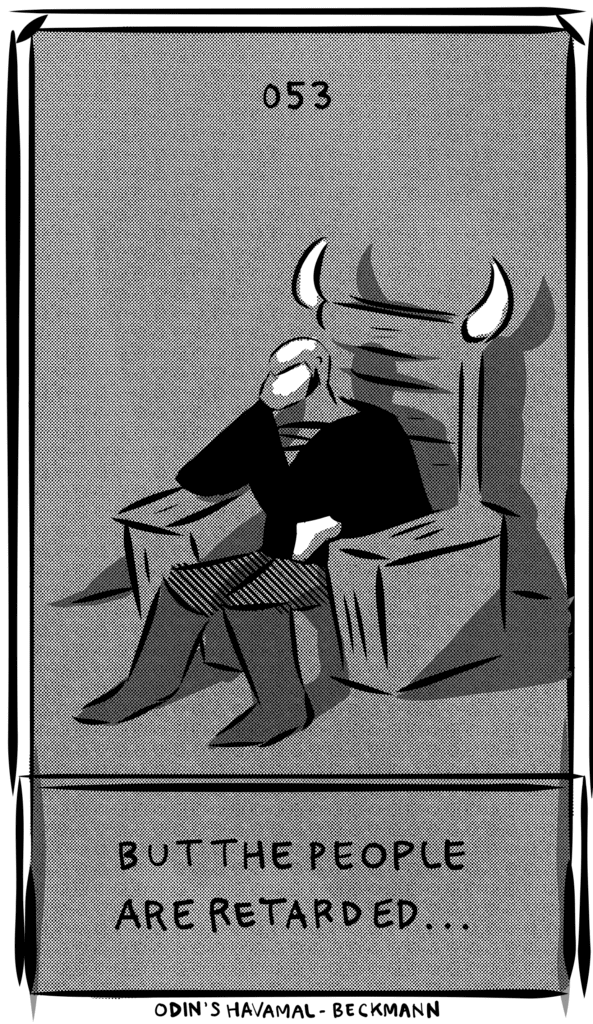
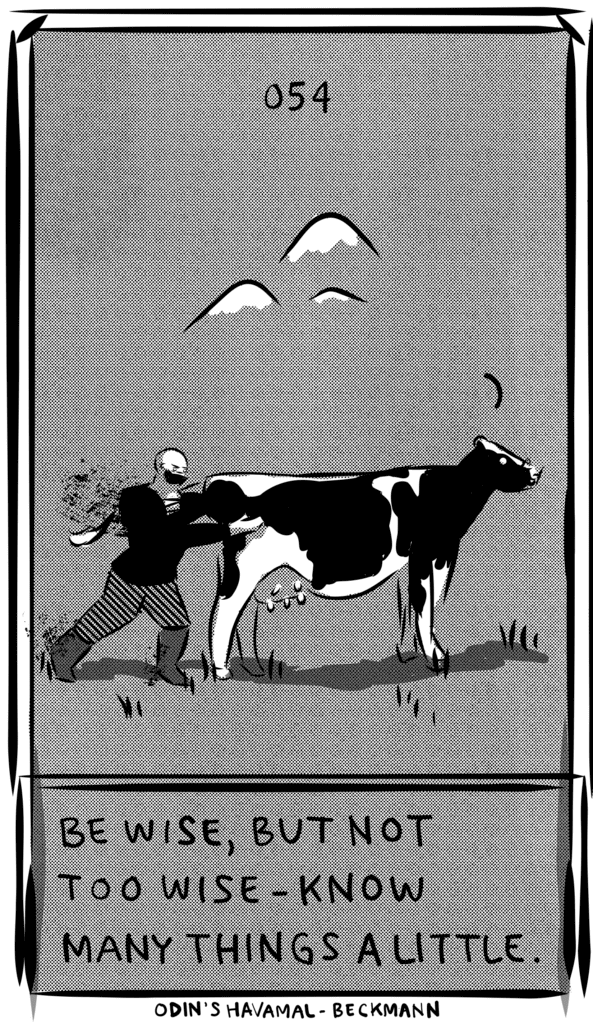
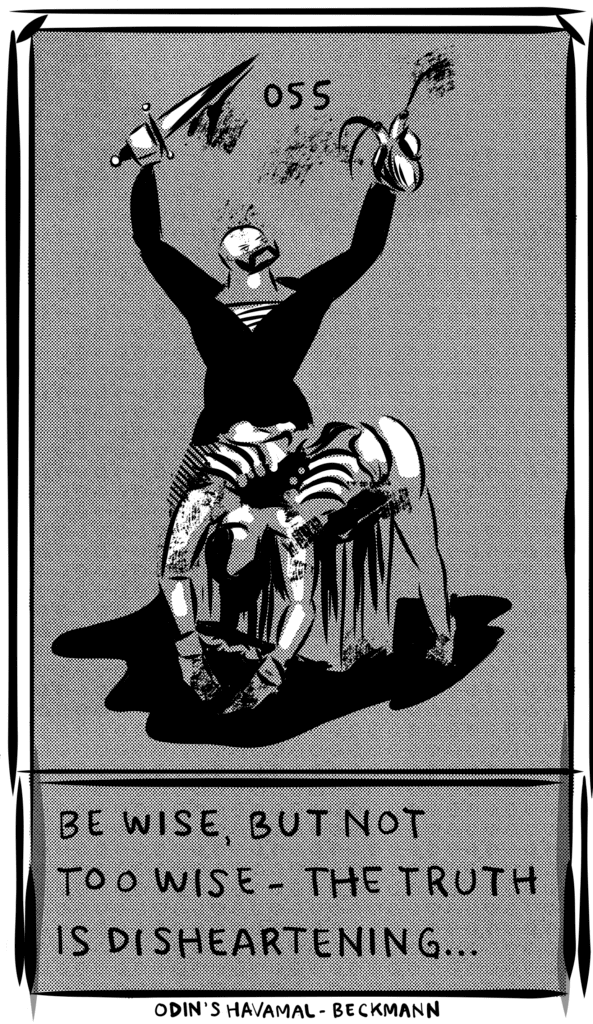
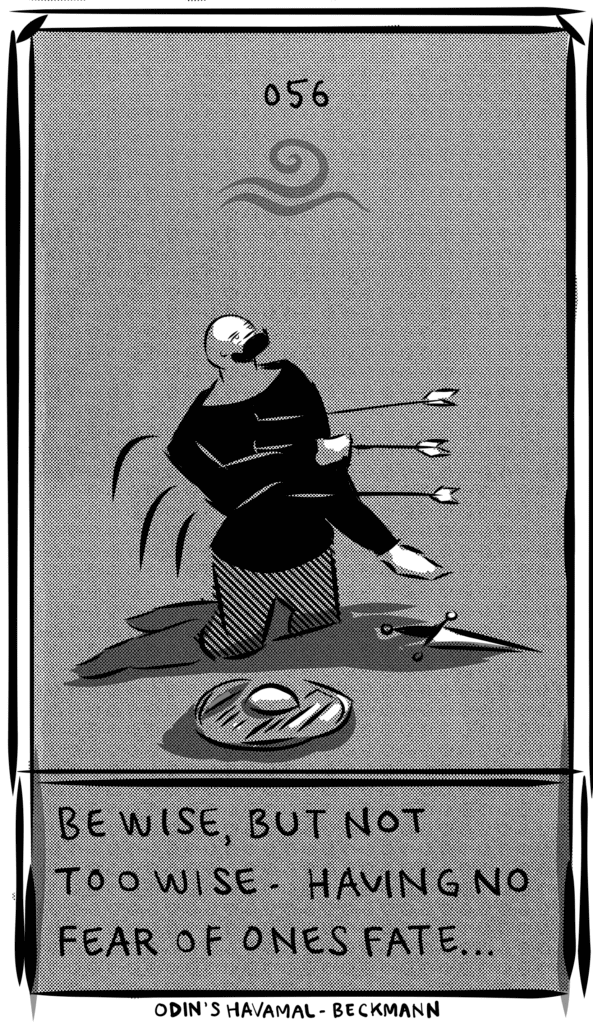
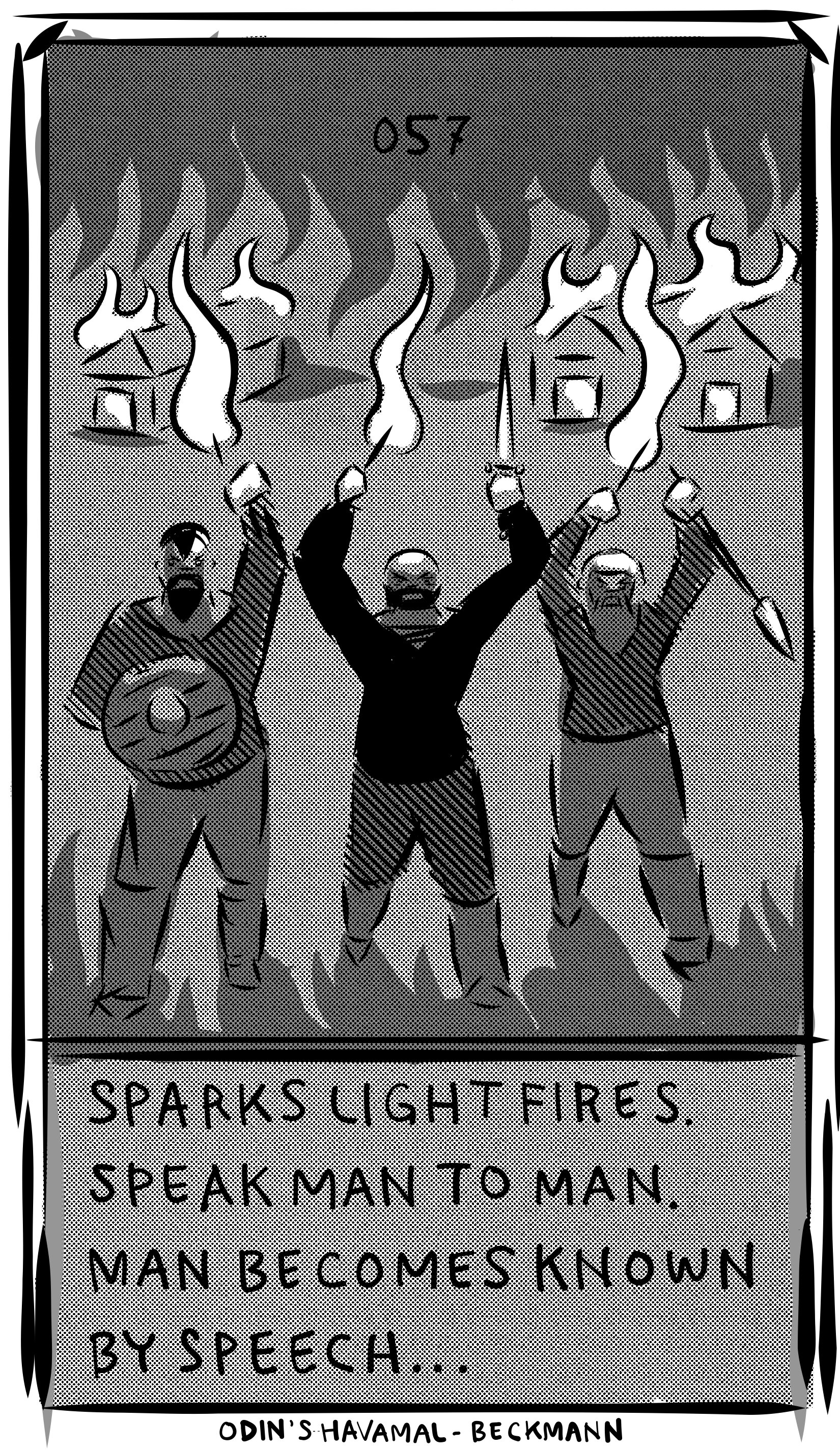
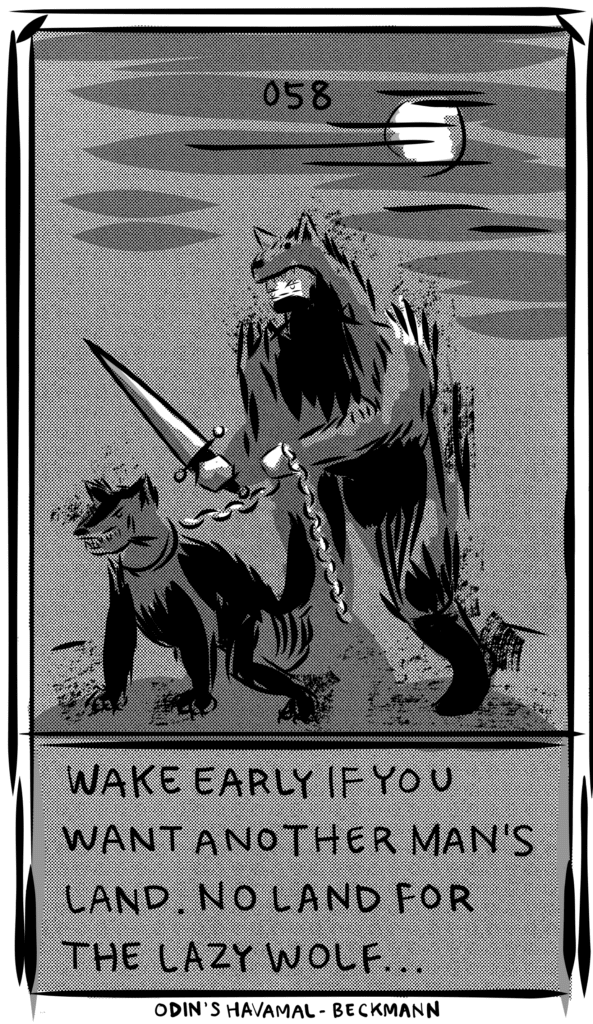
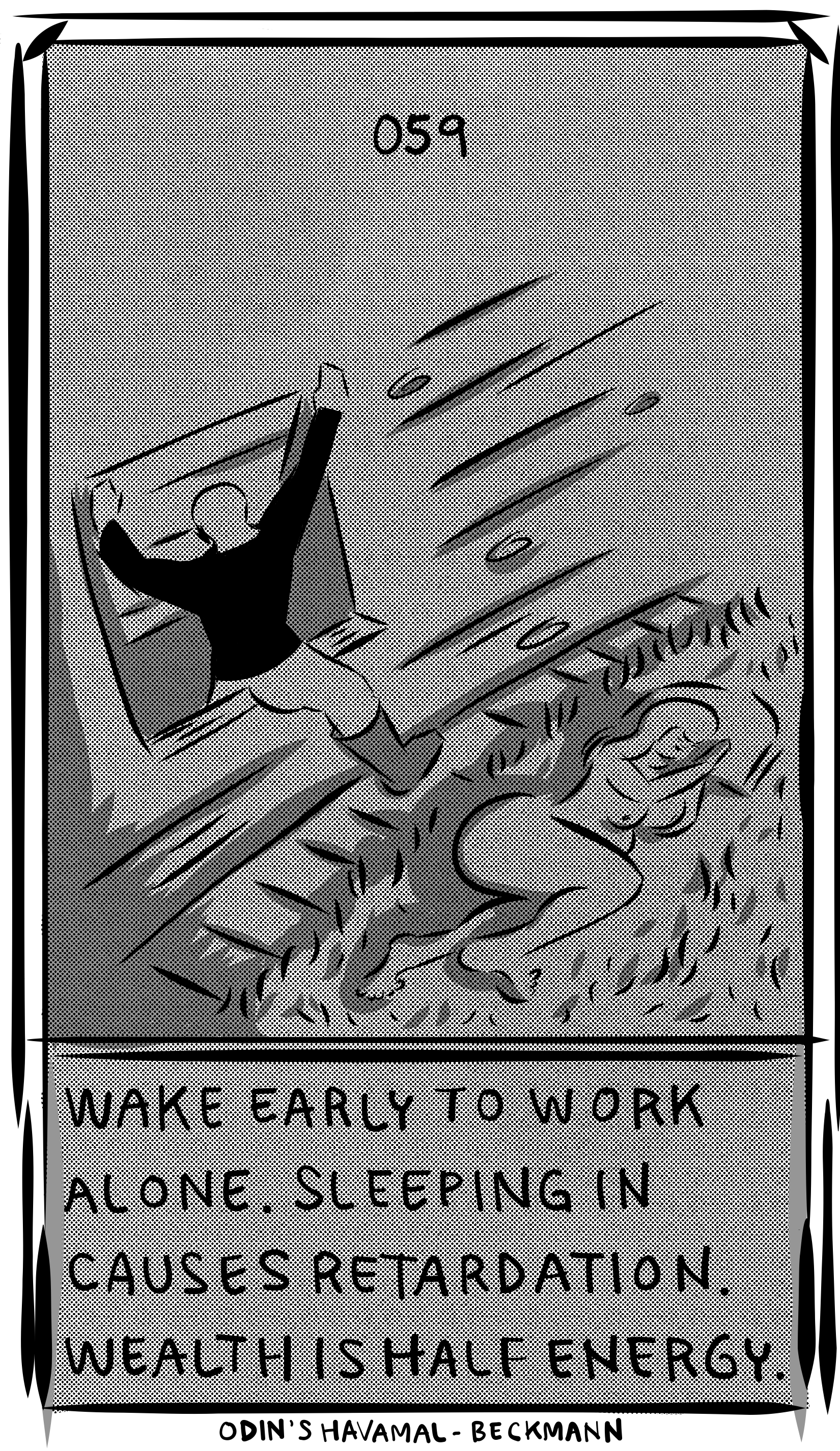

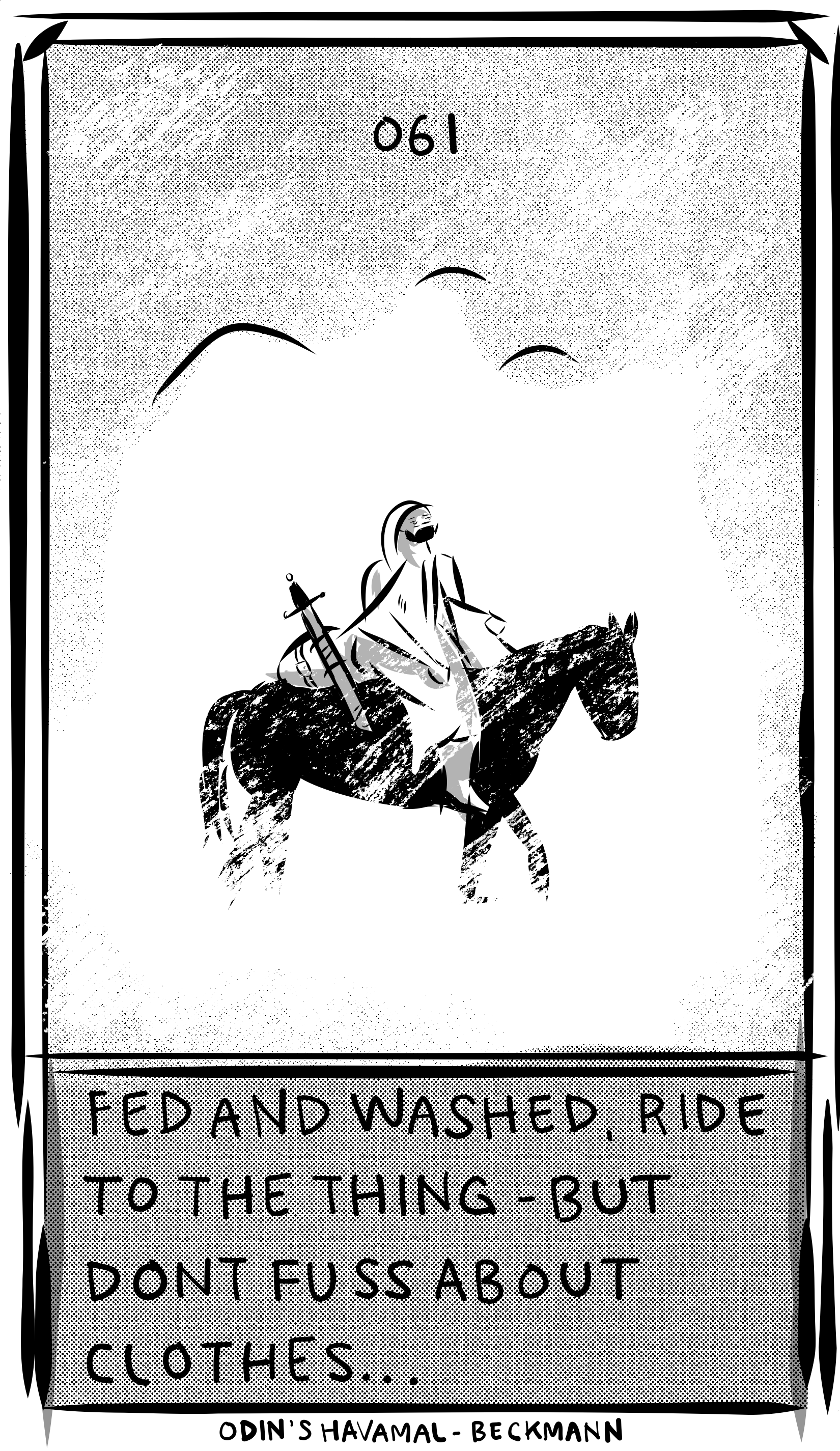
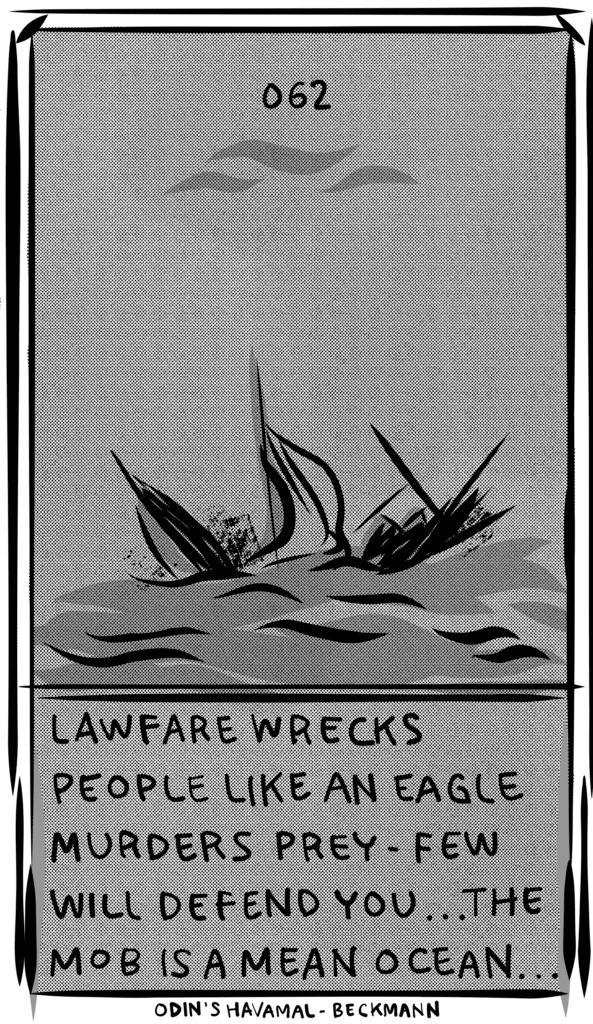
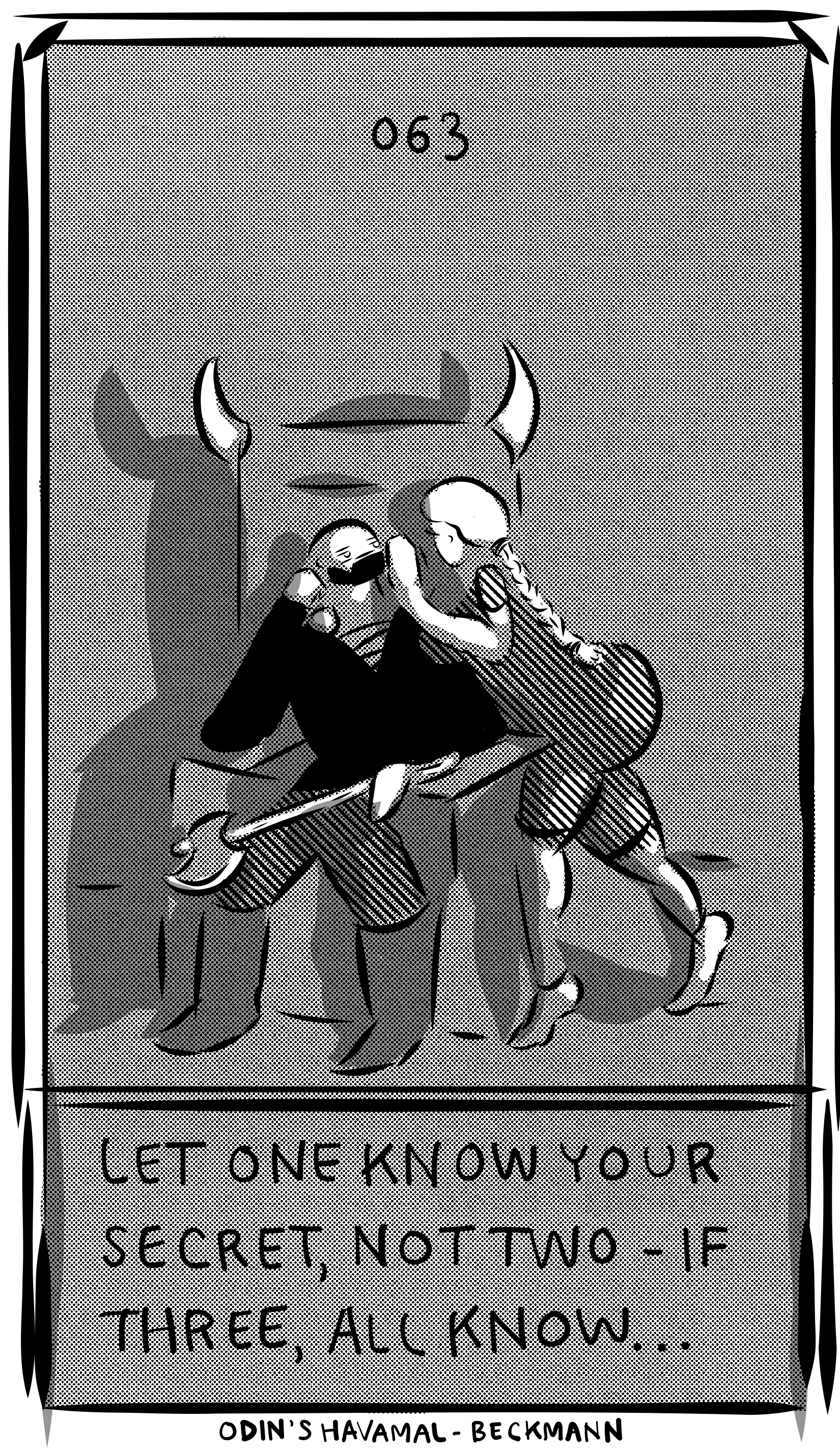
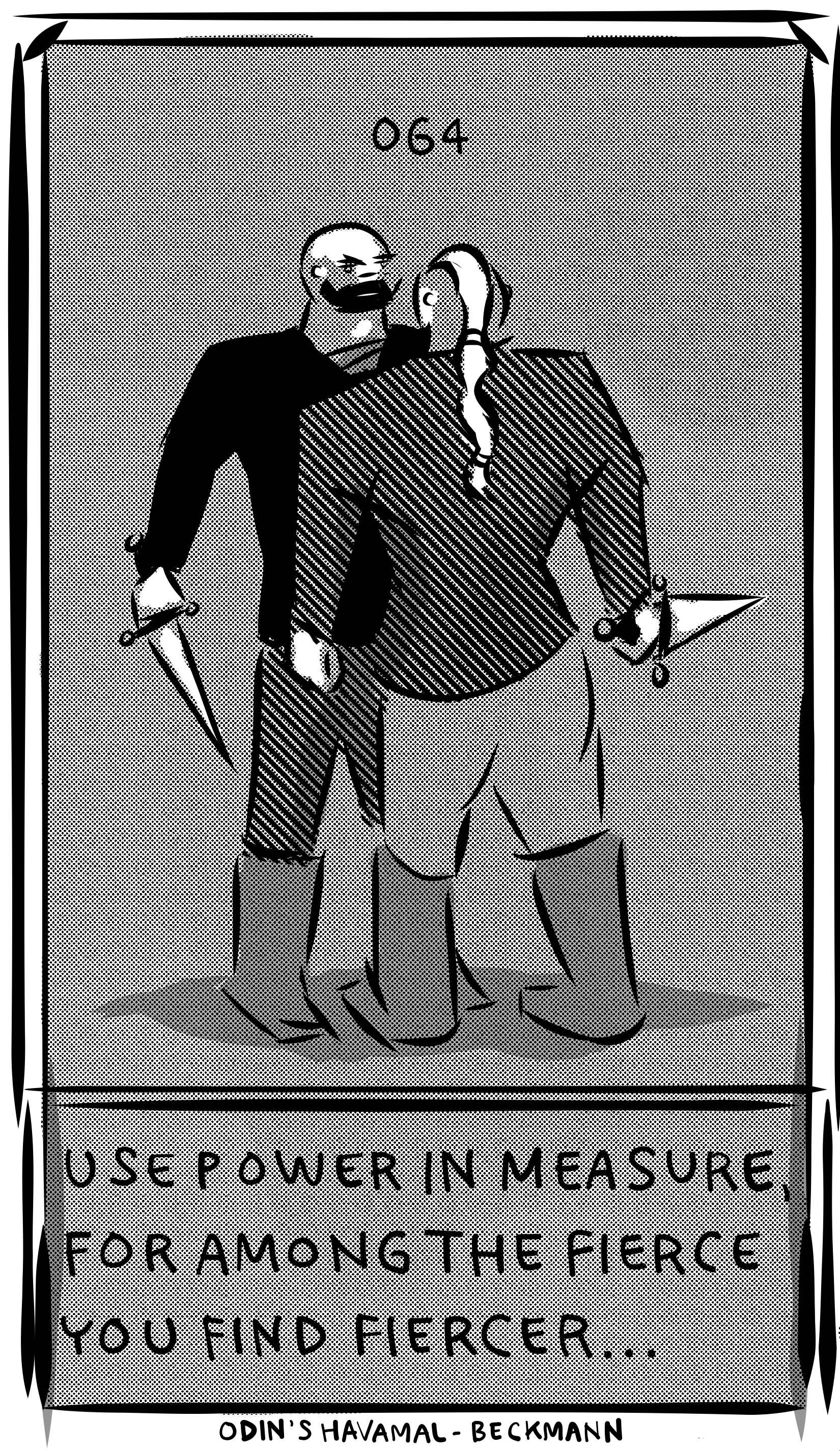
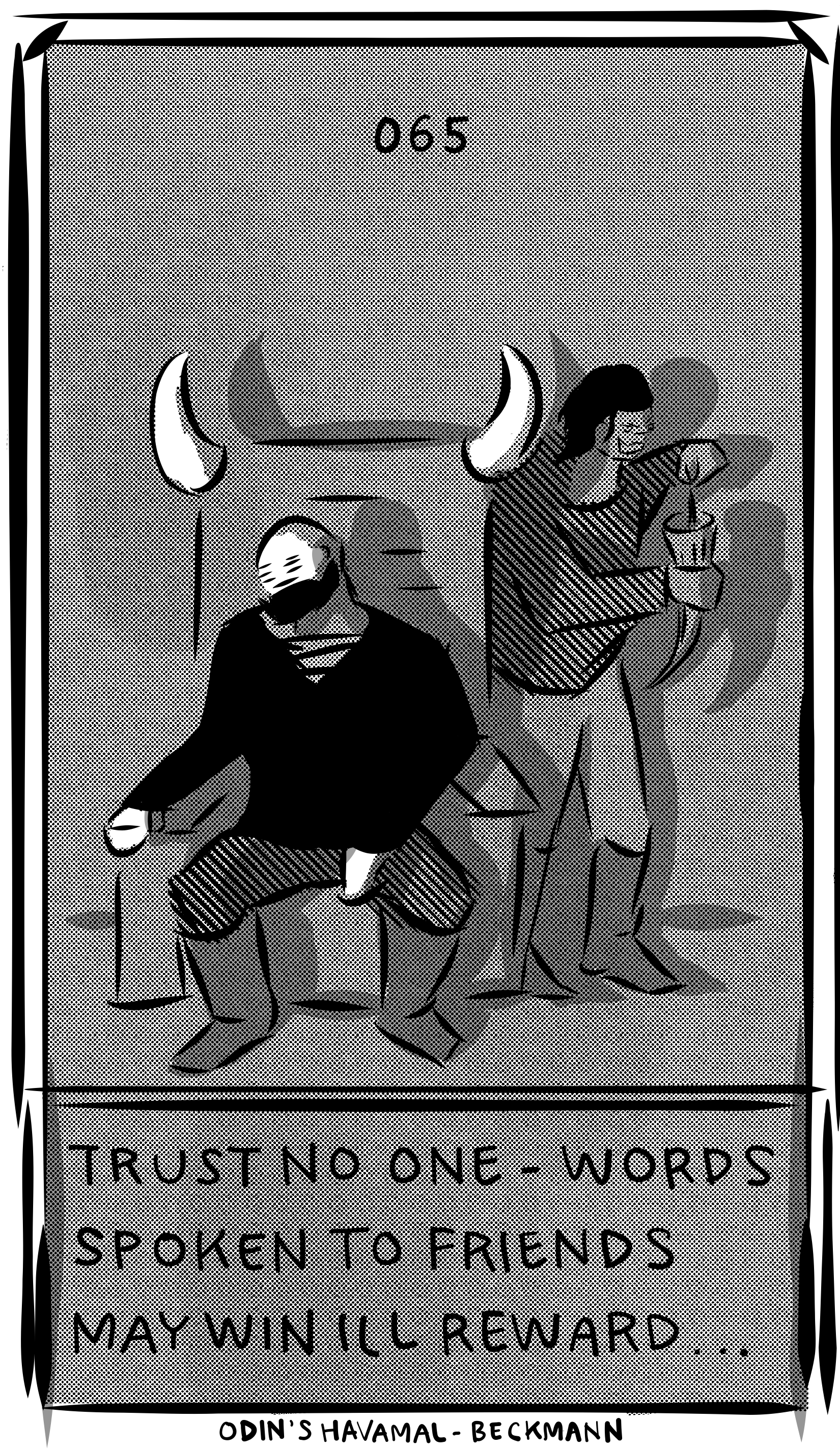
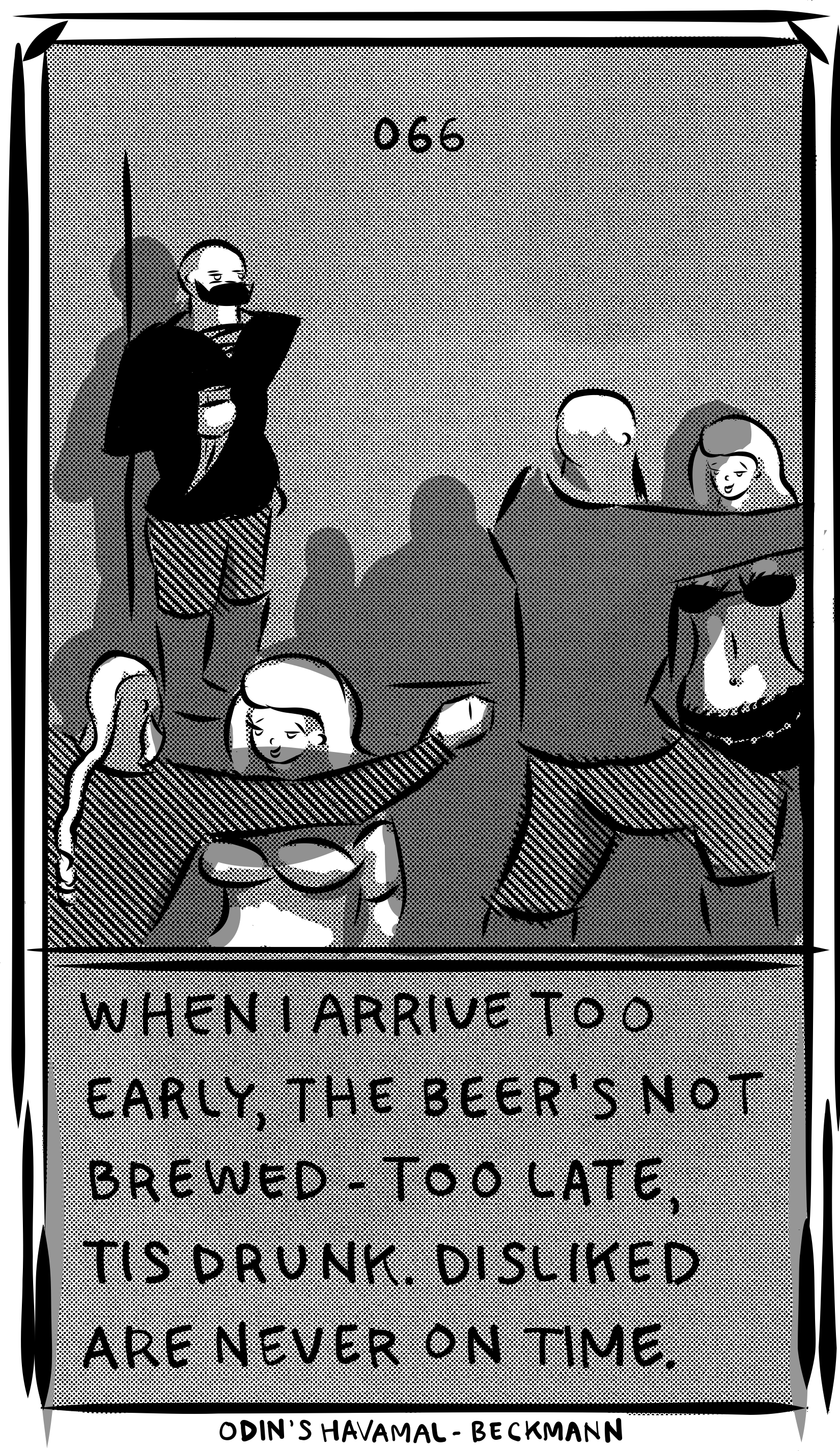
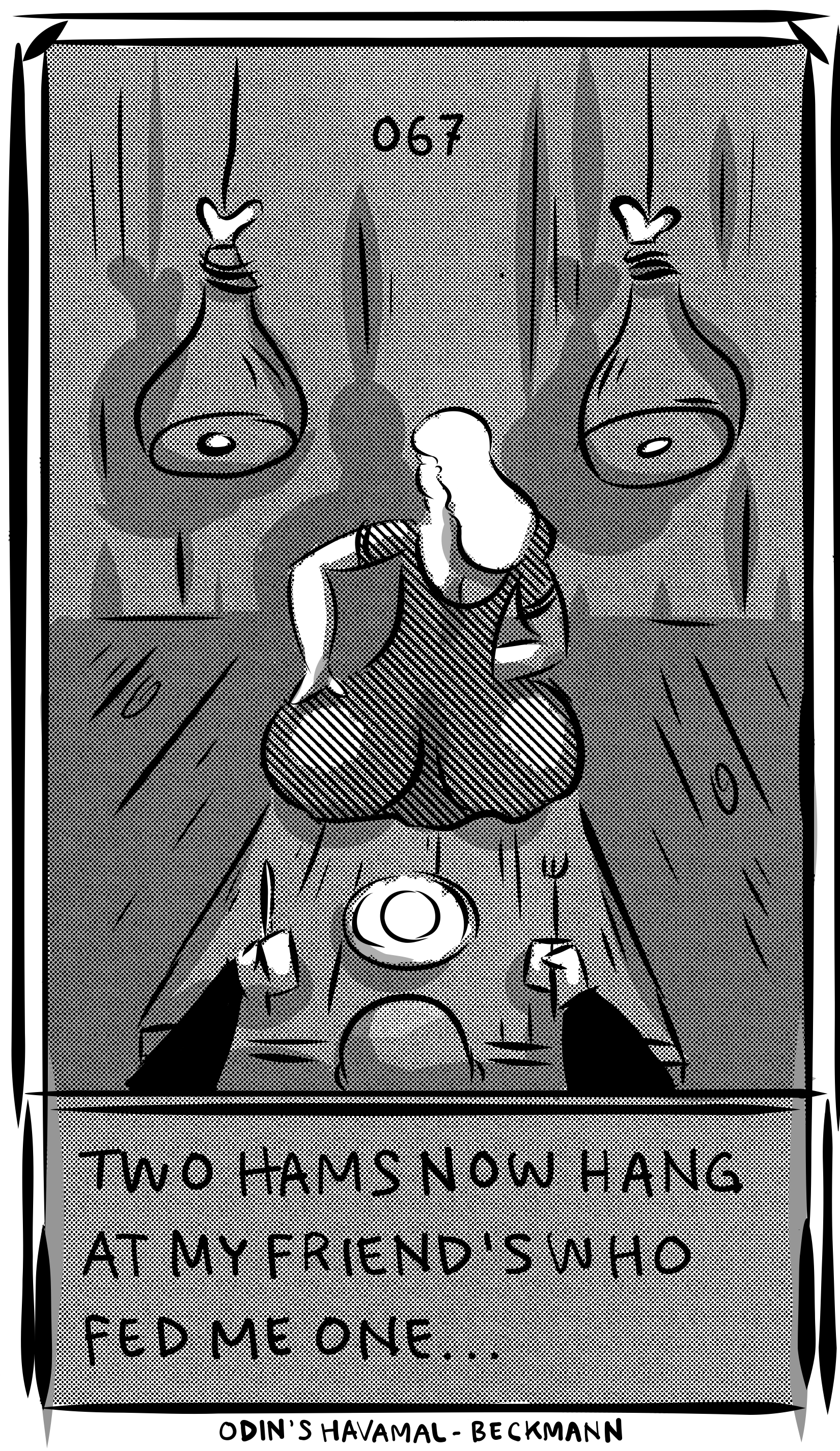
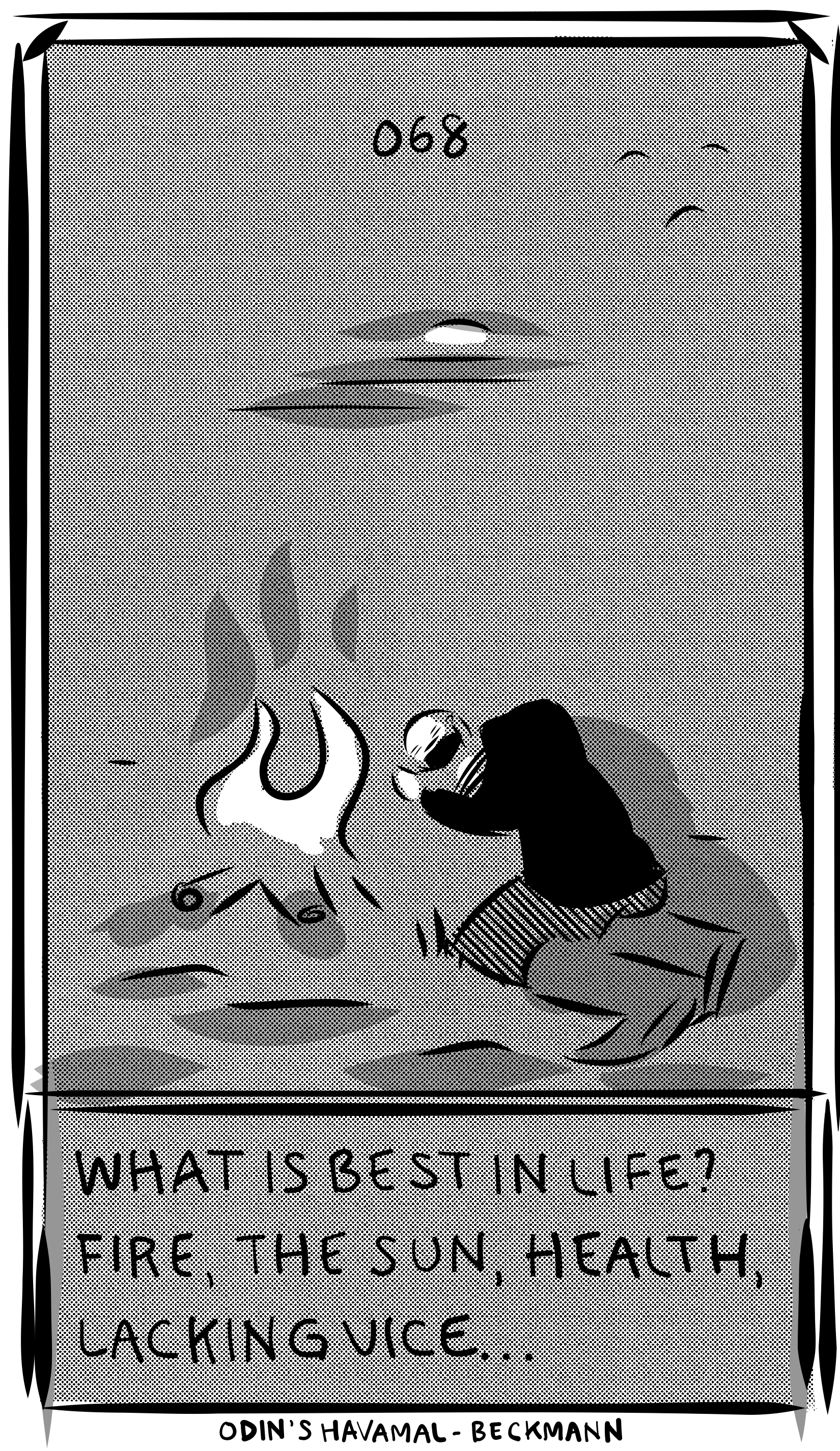
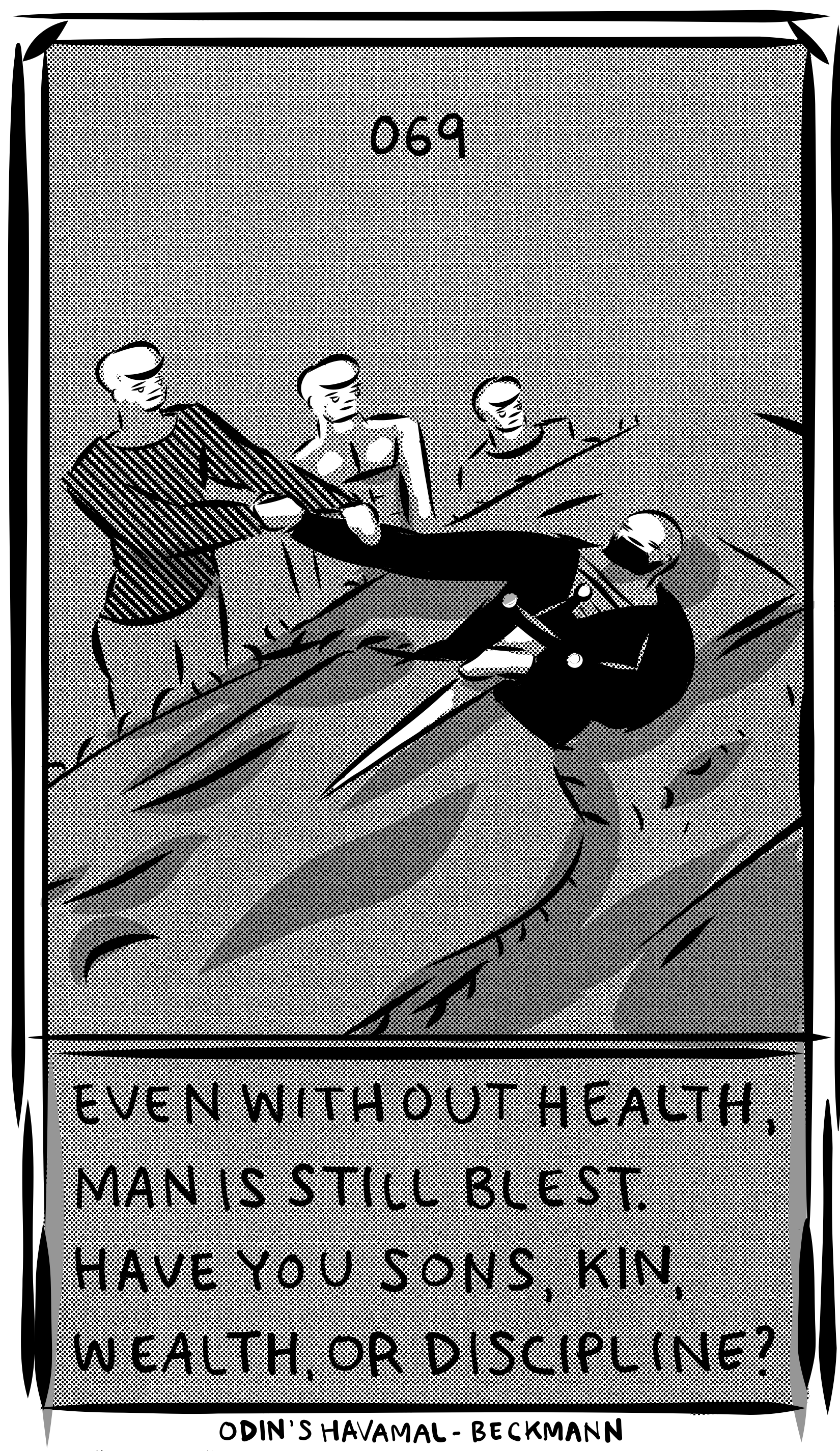
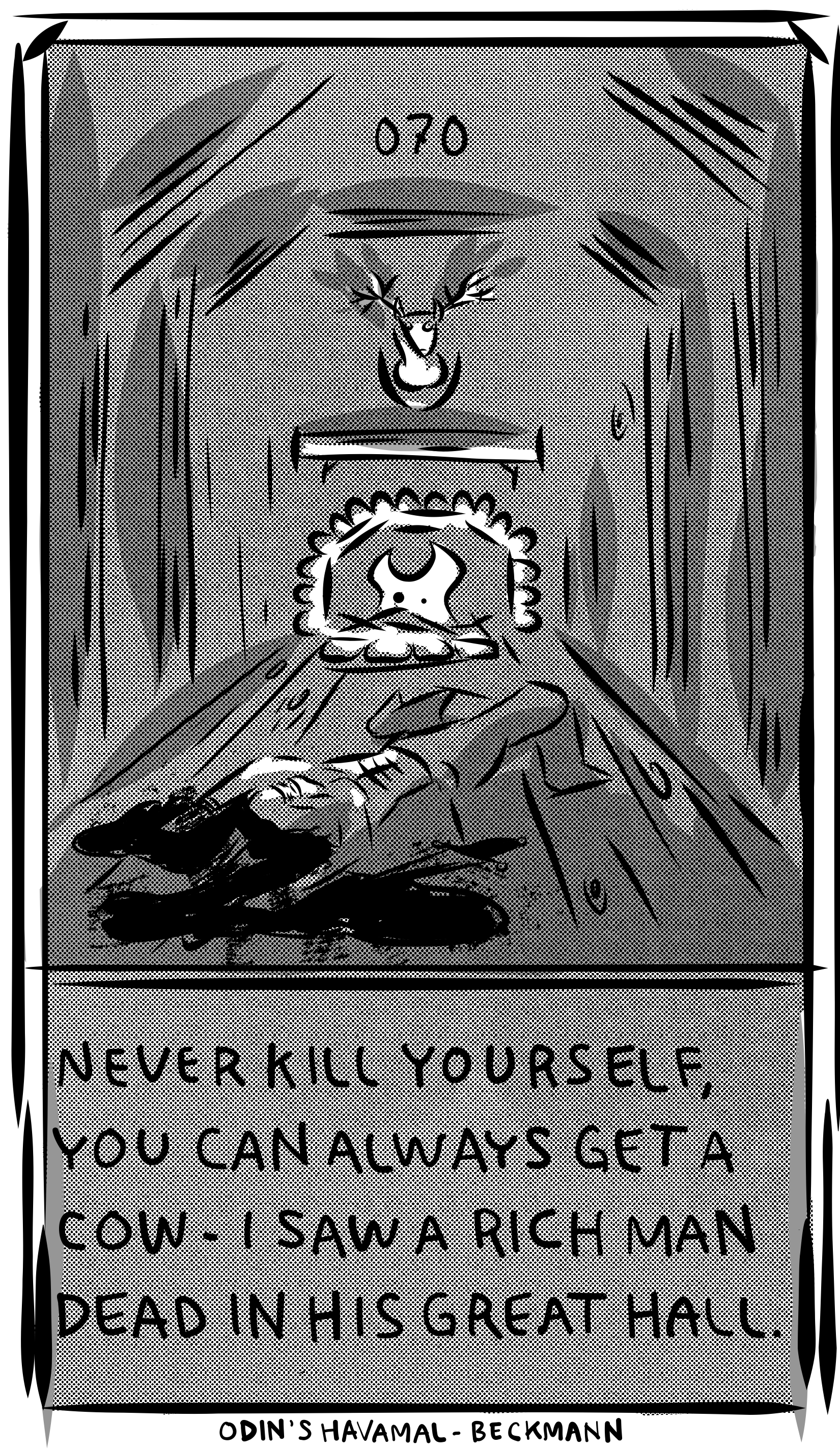
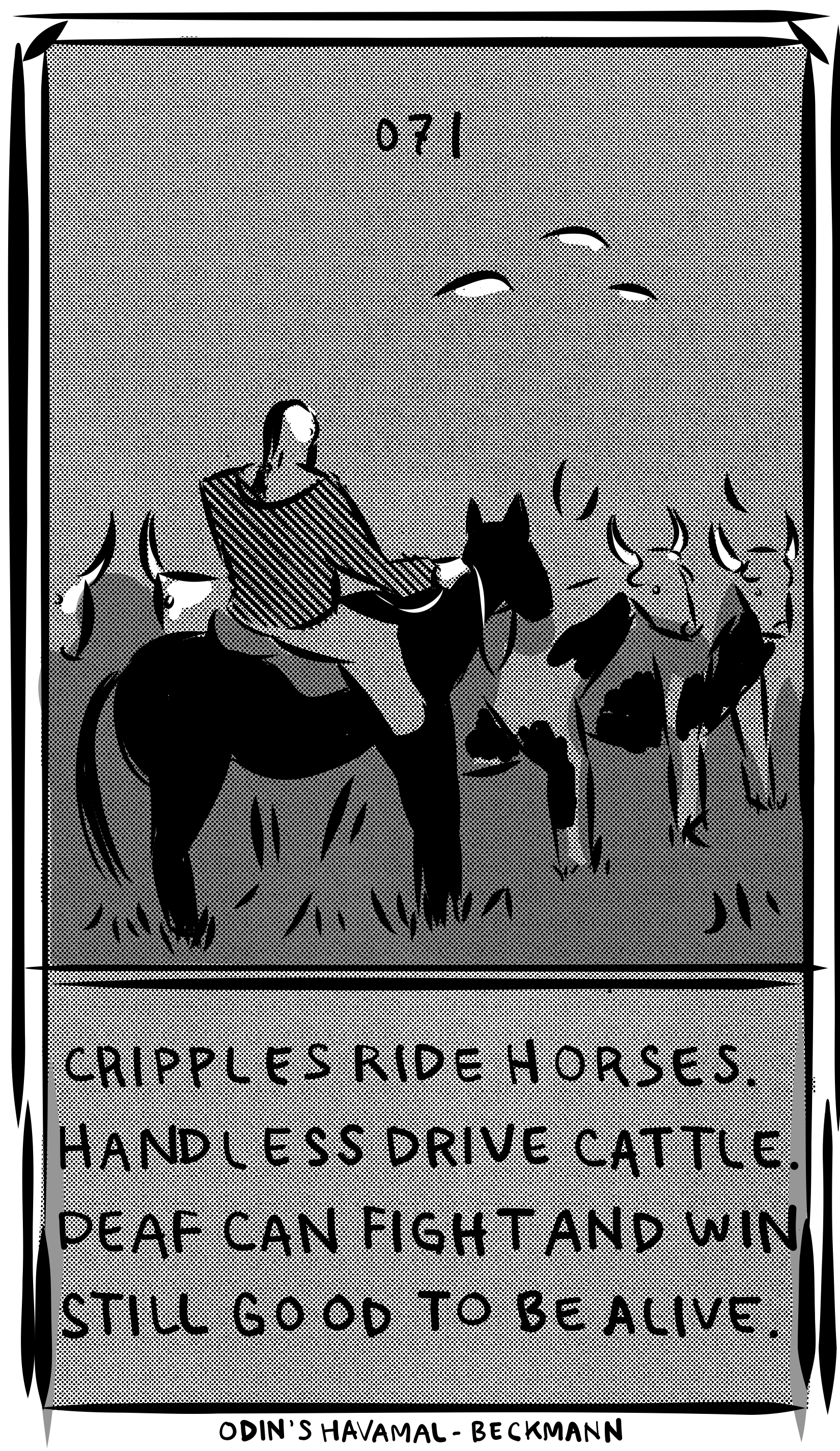
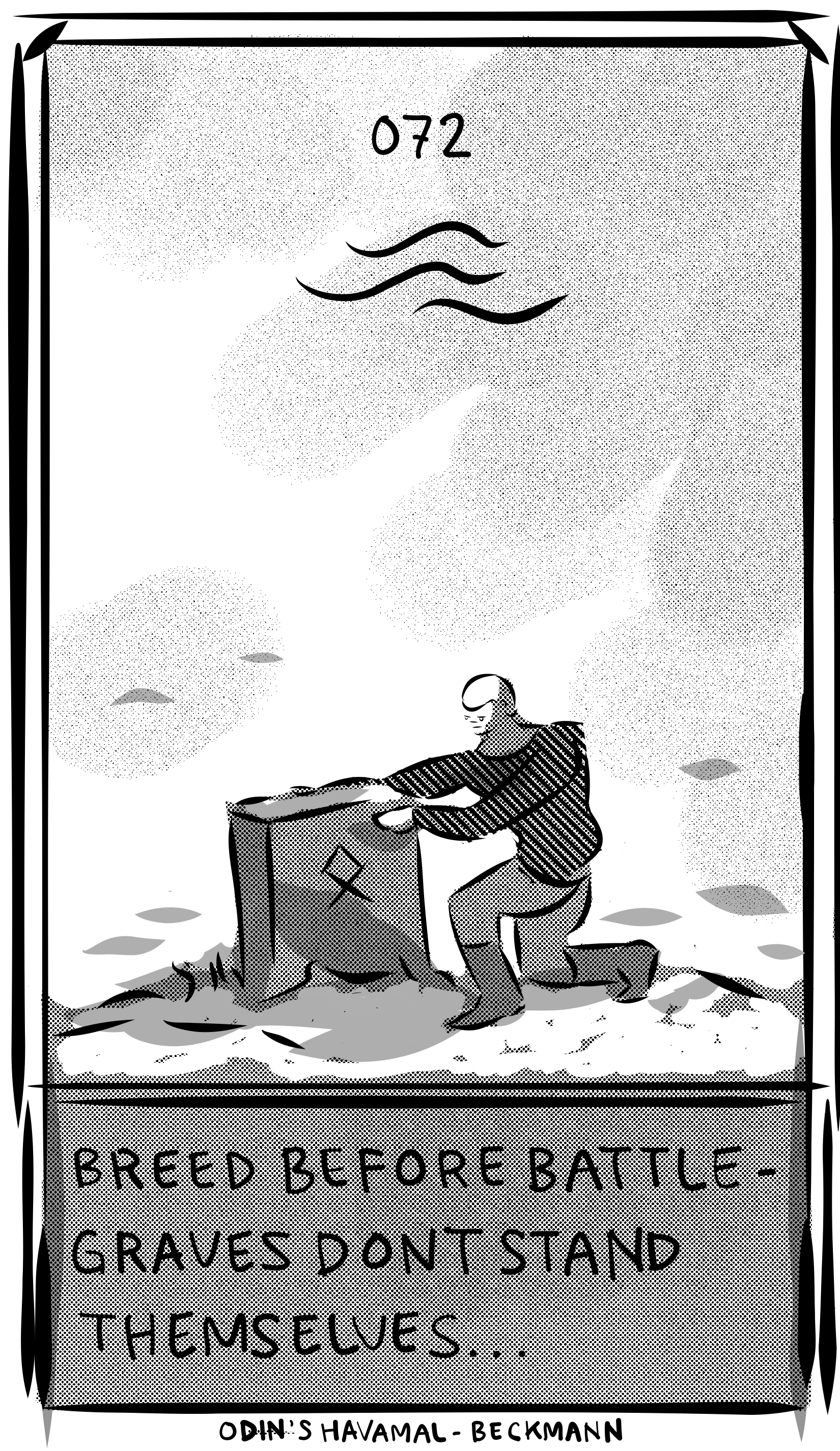
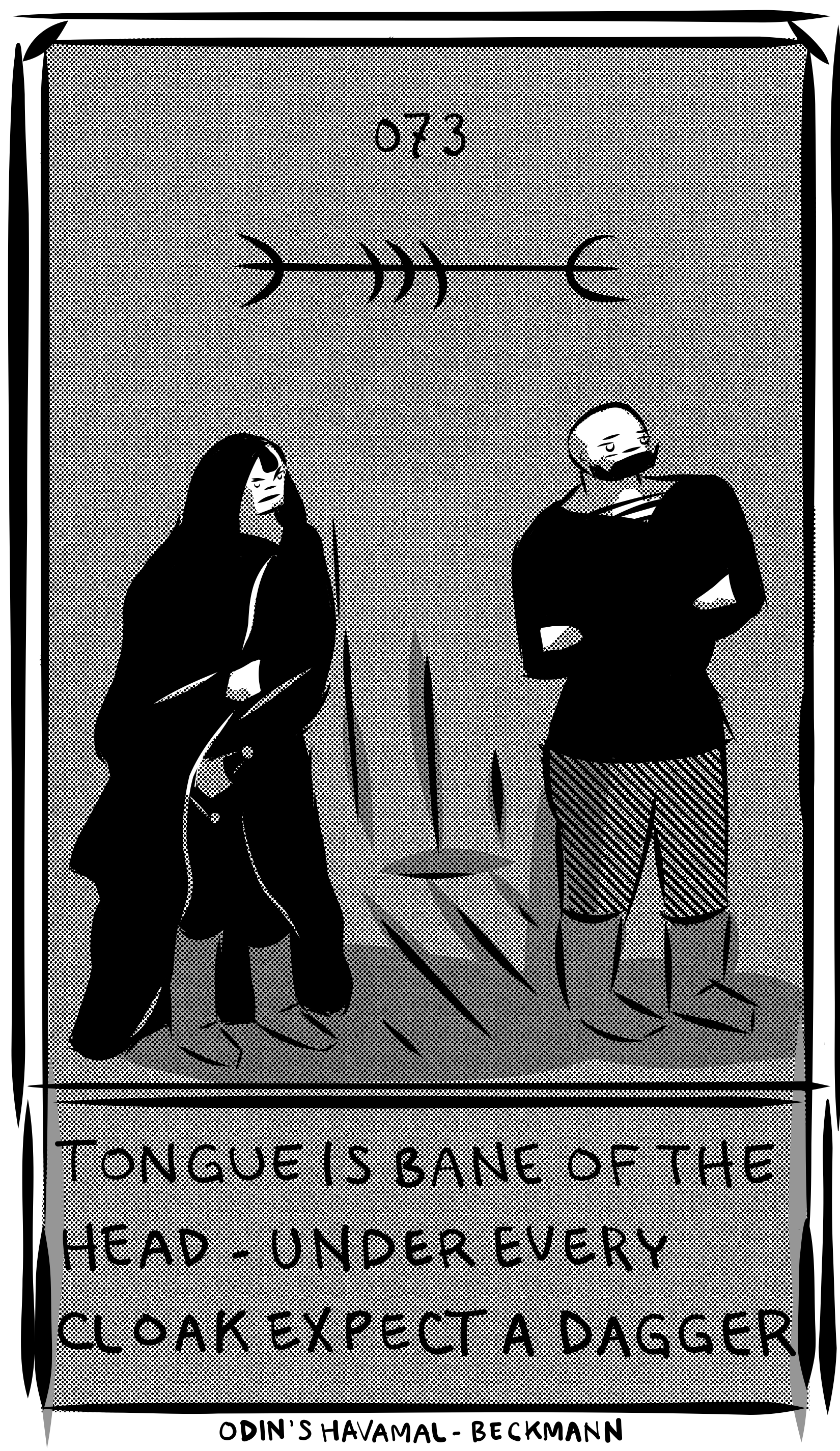
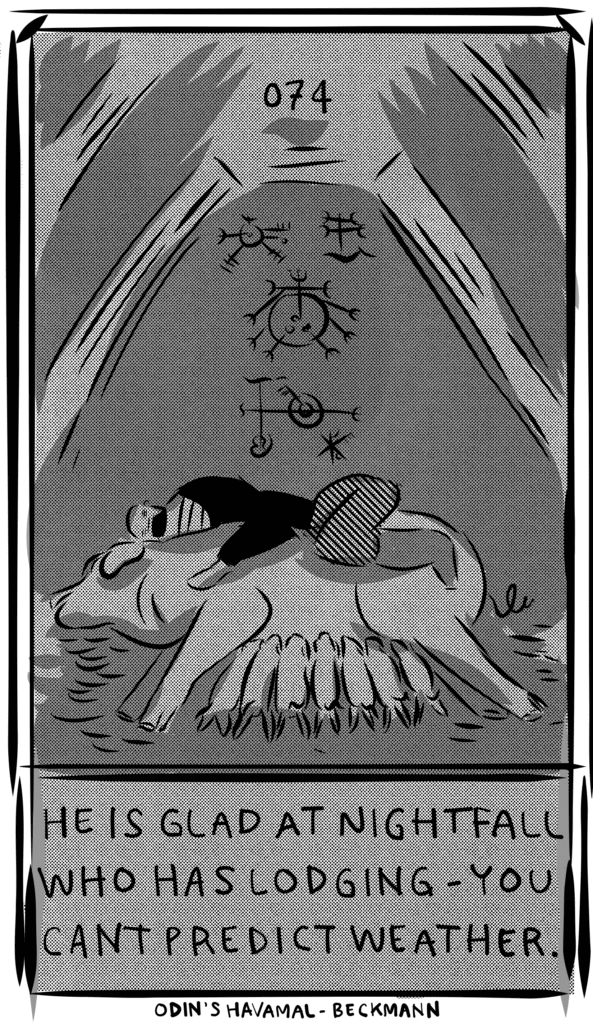
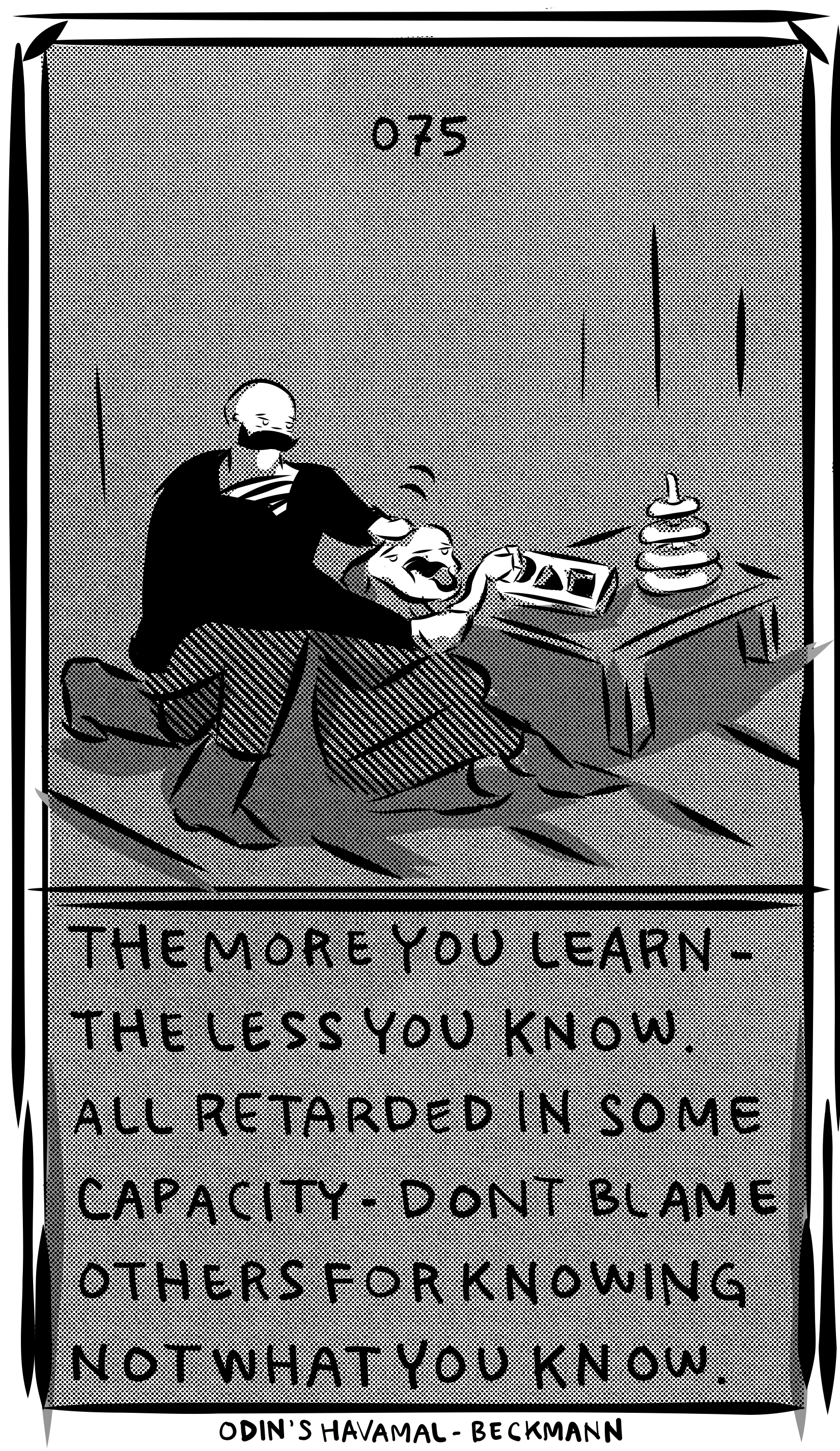
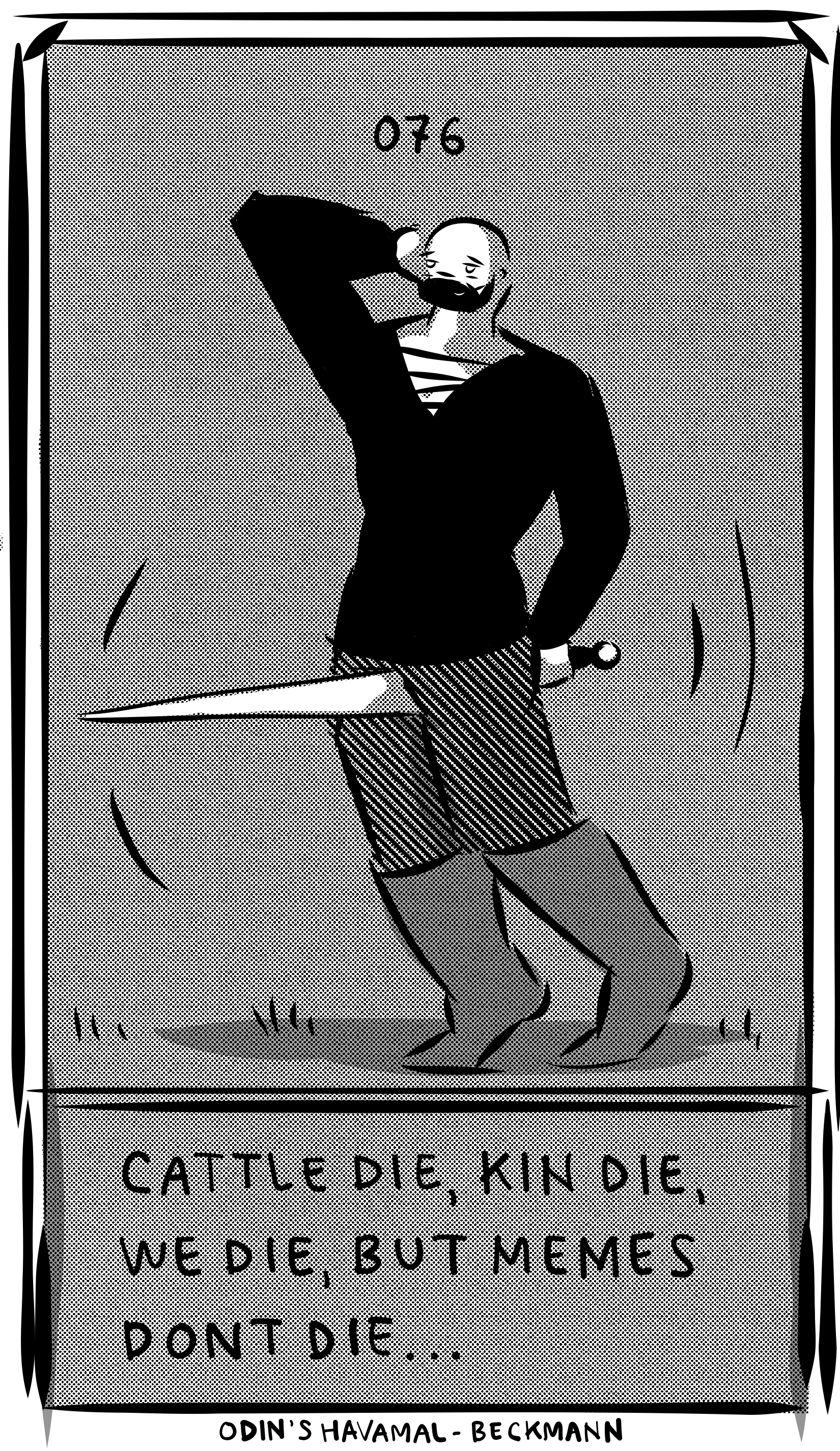
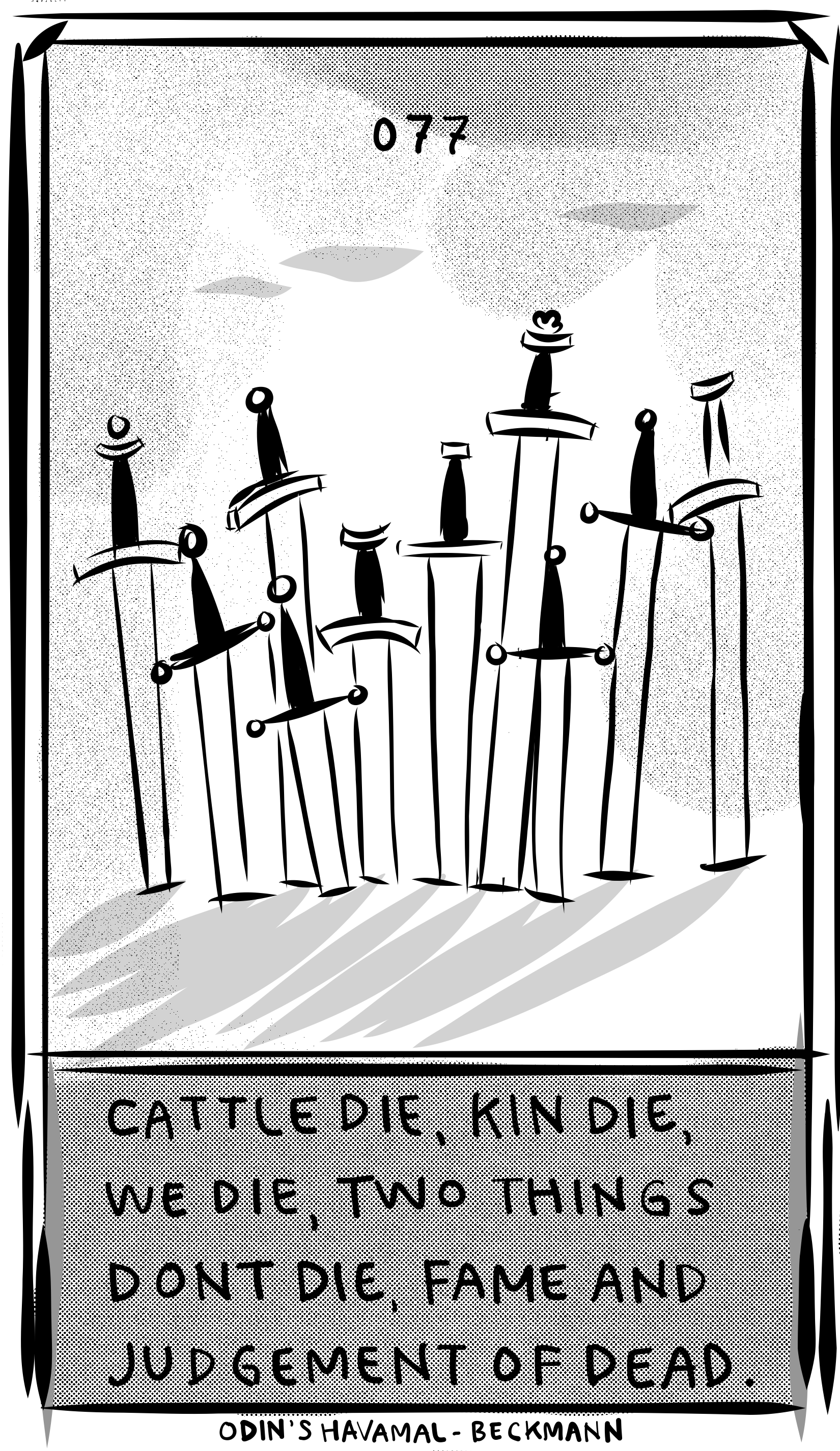
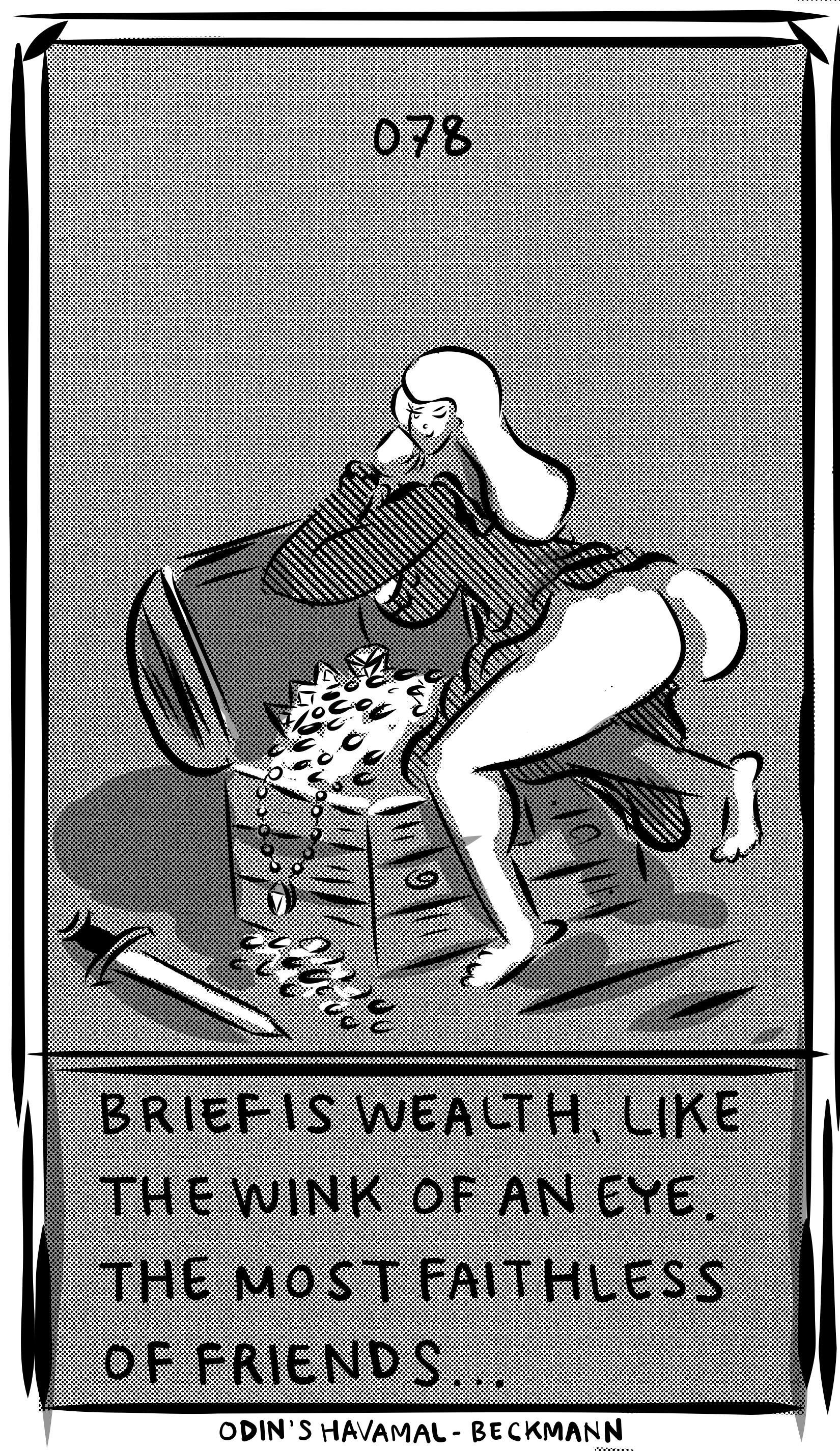
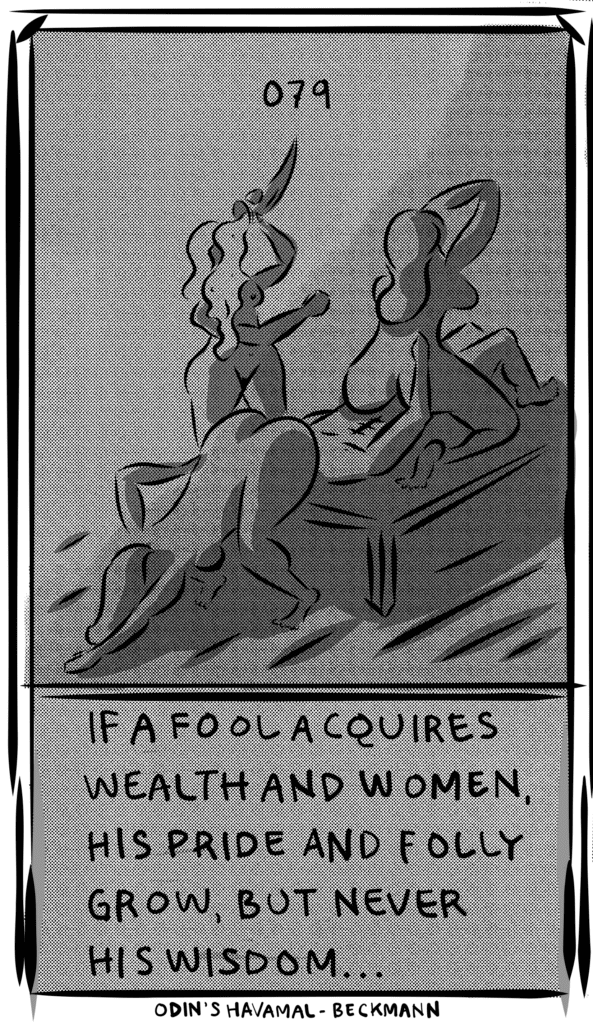
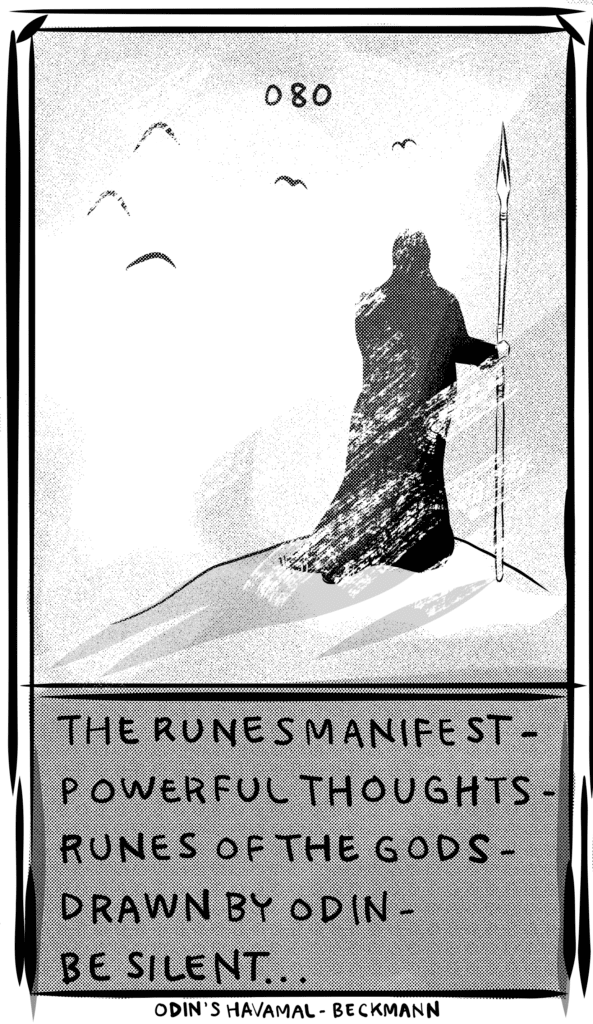
Maxims for All Men (081-088):
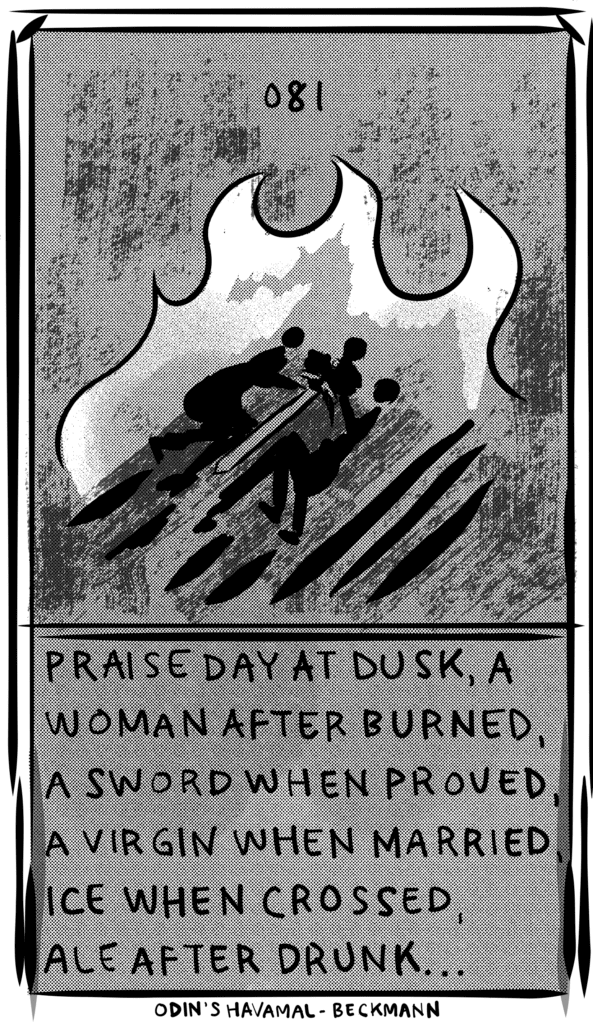
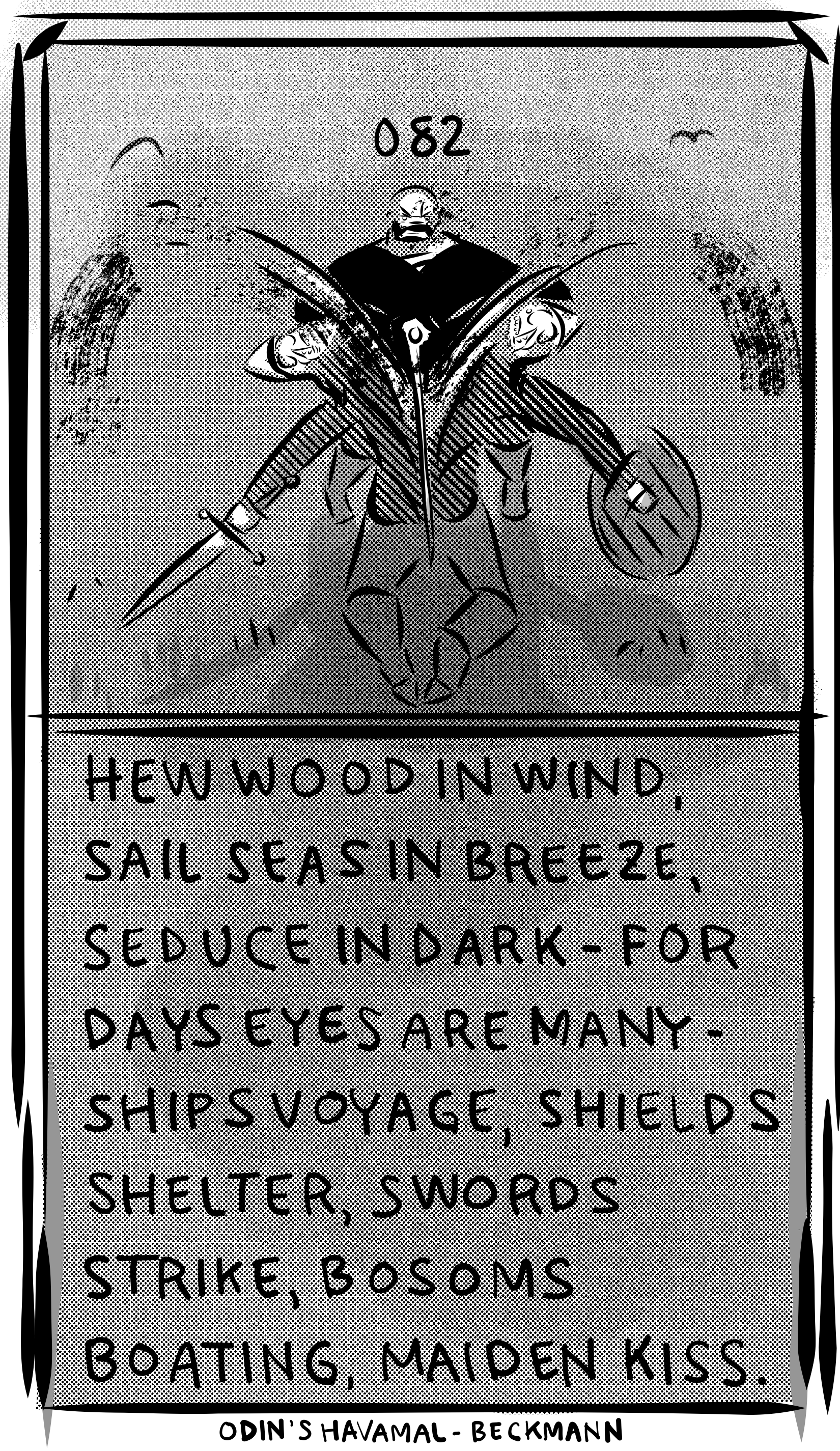
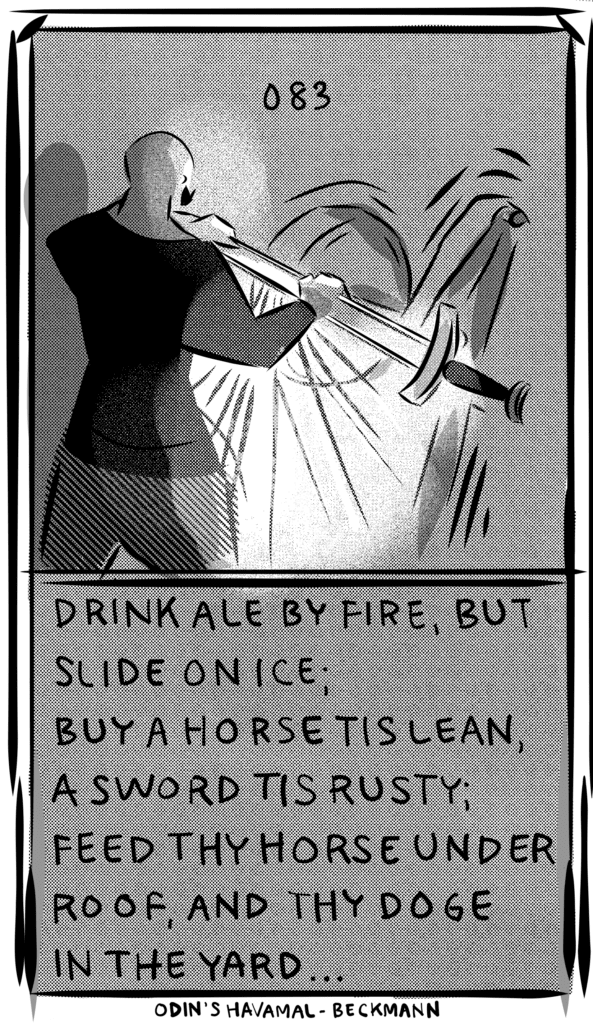
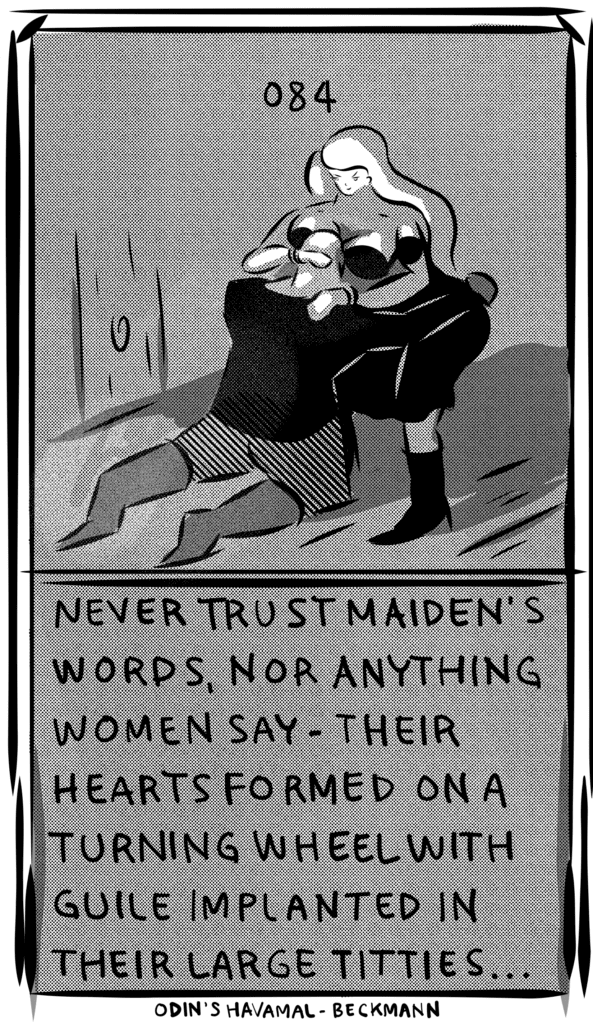
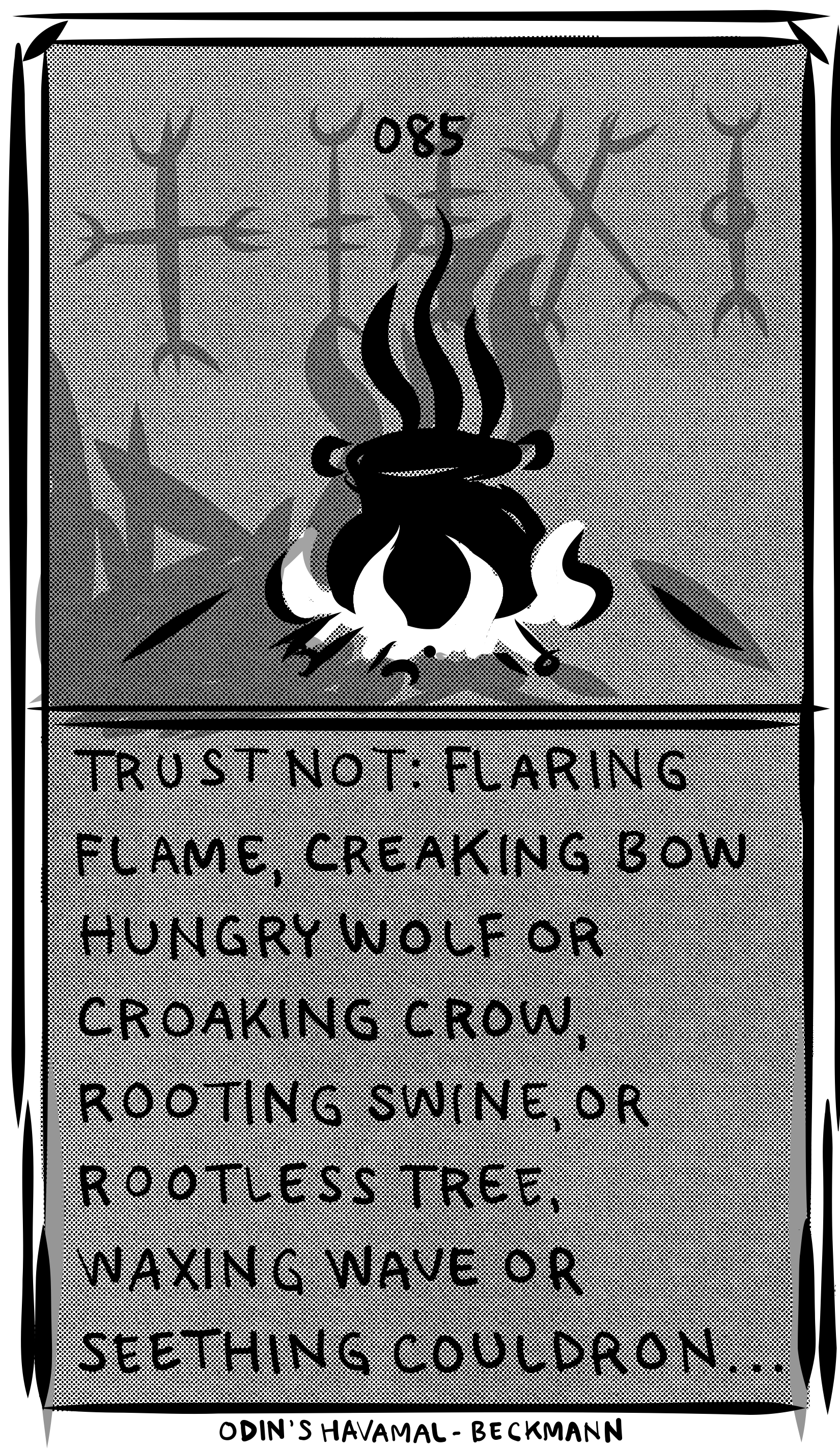
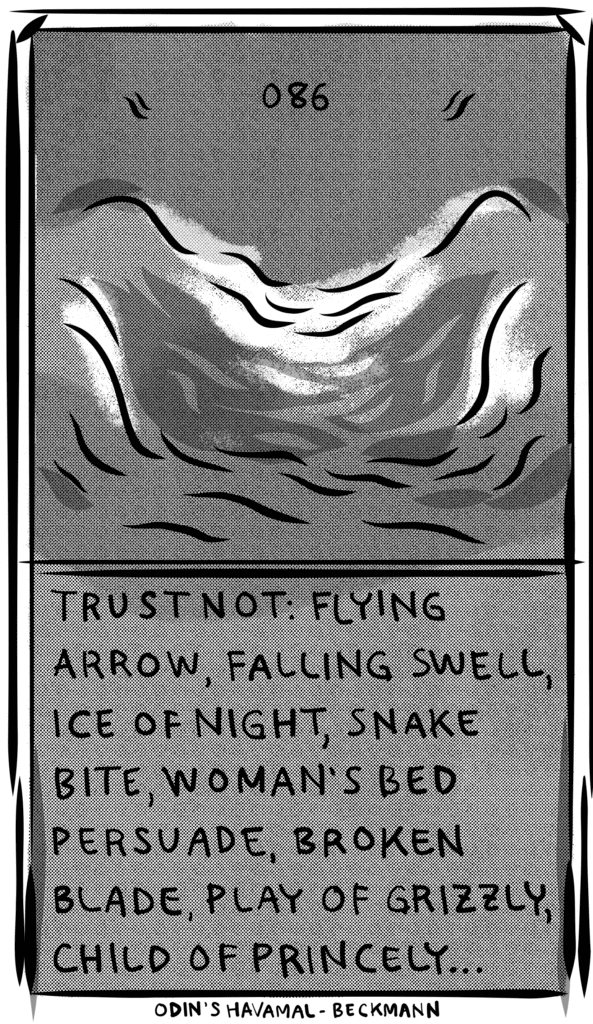
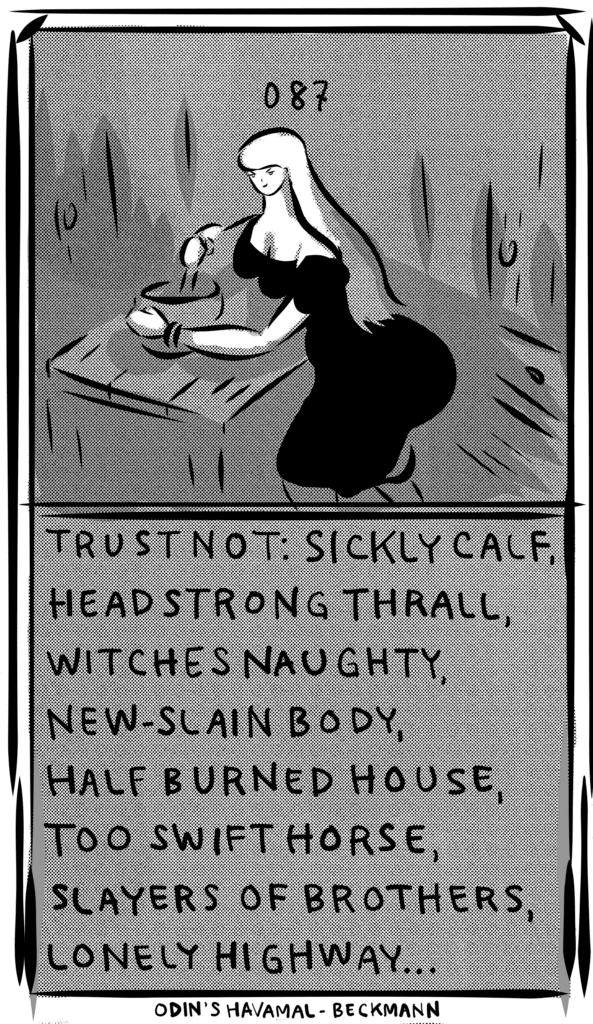
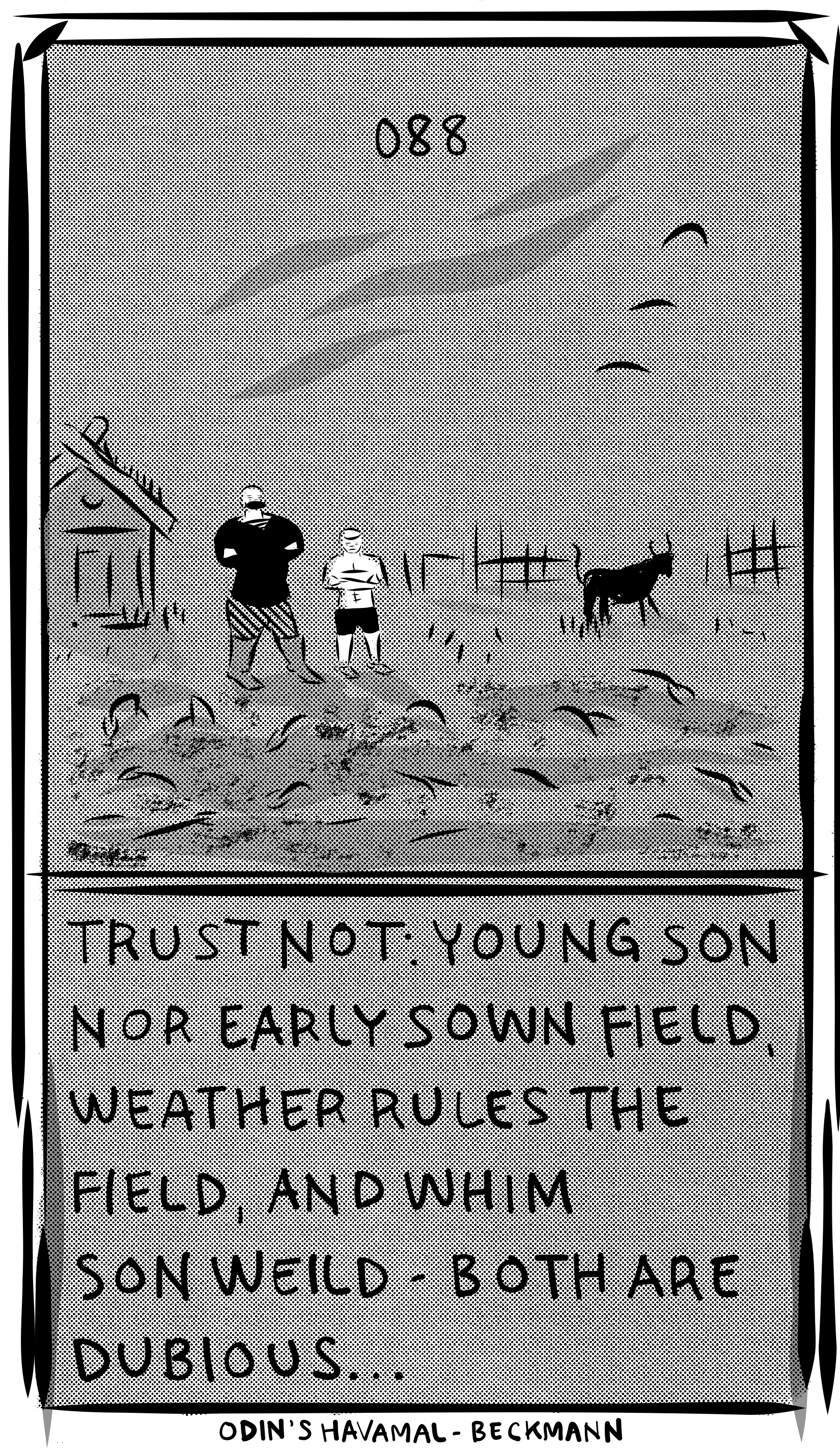
Lessons for Lovers 089-094:
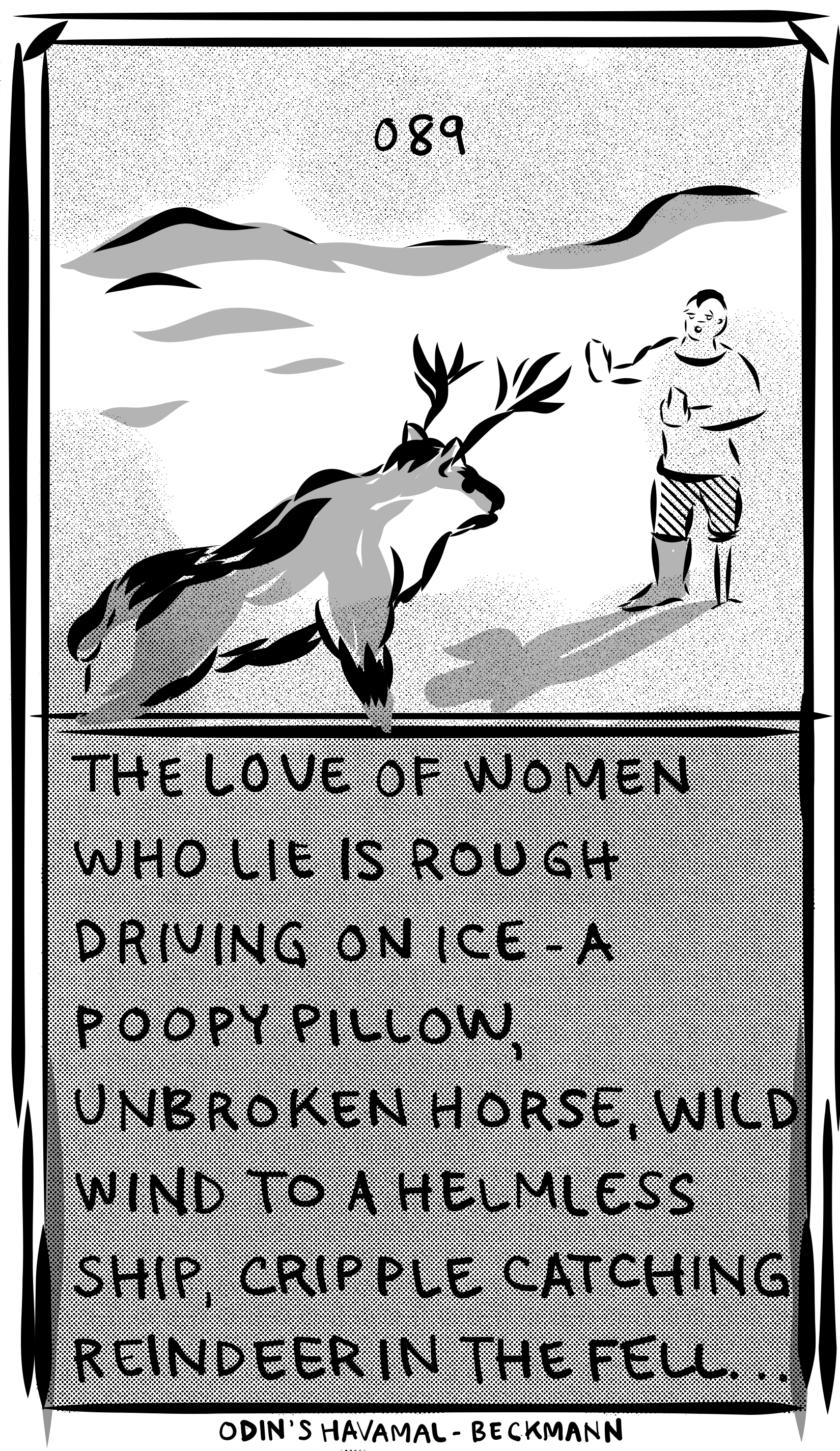
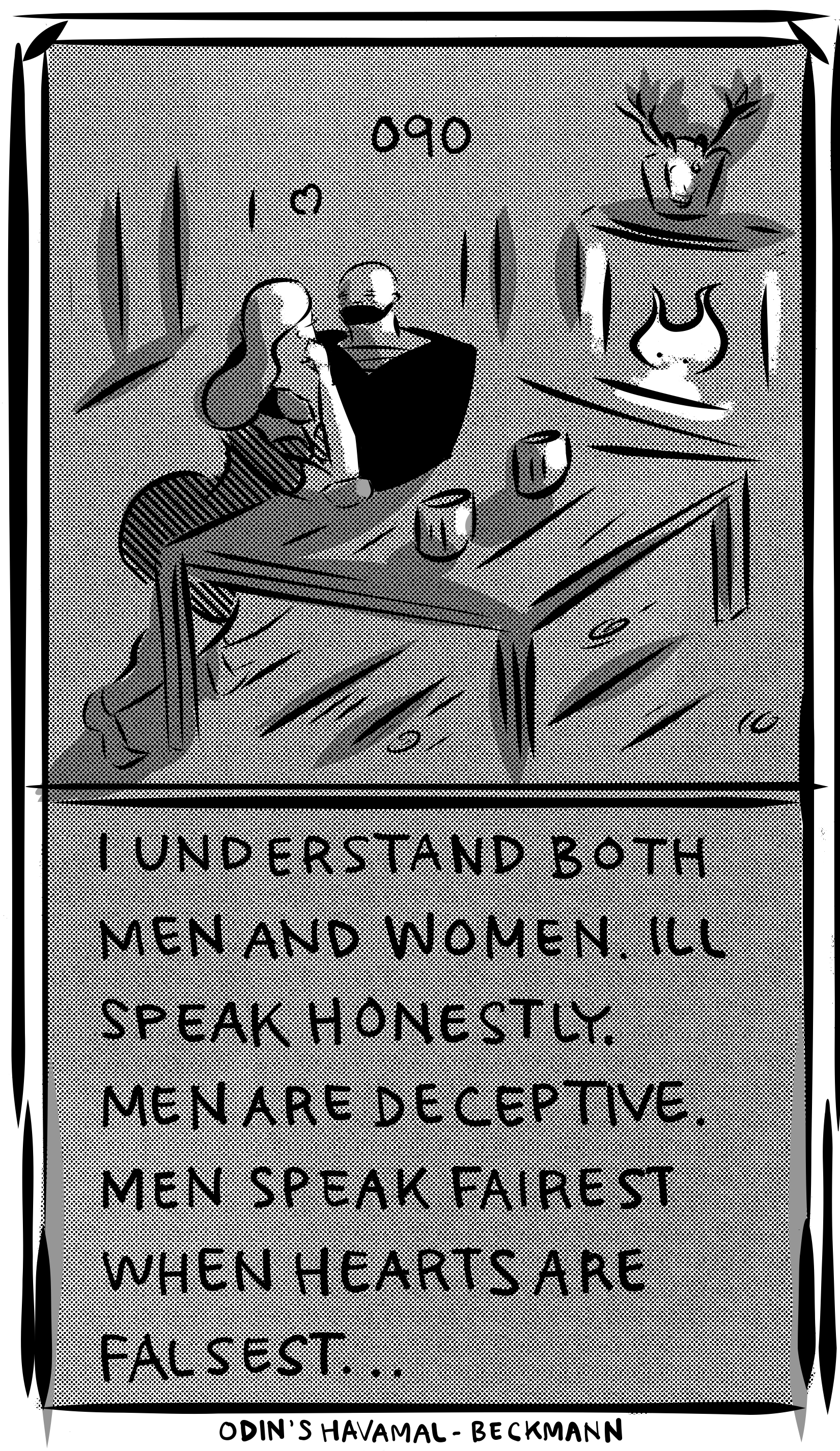
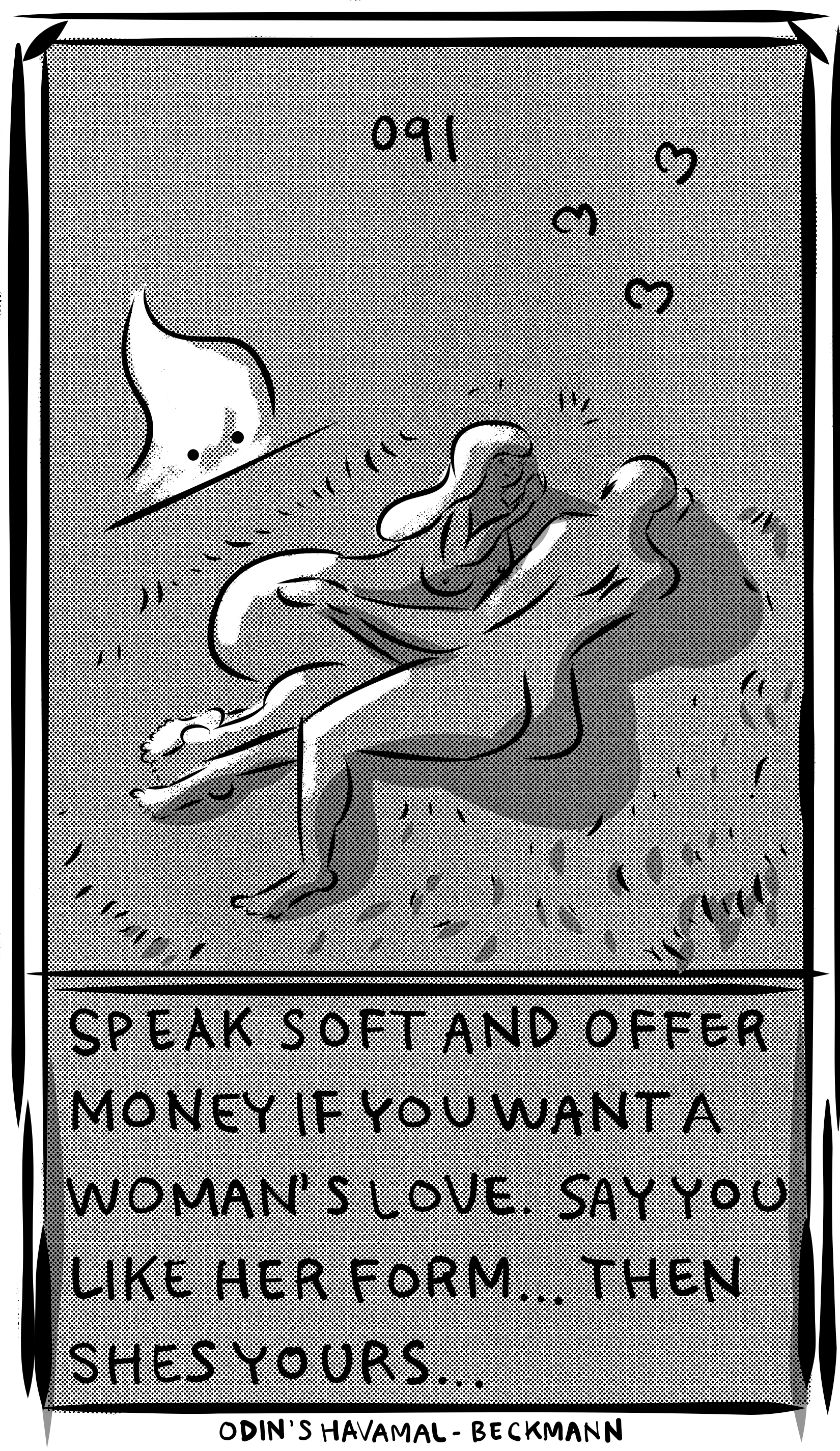
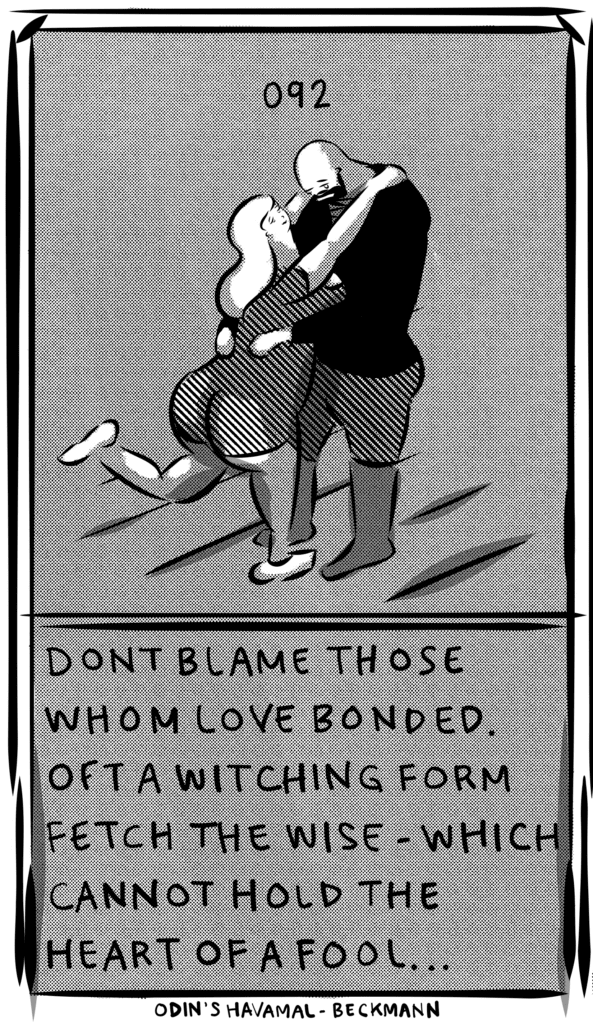
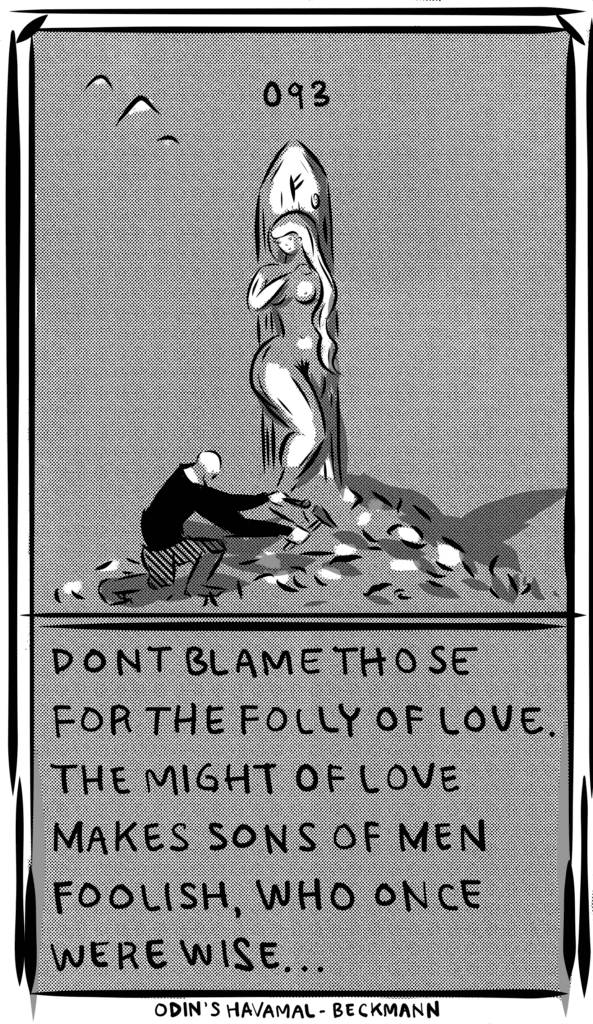
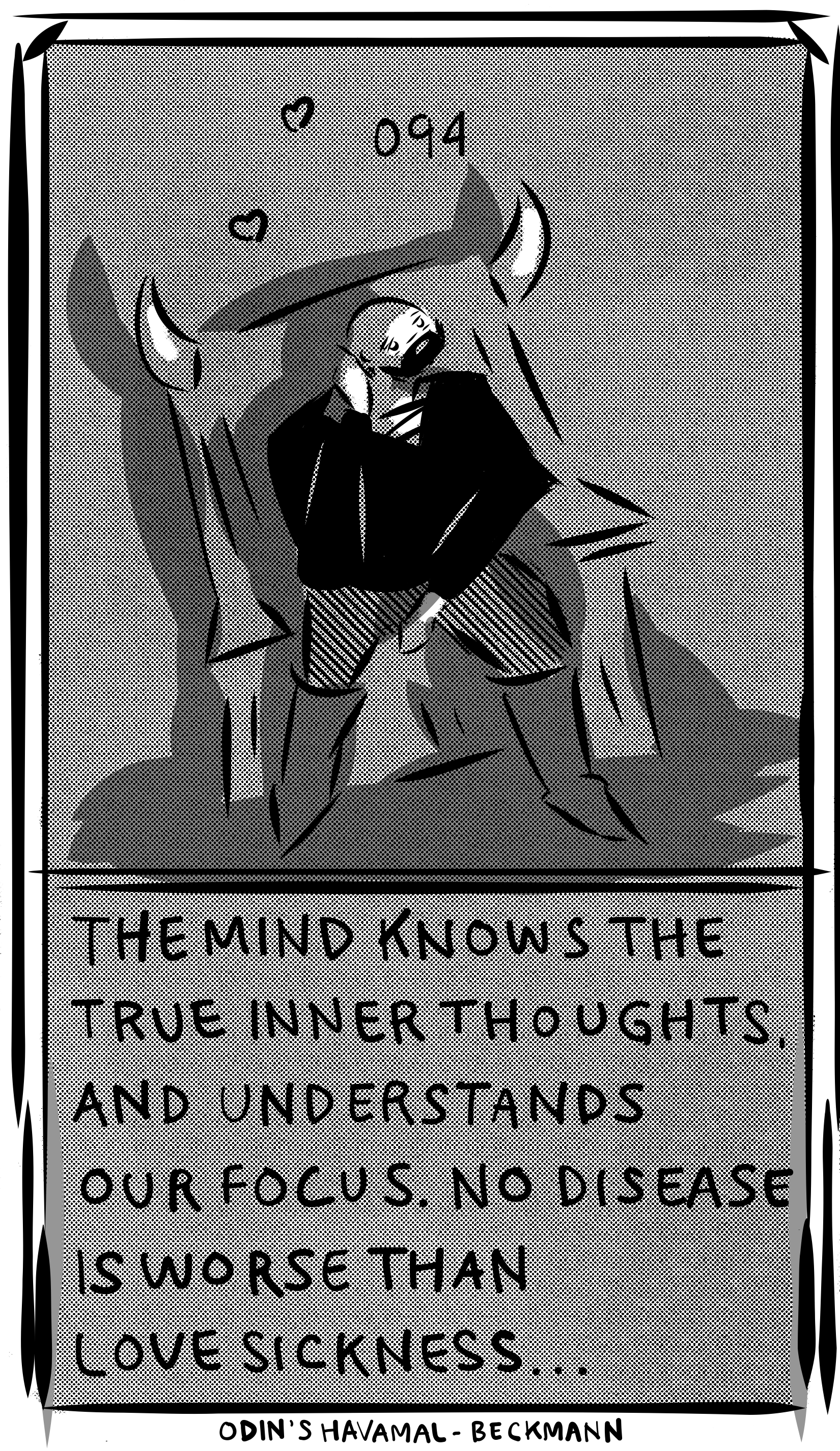
Odin’s Love Quests (095 – 101)
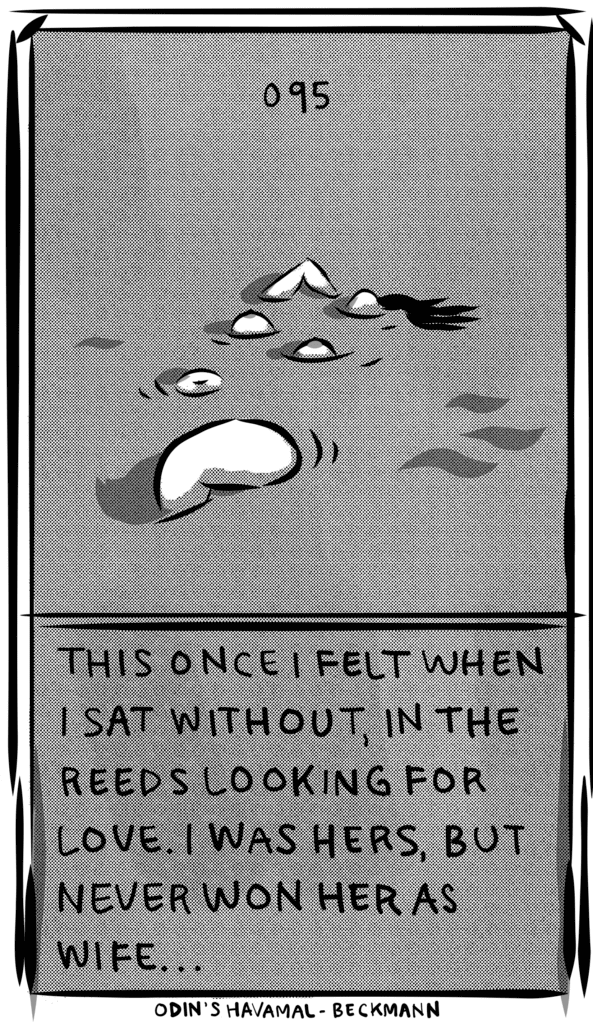
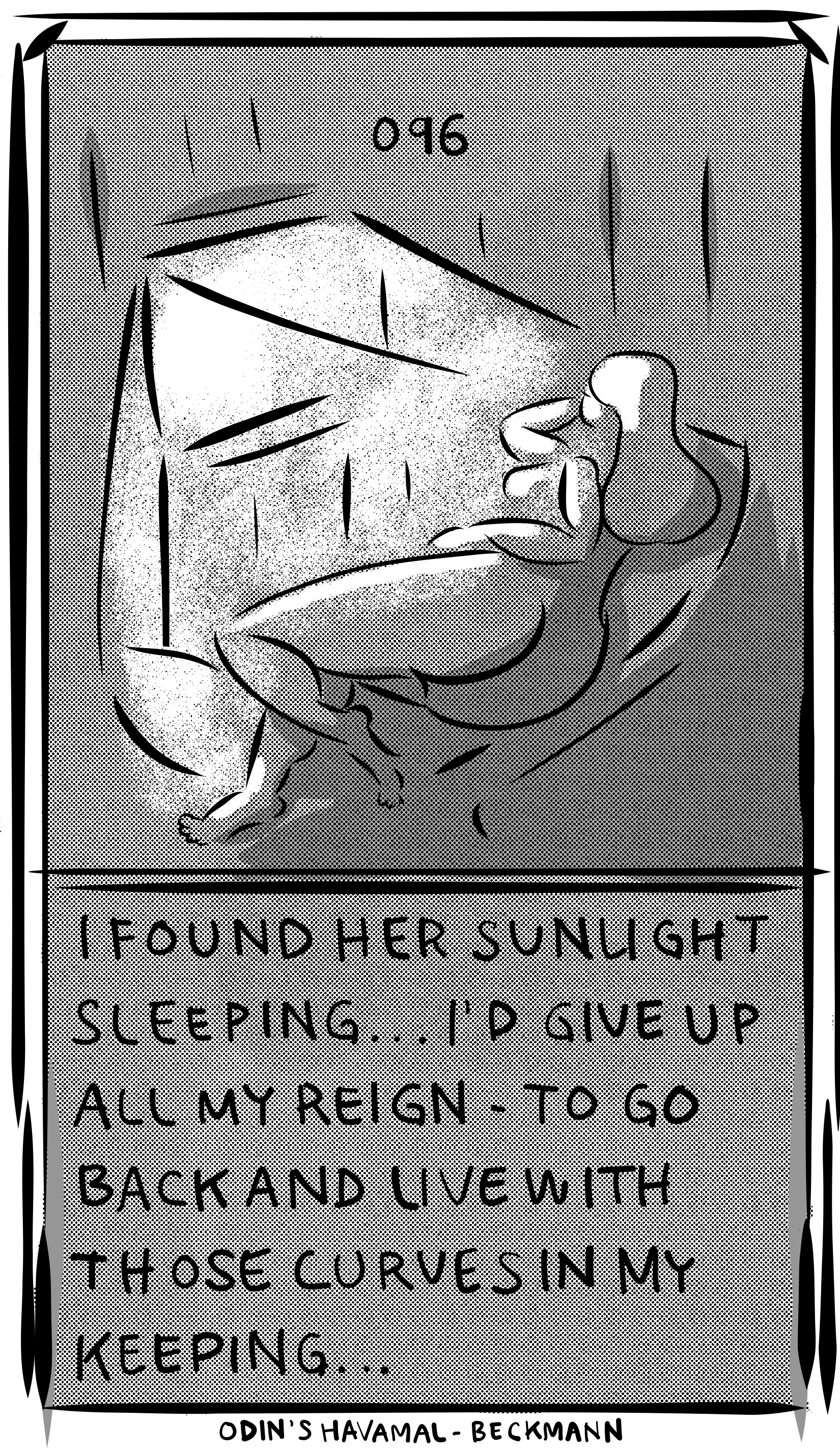
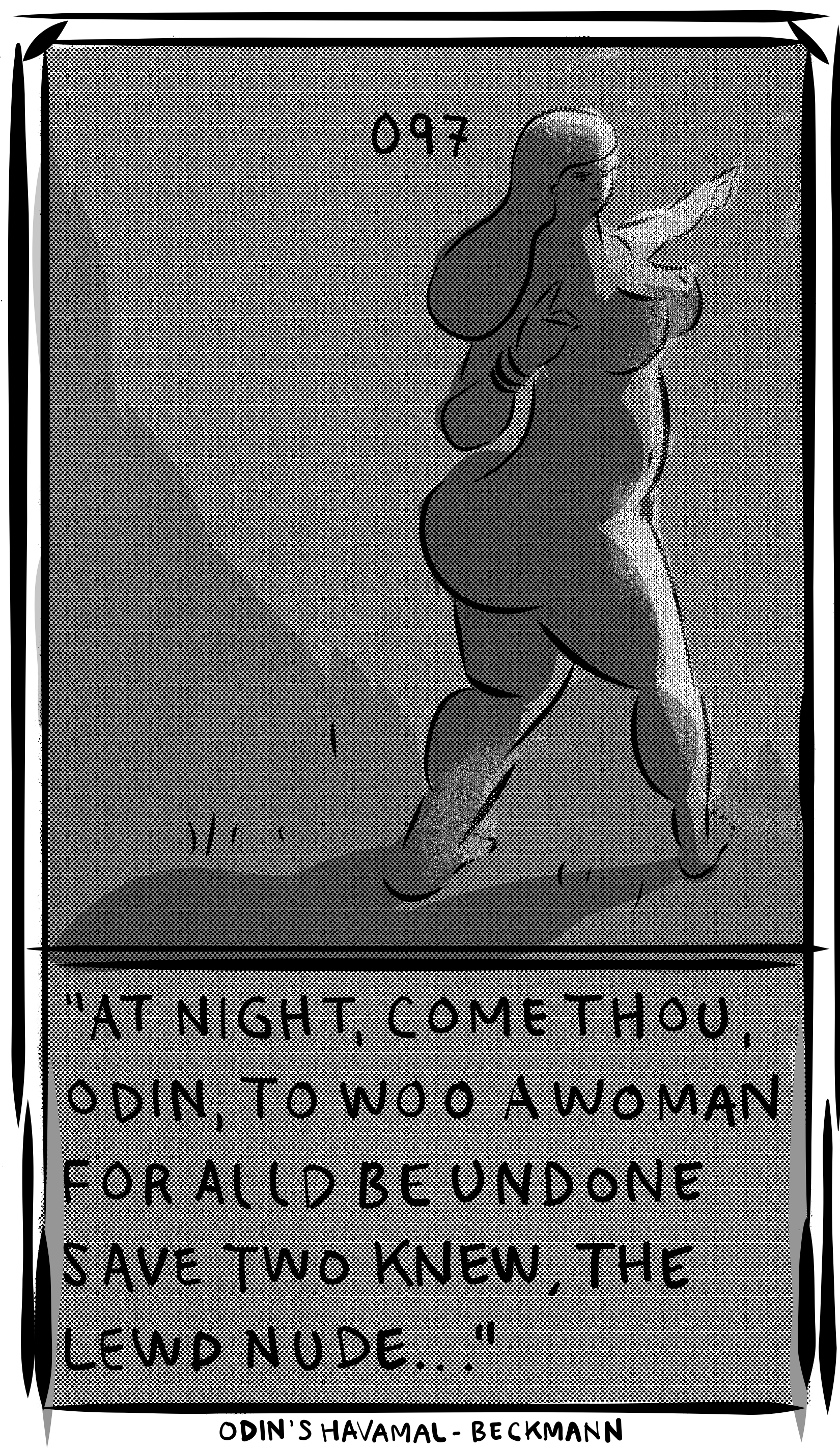
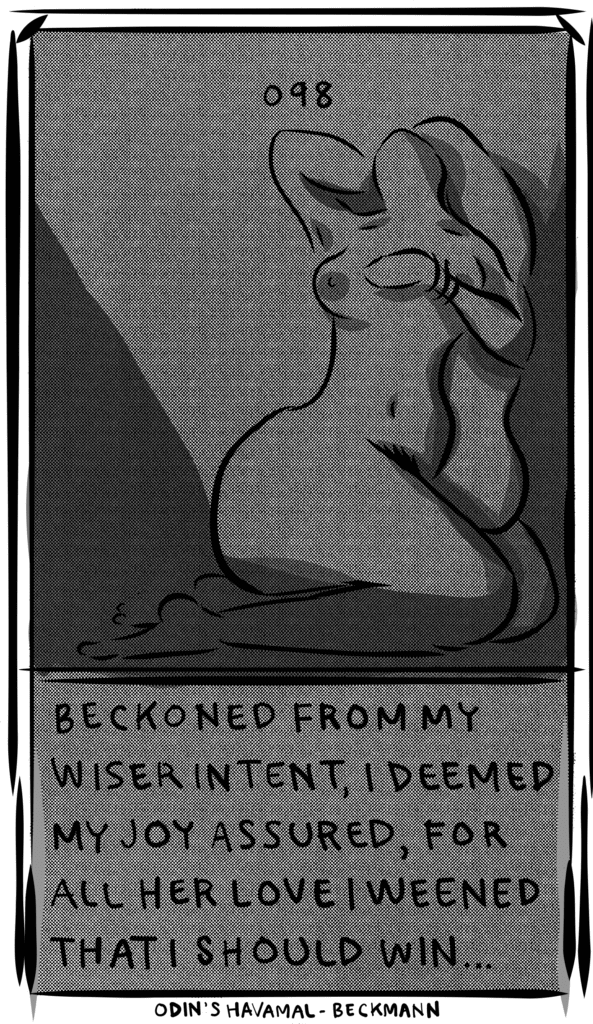
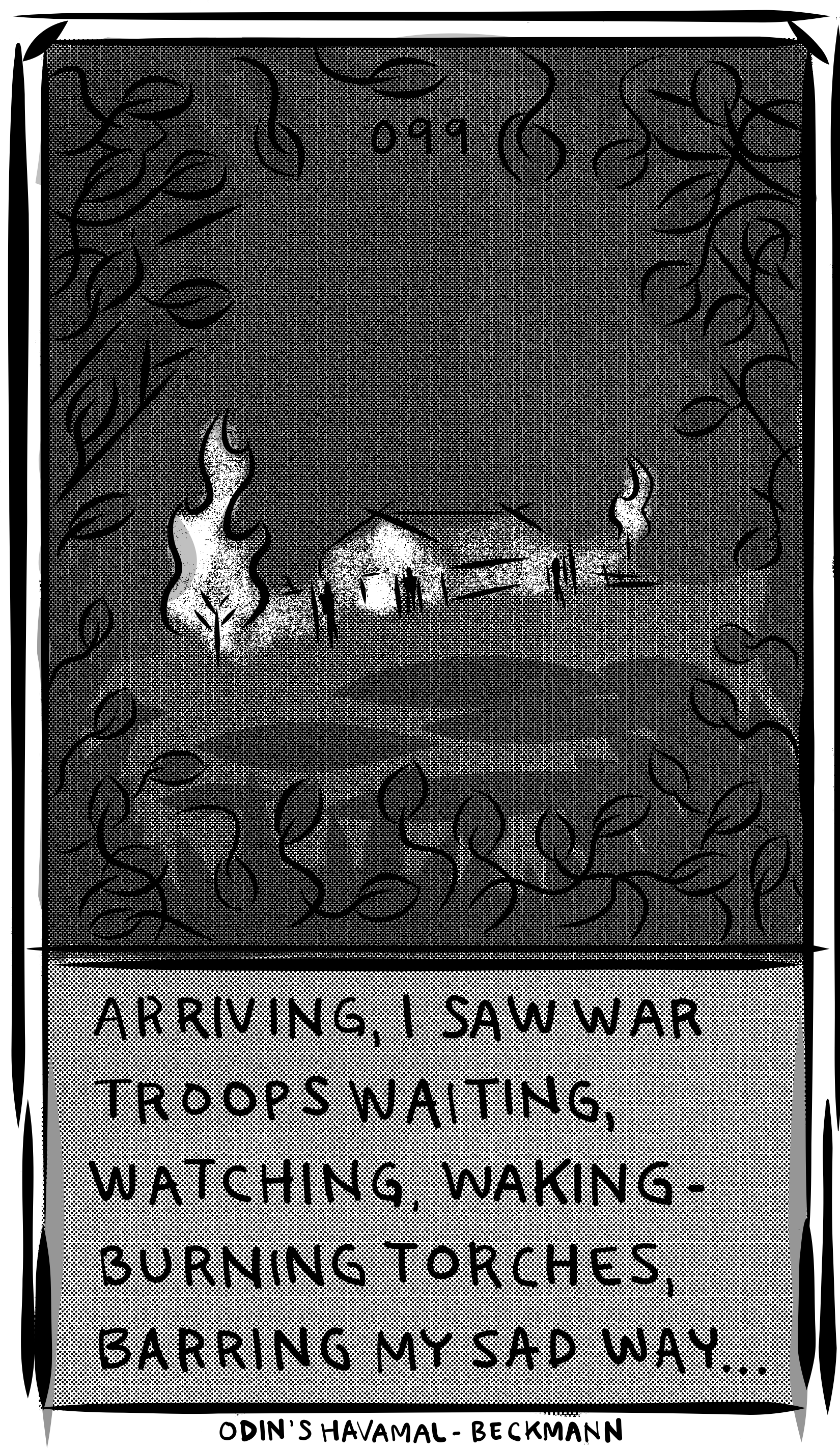
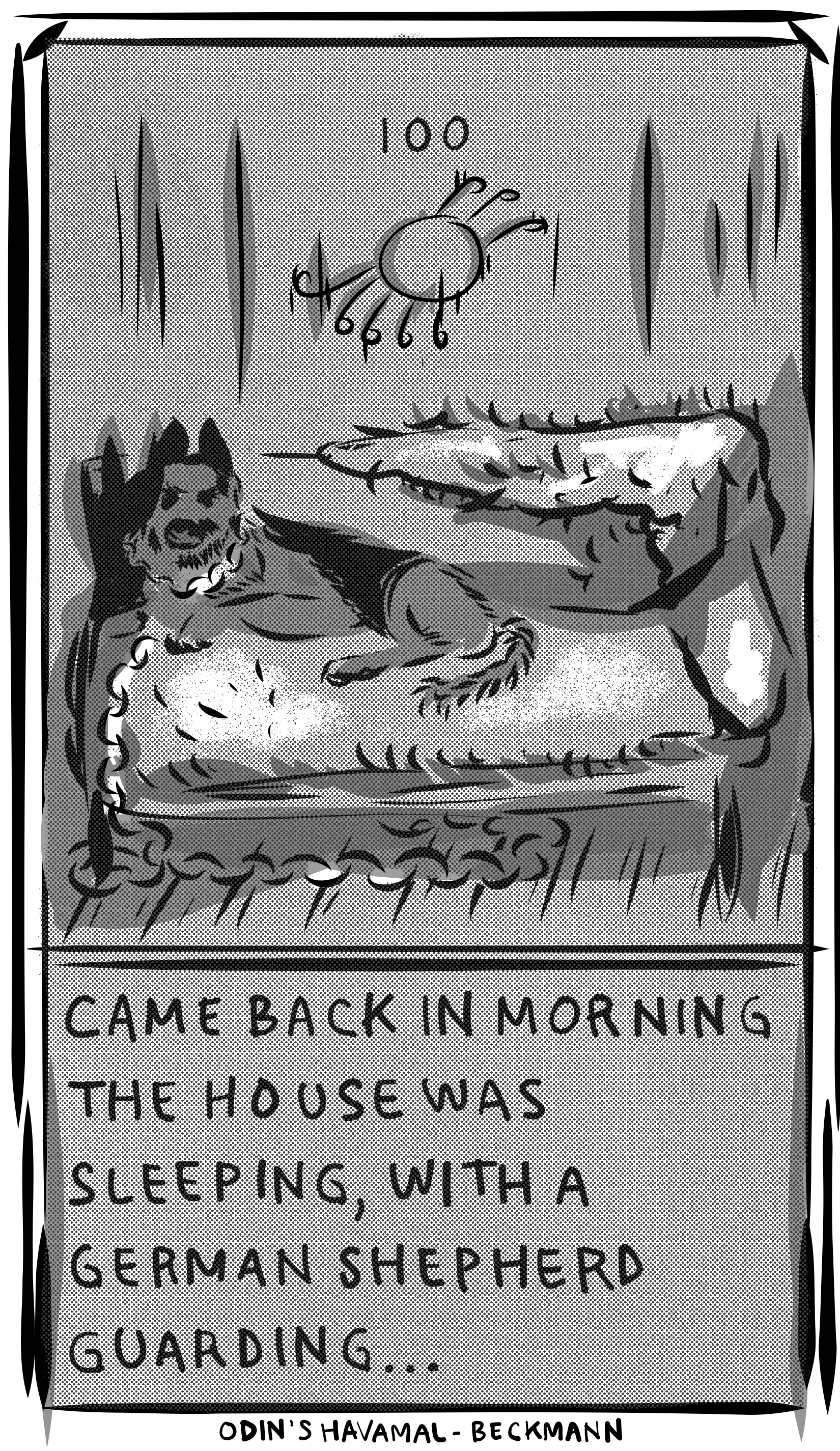
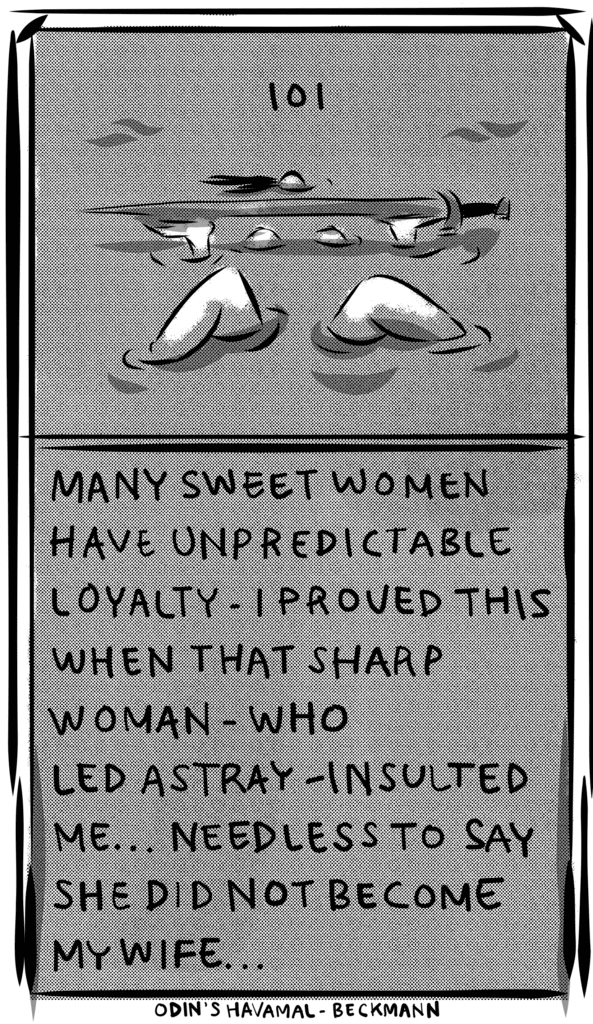
Odin’s Quest for the Song Mead (102 – 109)
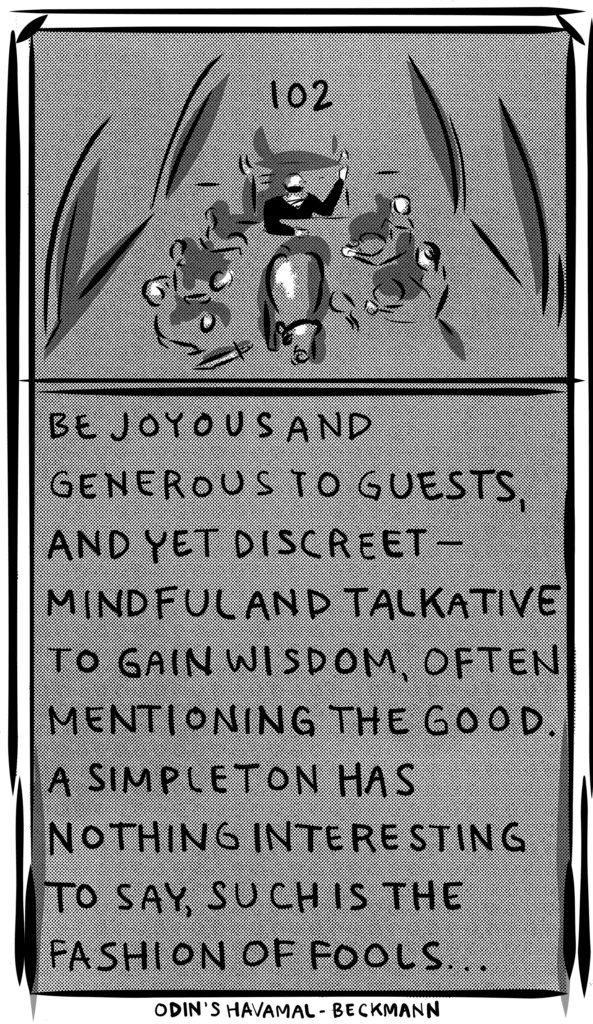
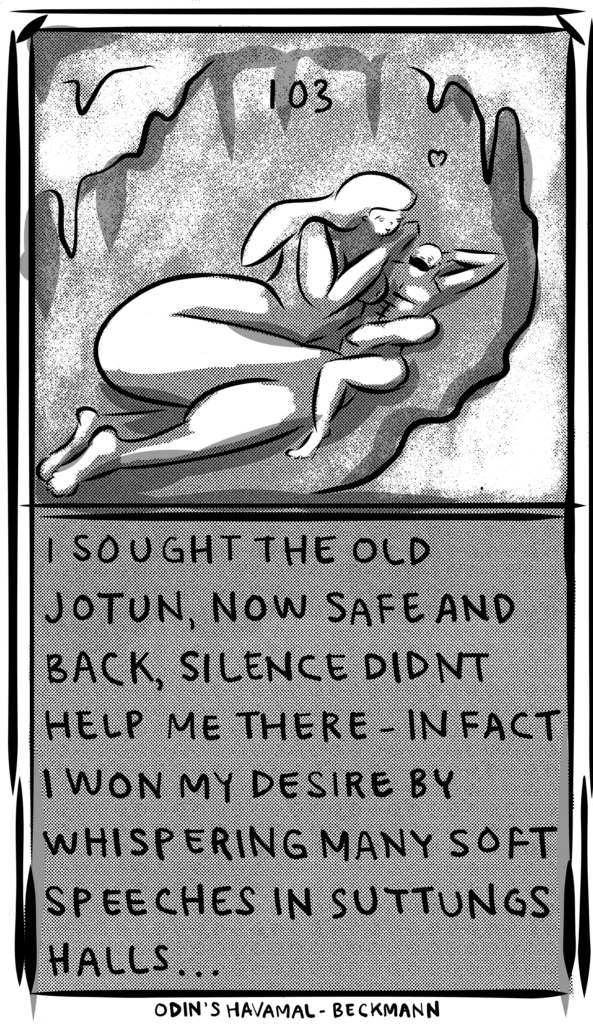
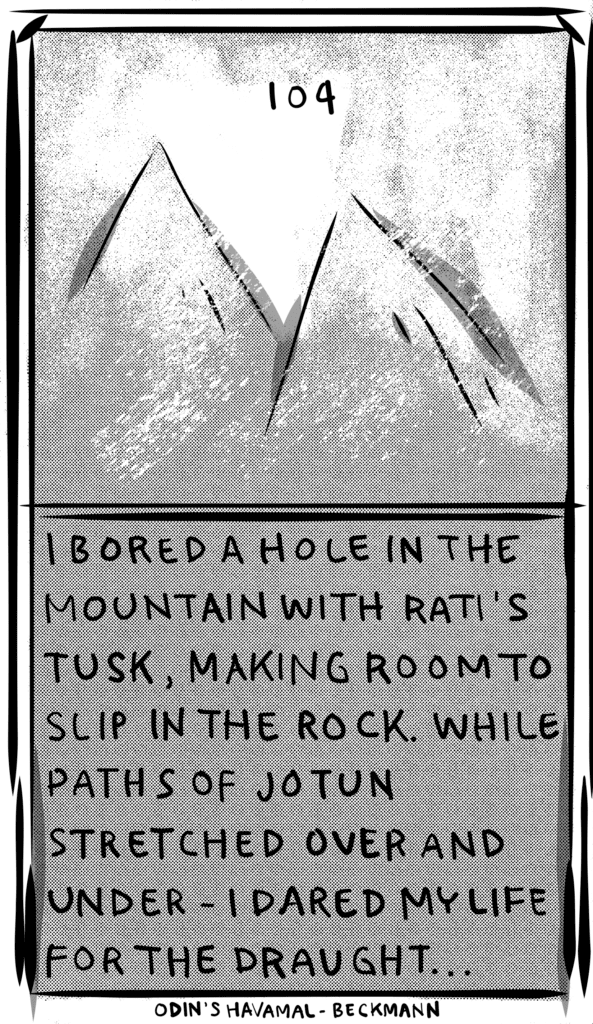
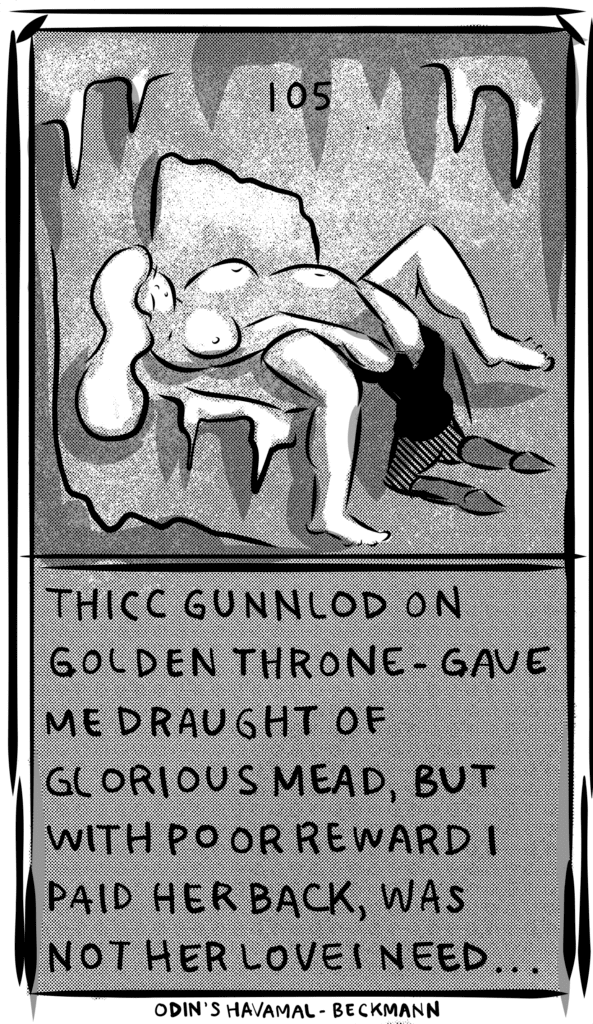
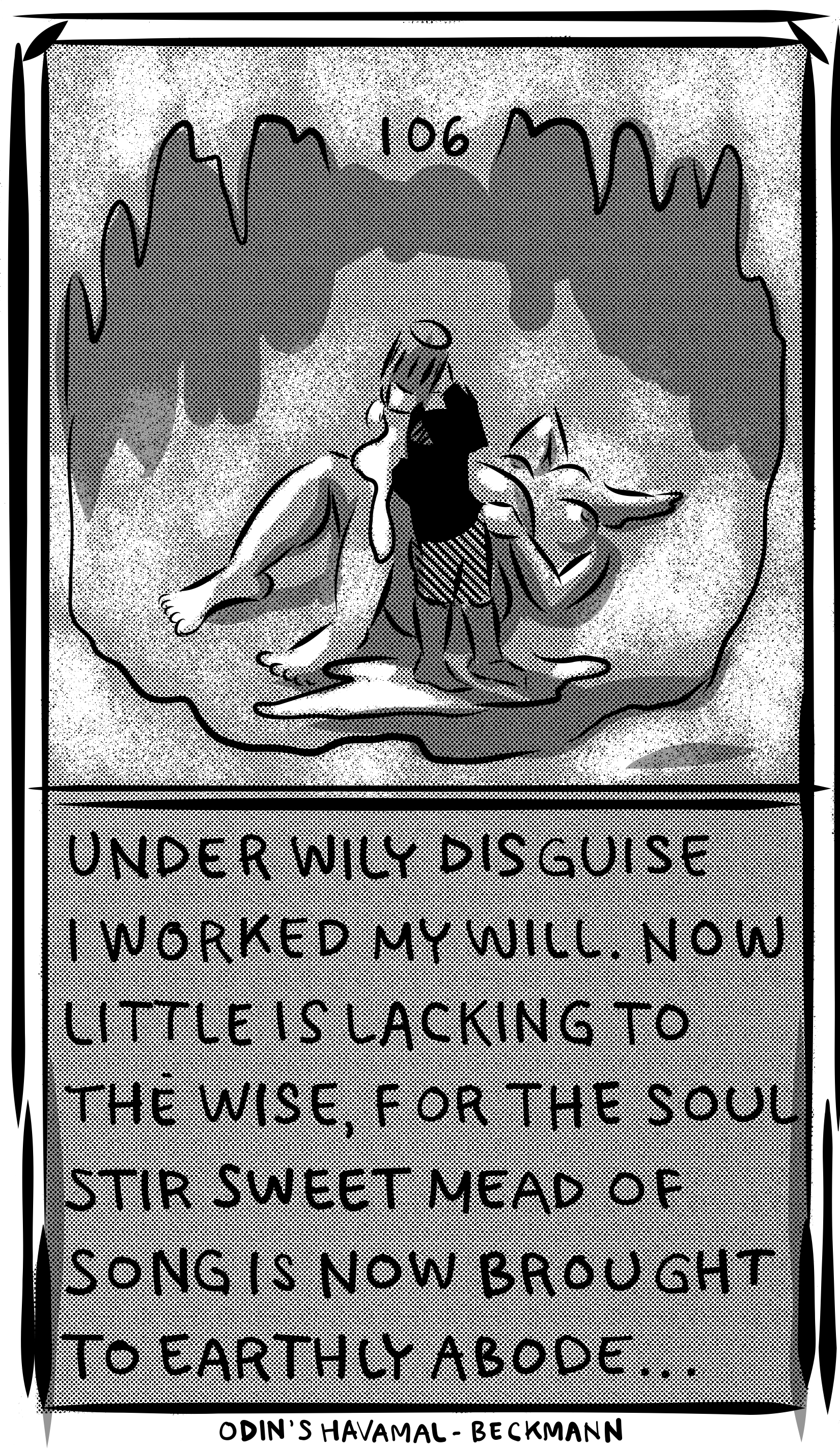
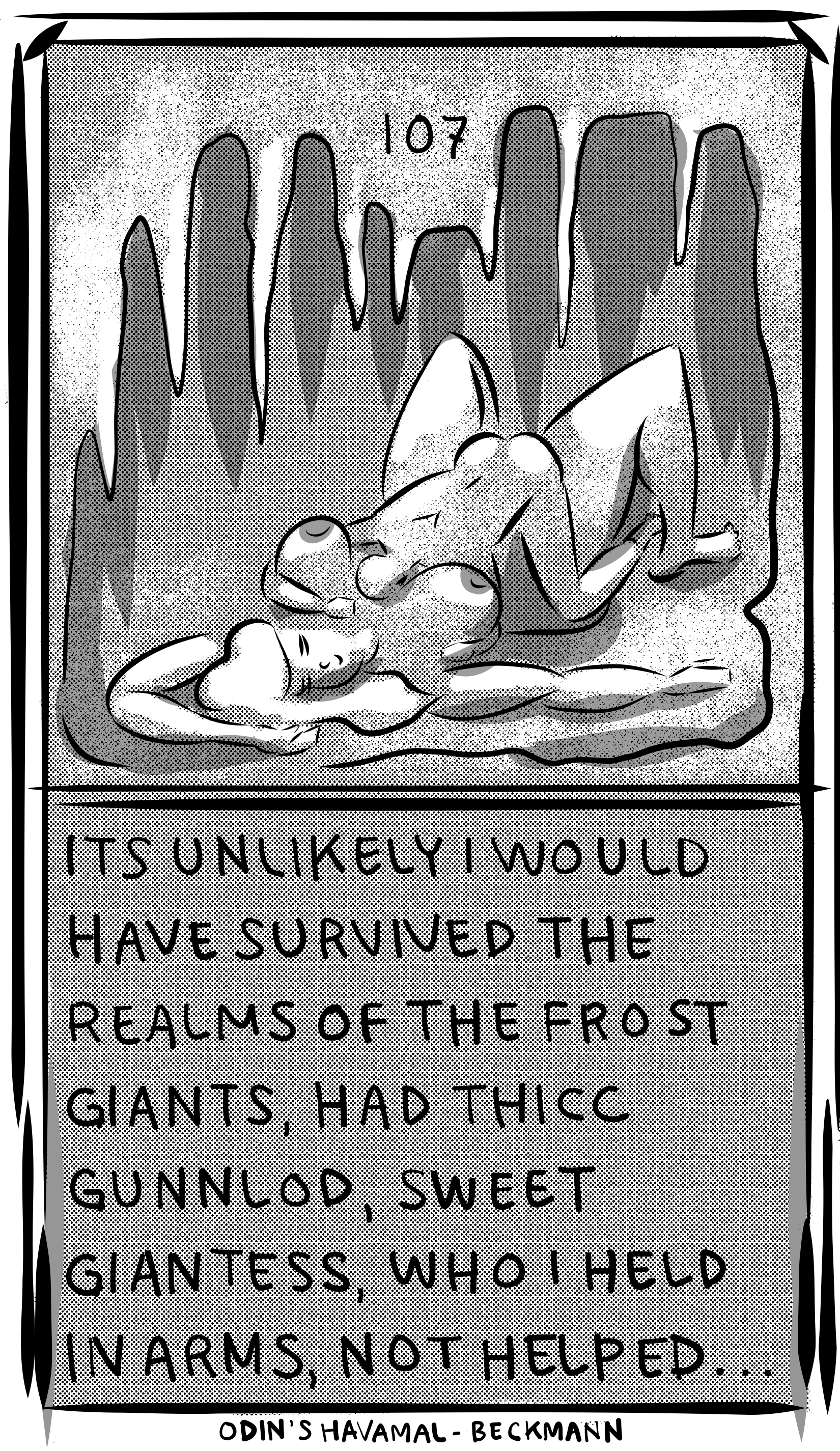
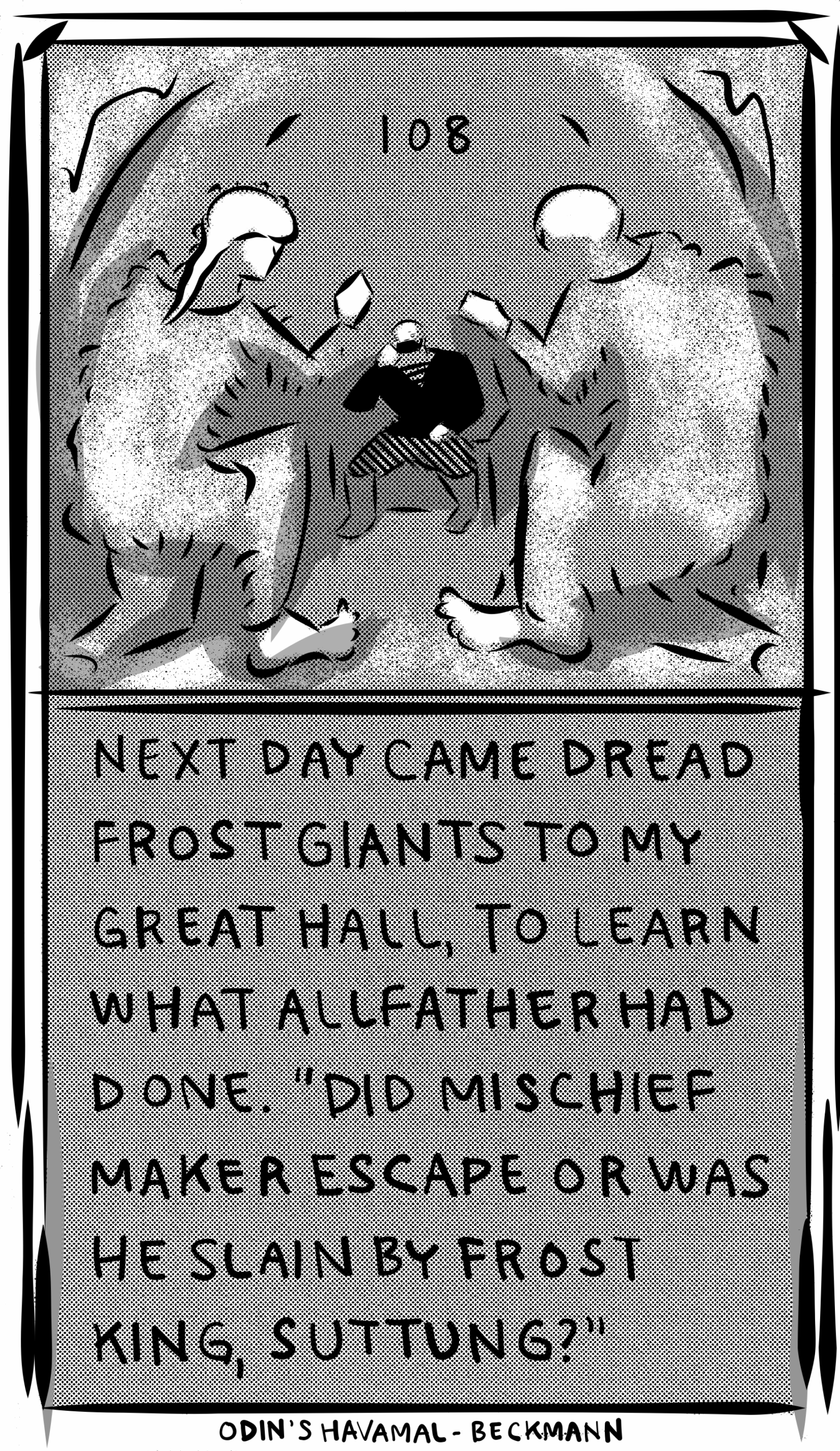
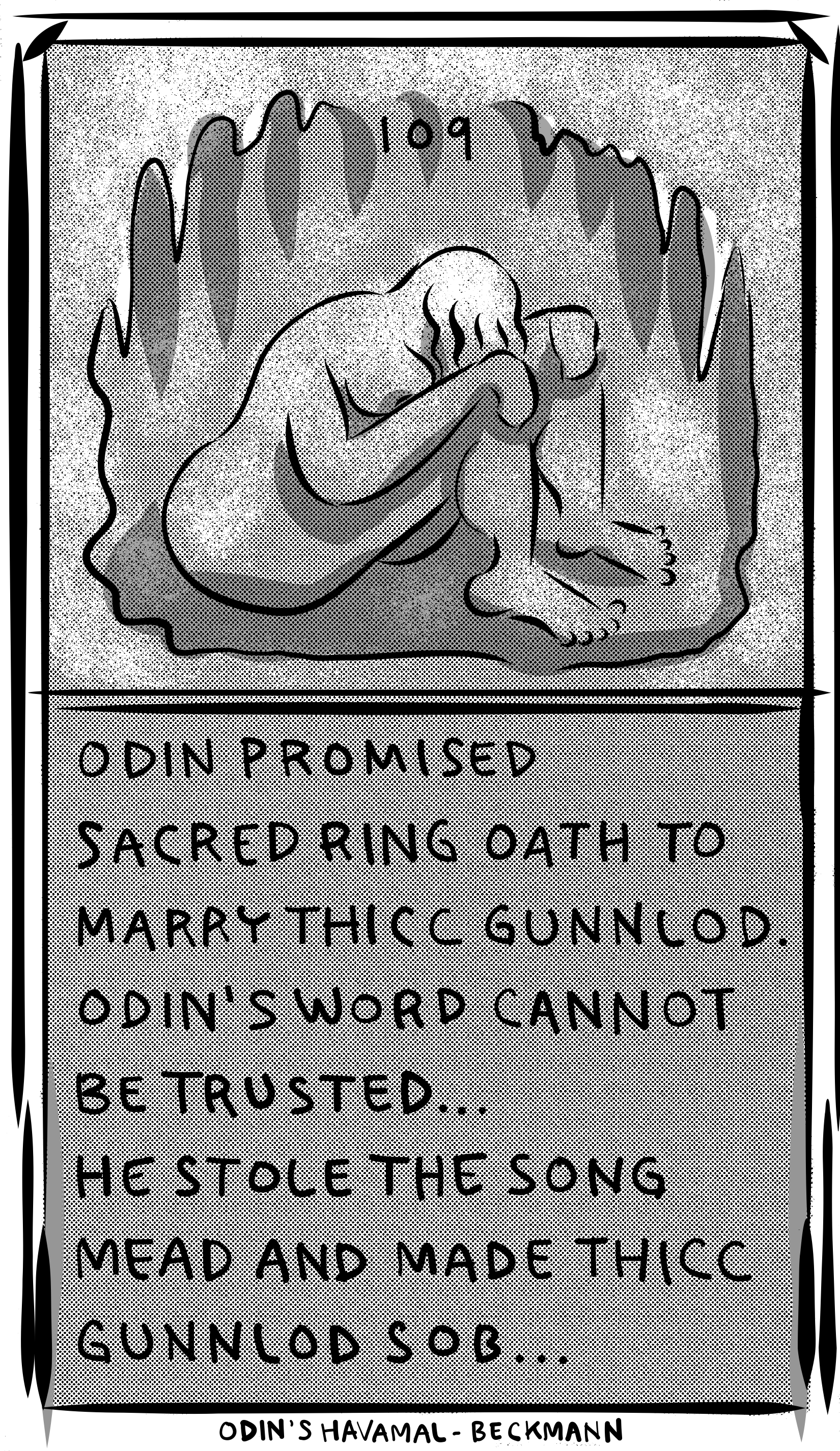
The Counseling of the Wandering Bard (110-137)
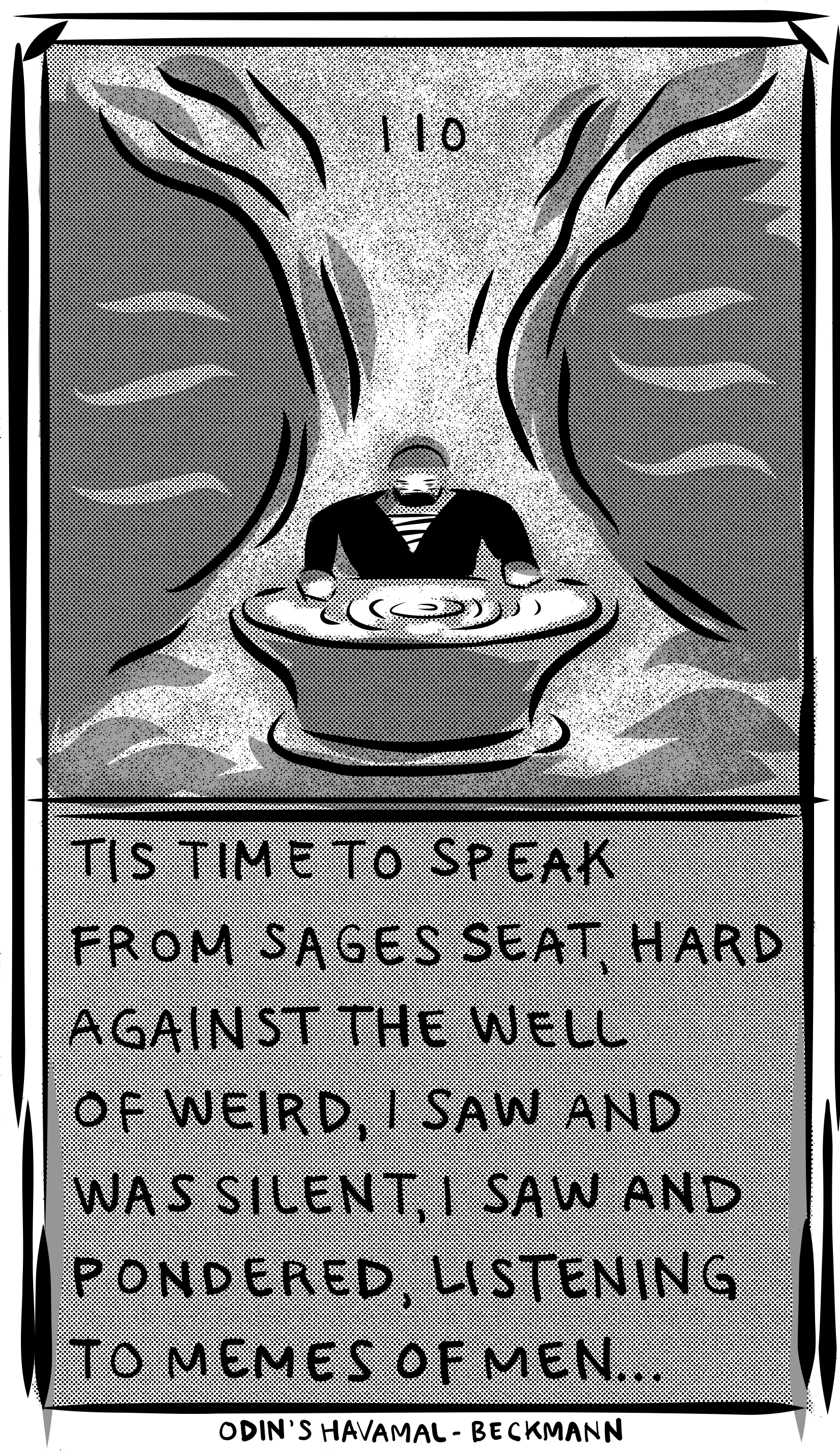
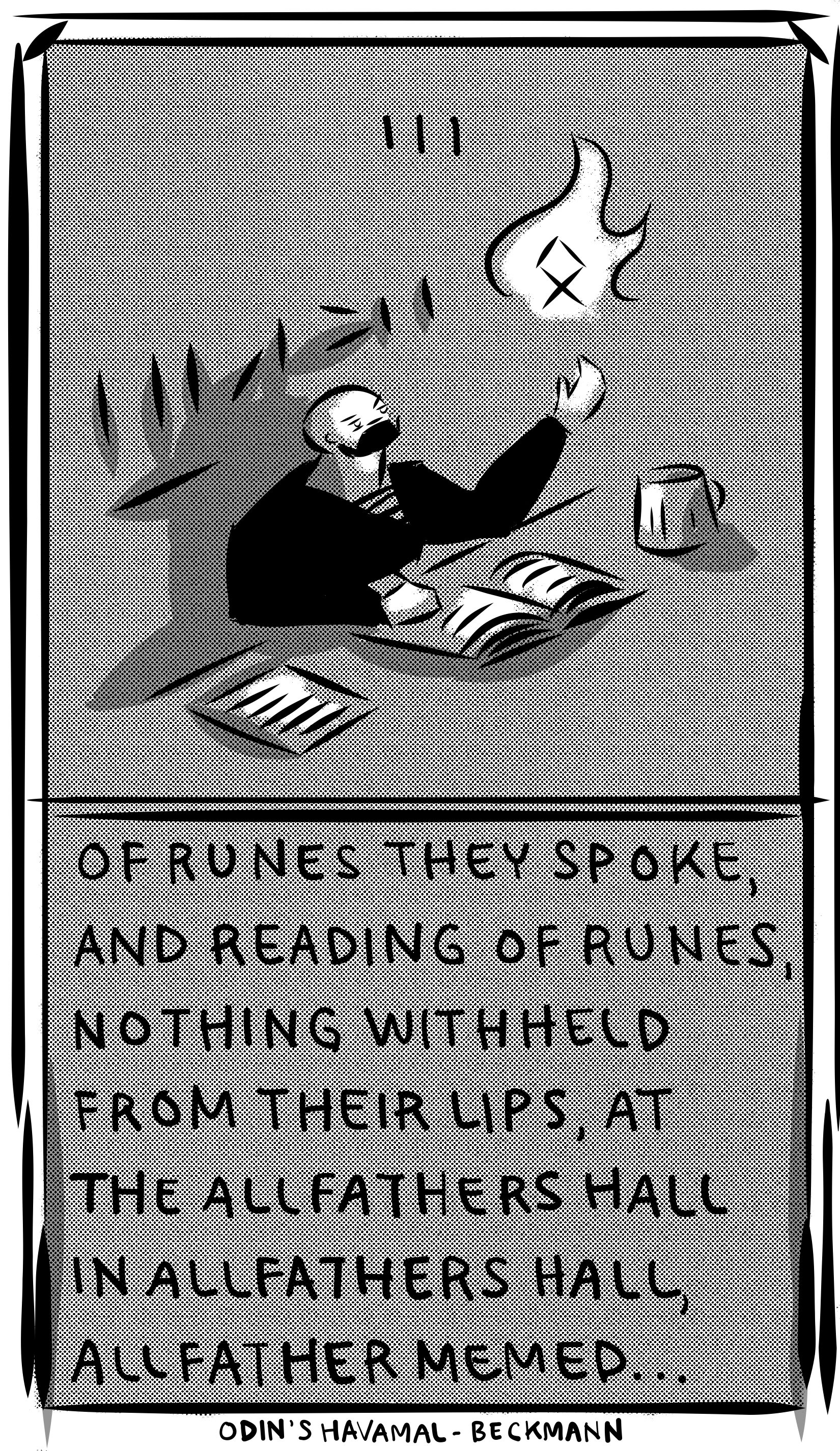
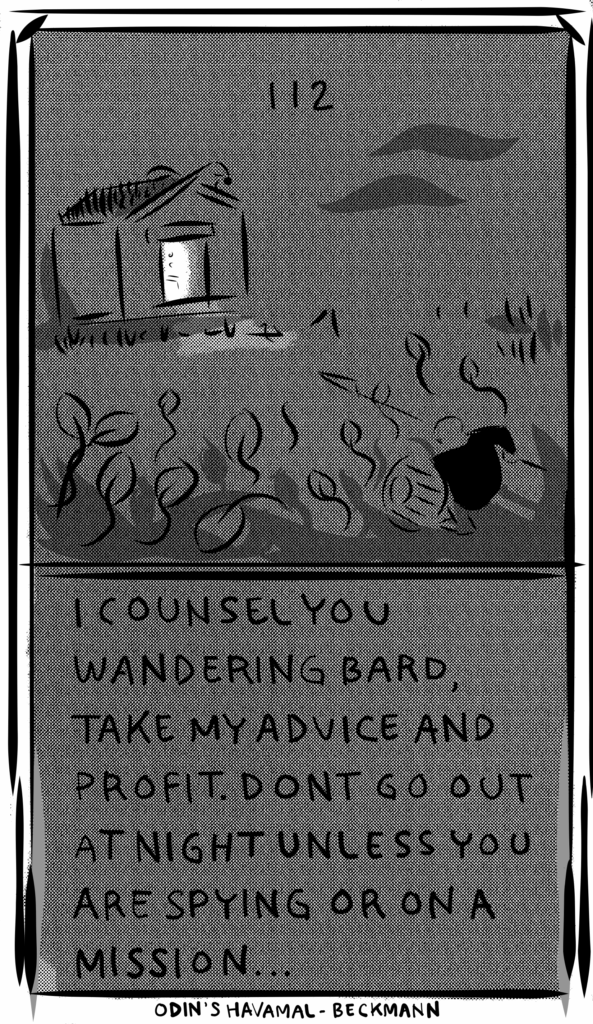
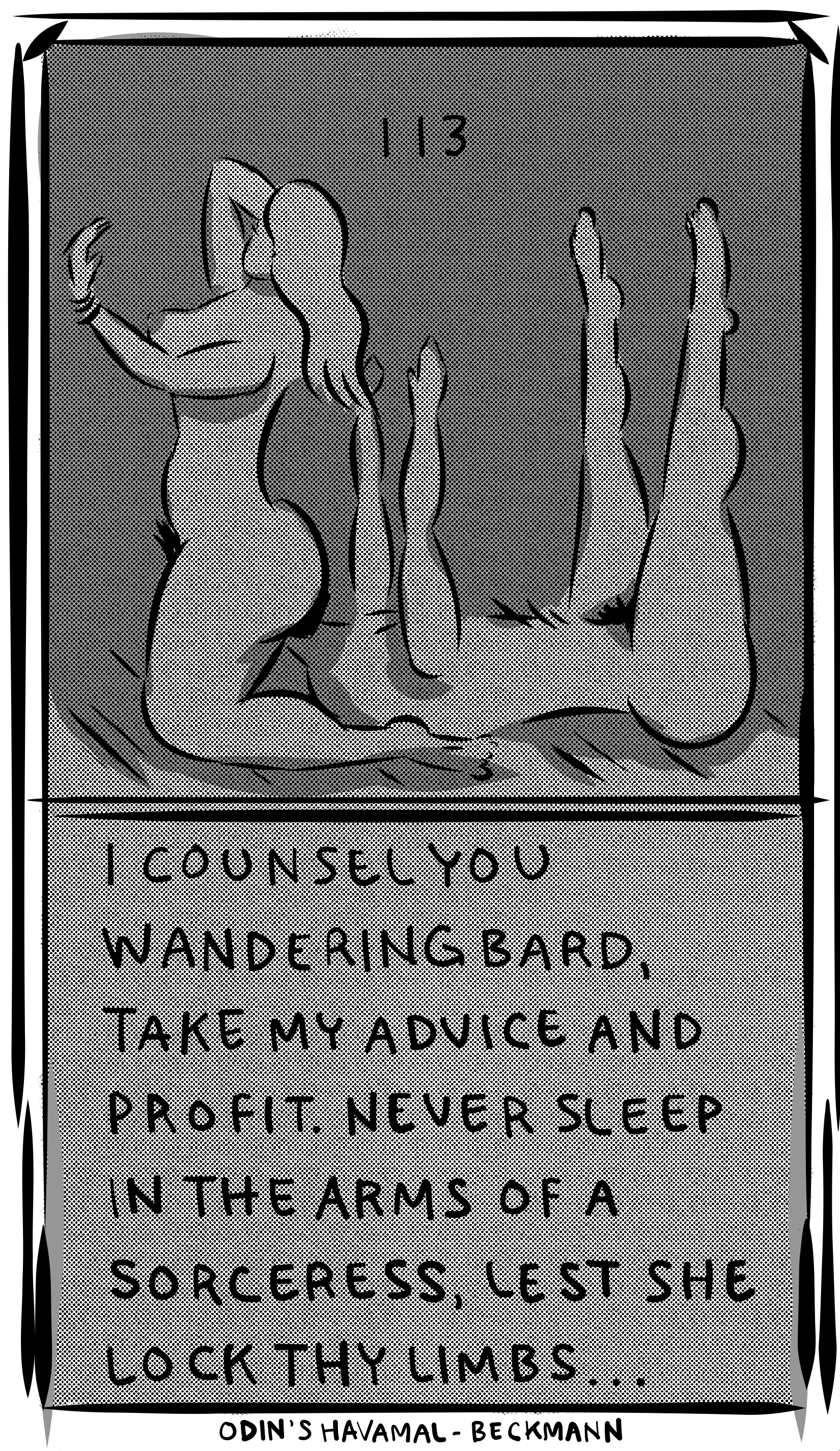
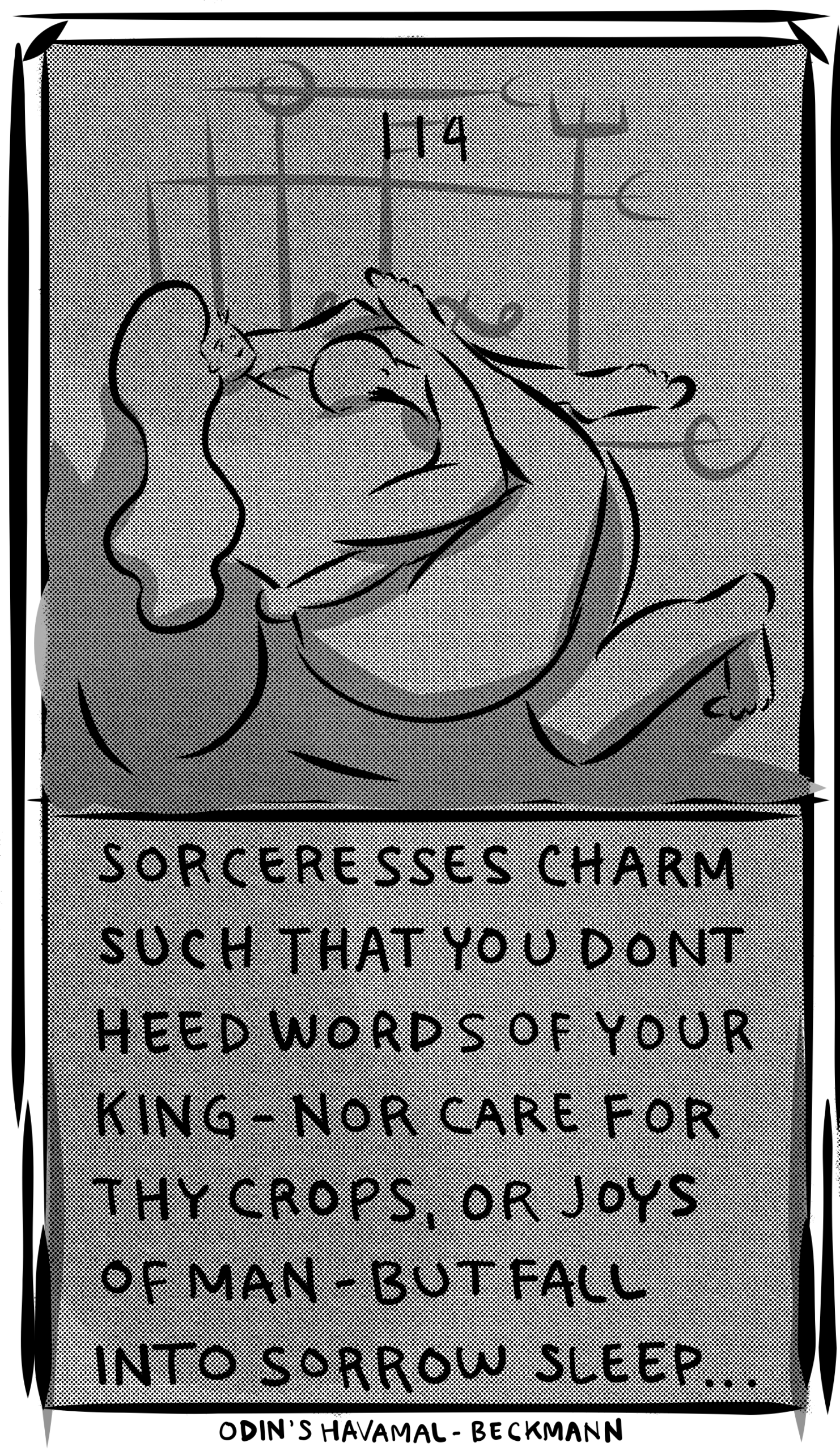
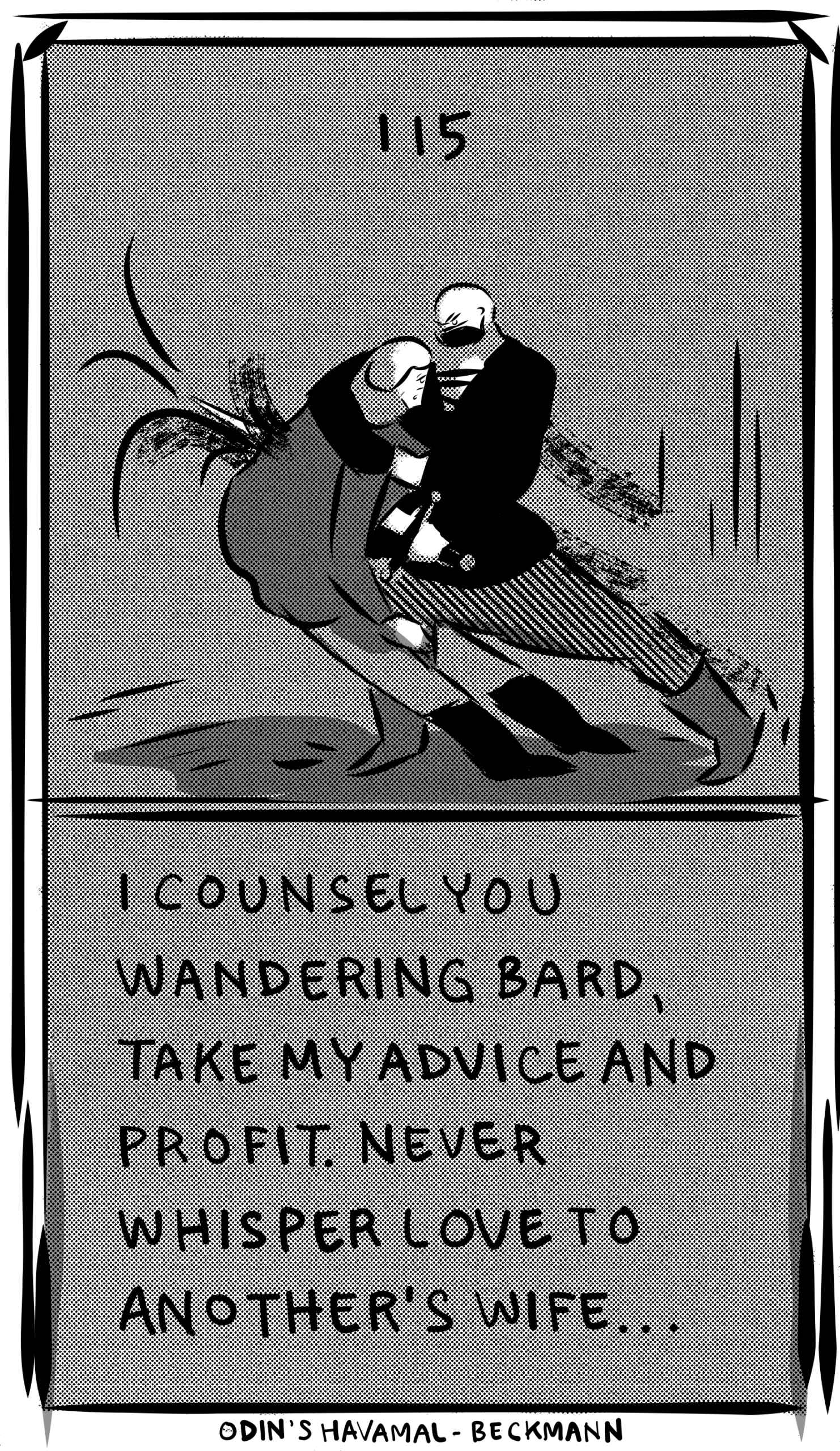
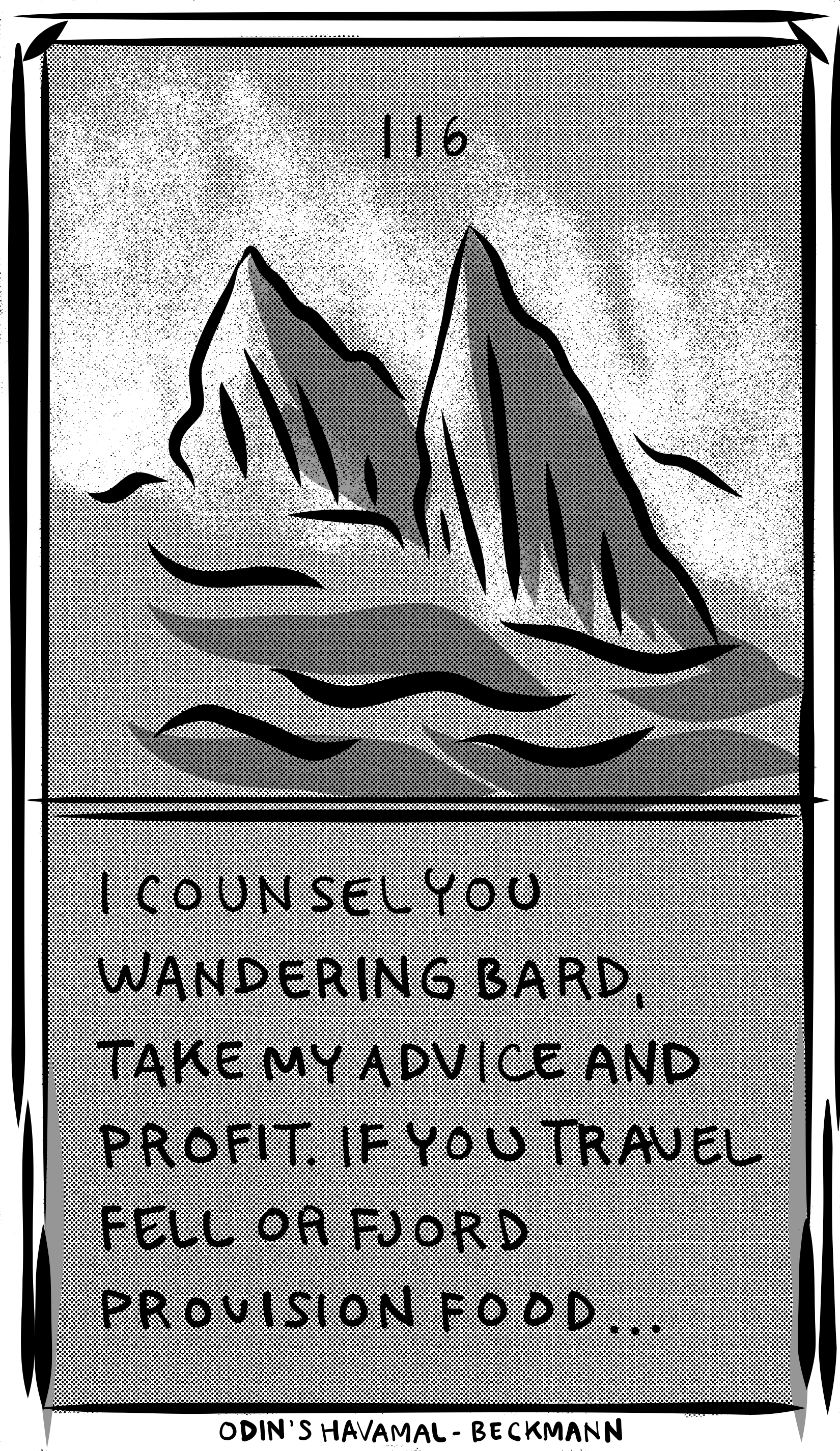
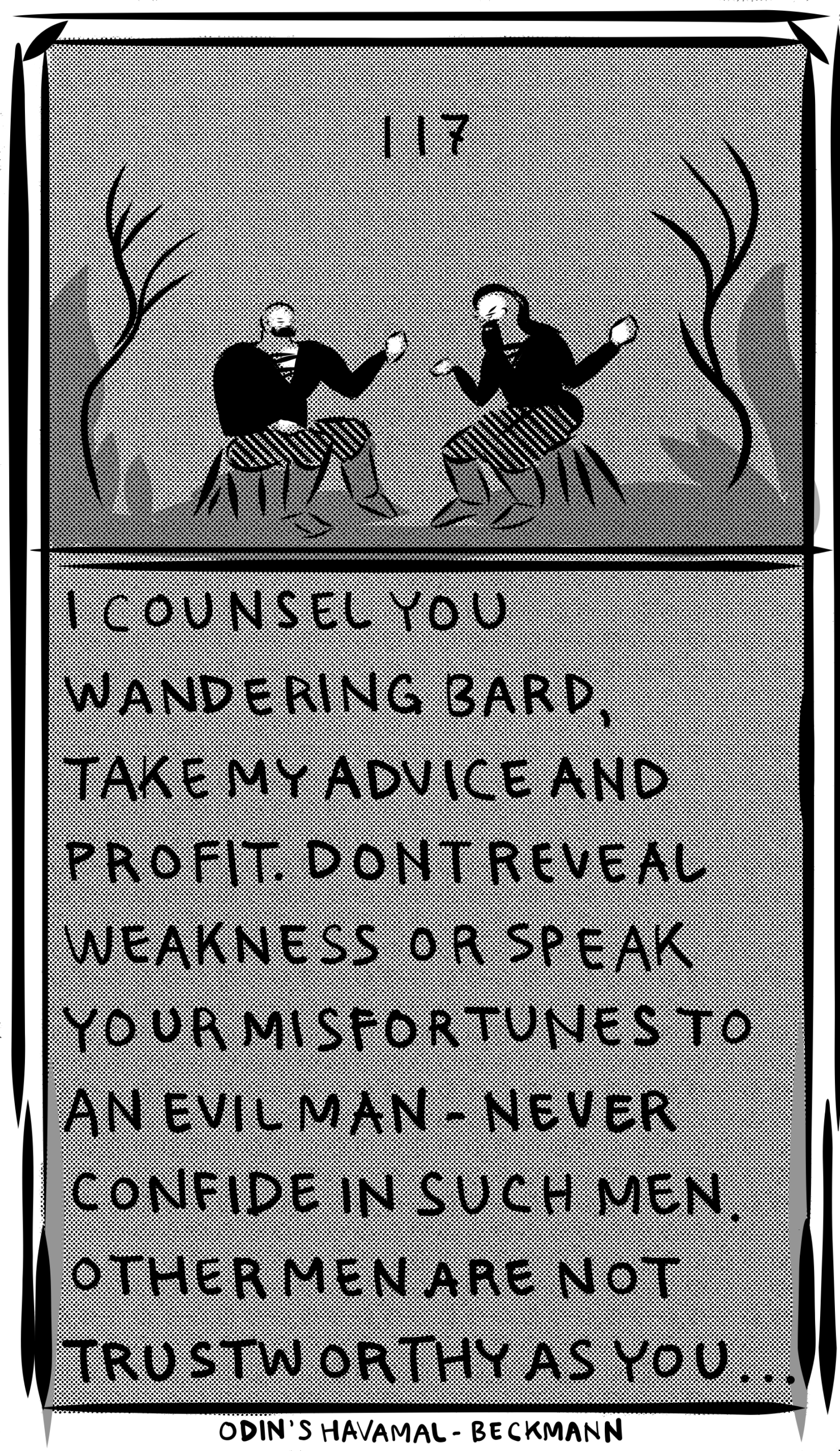
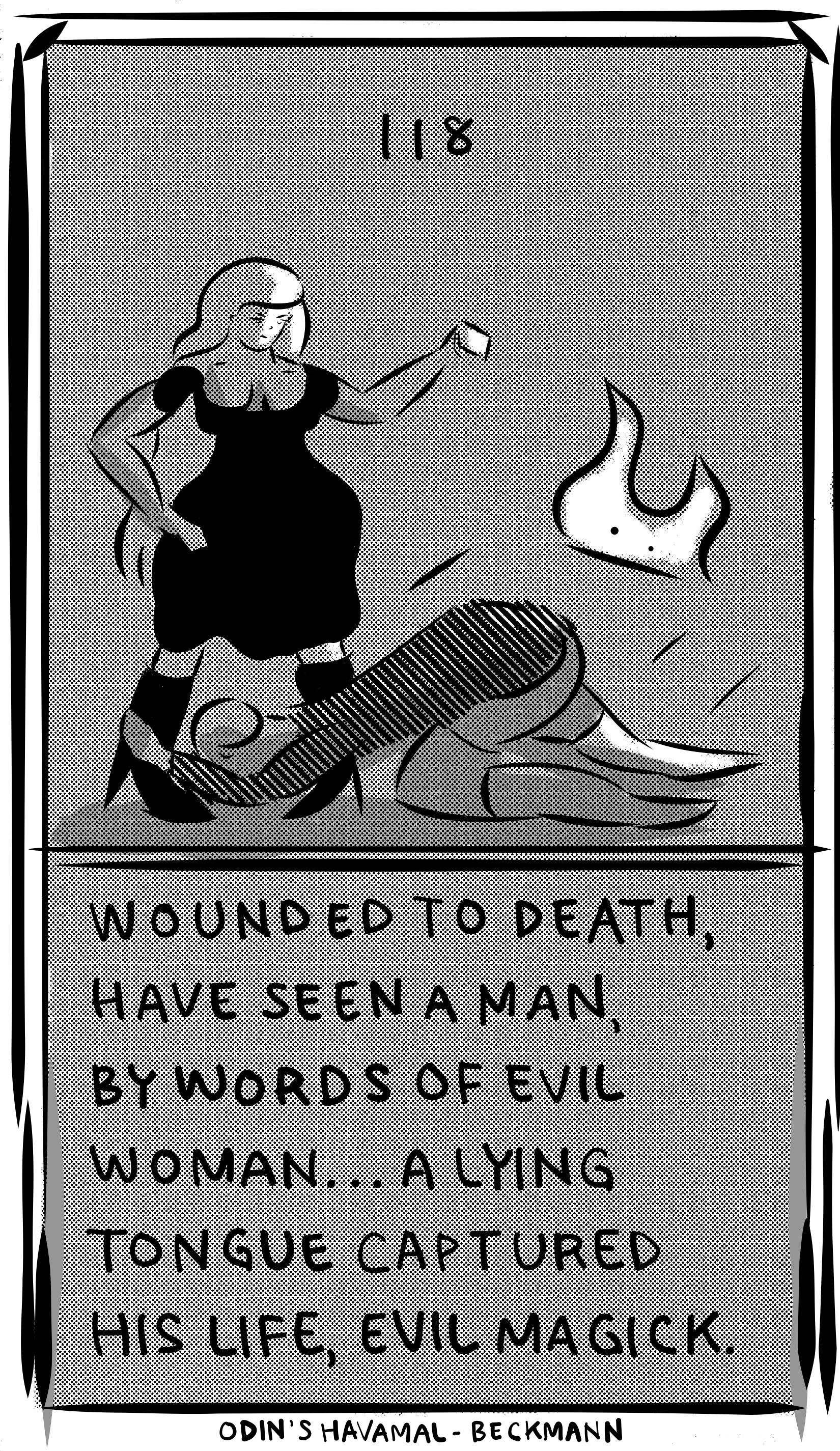

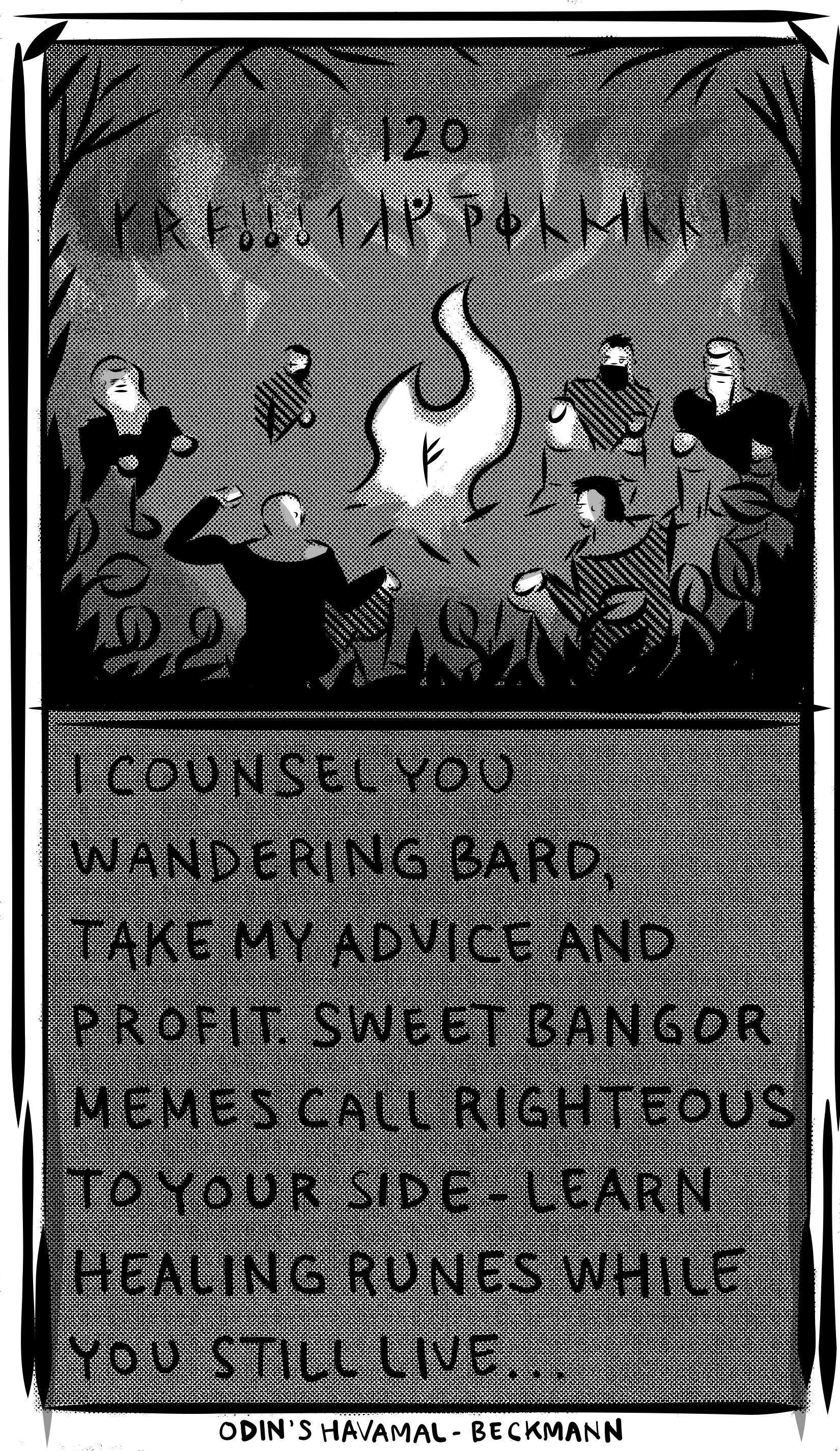
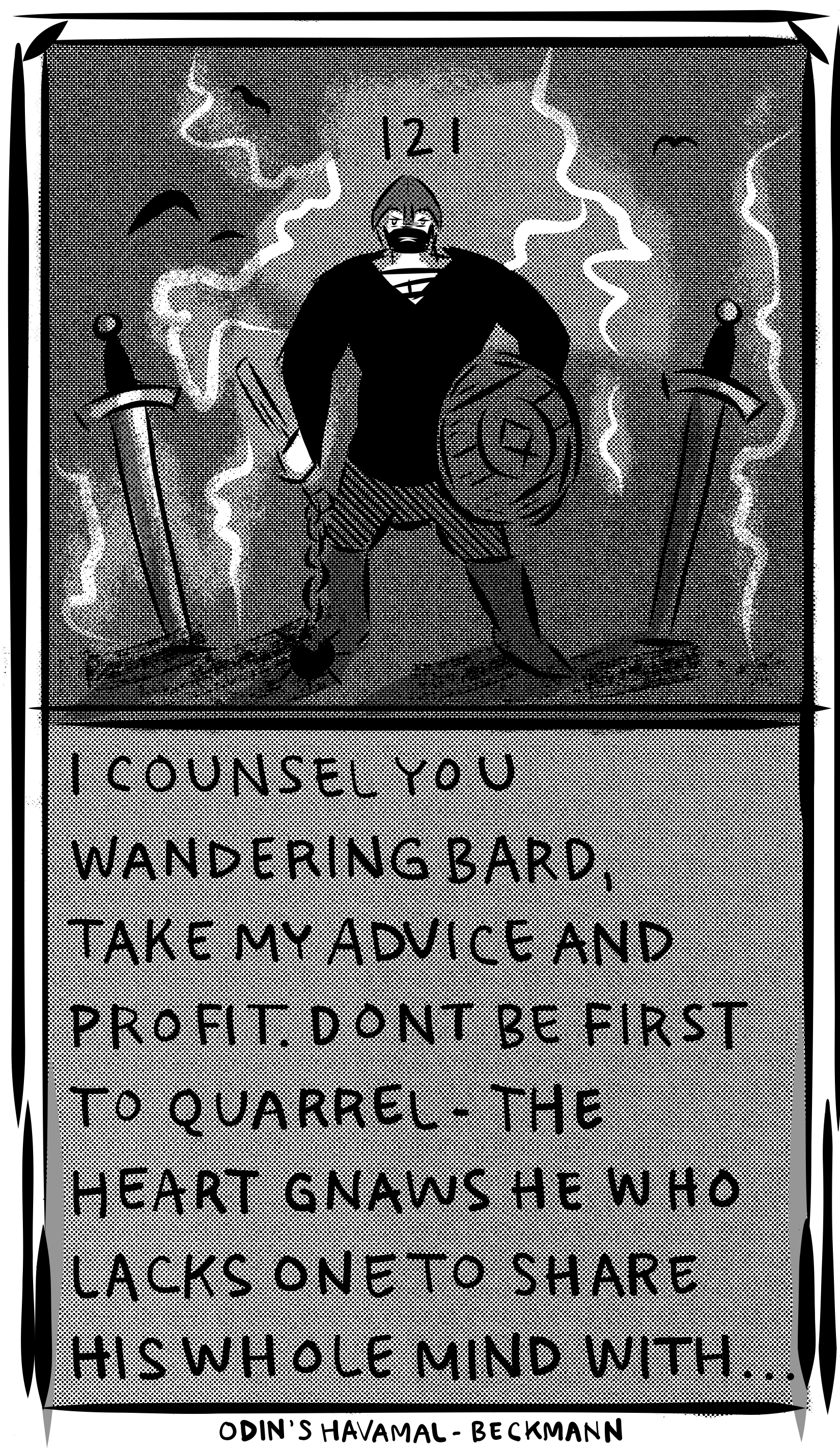
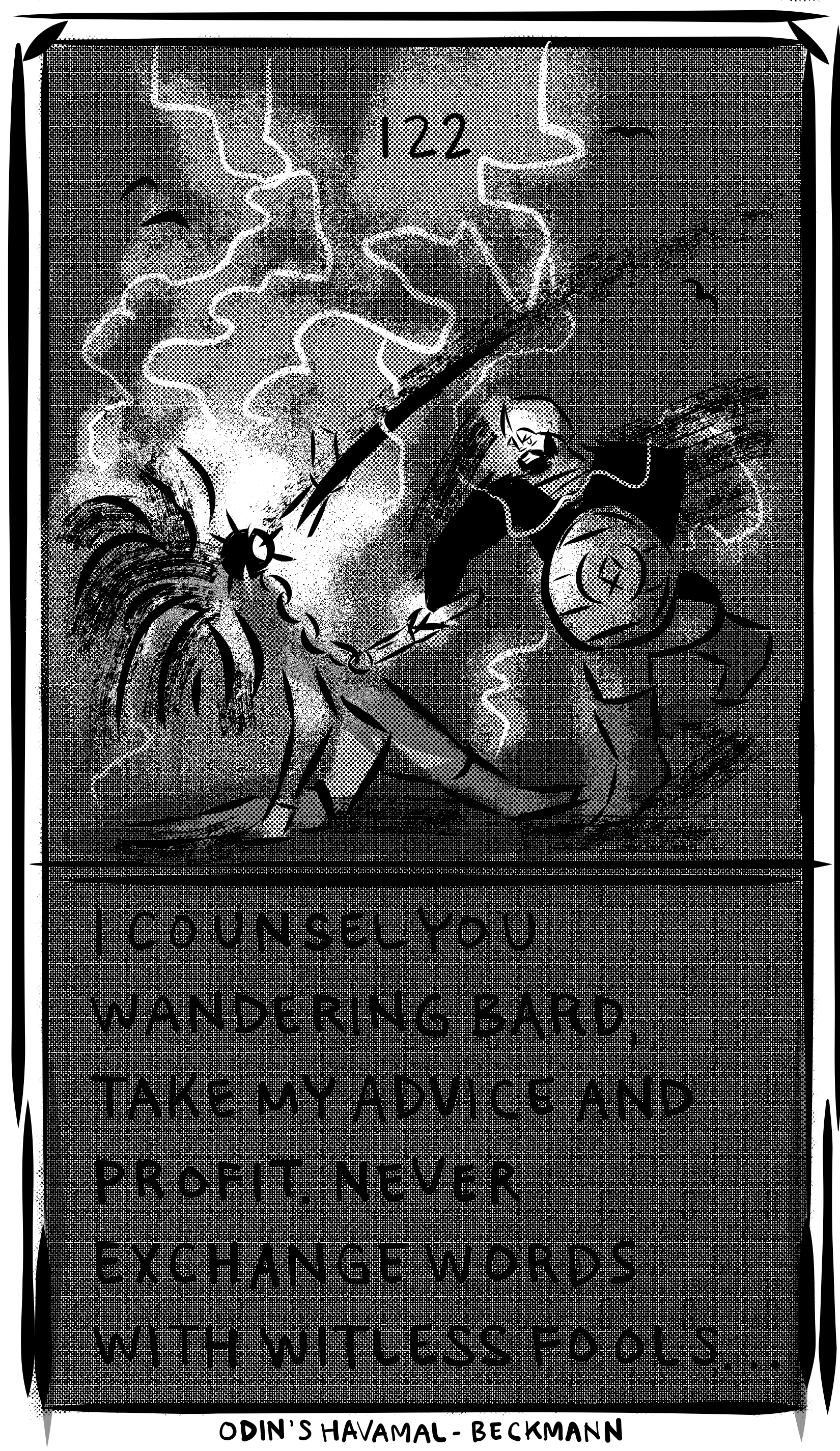
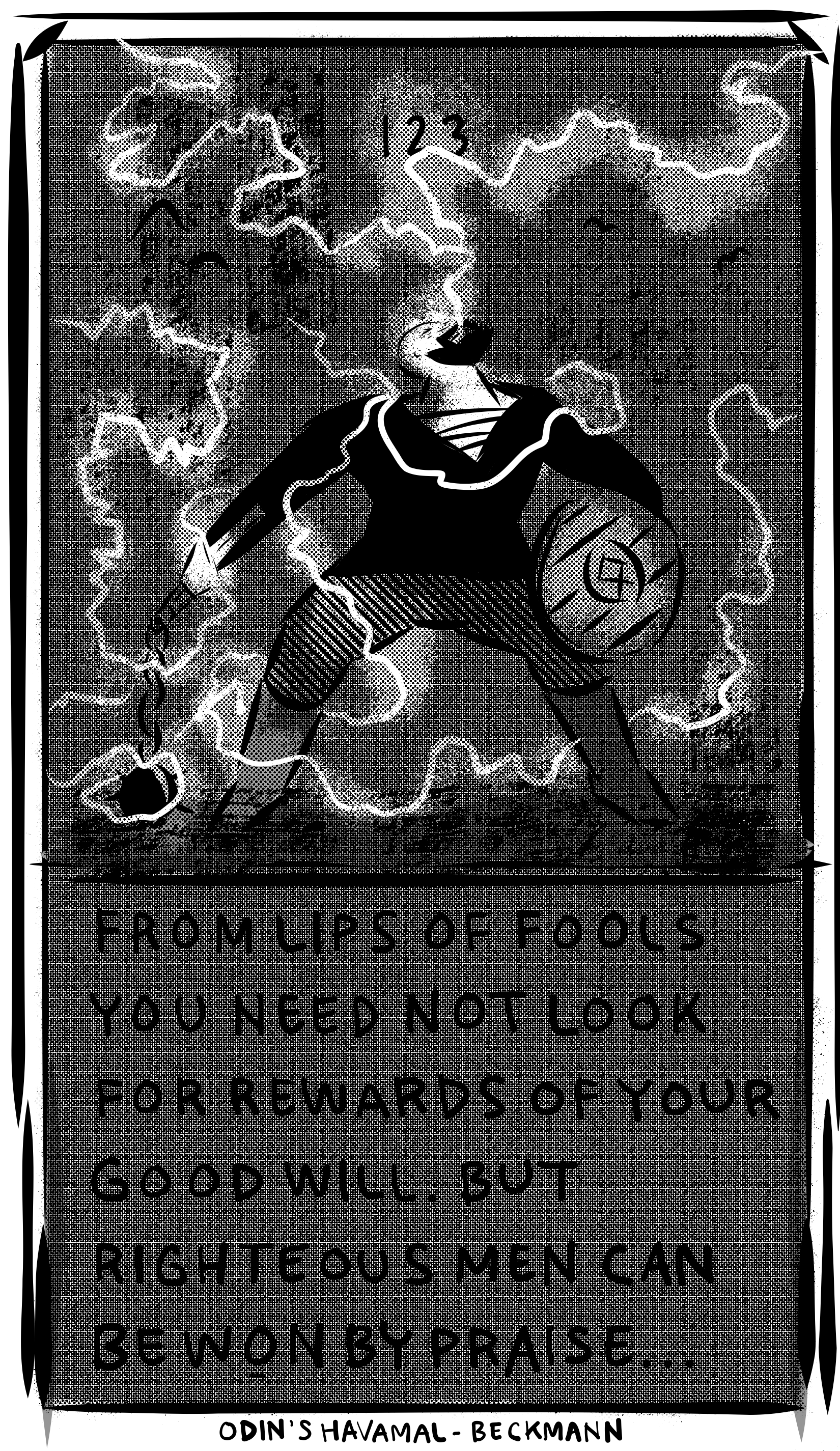
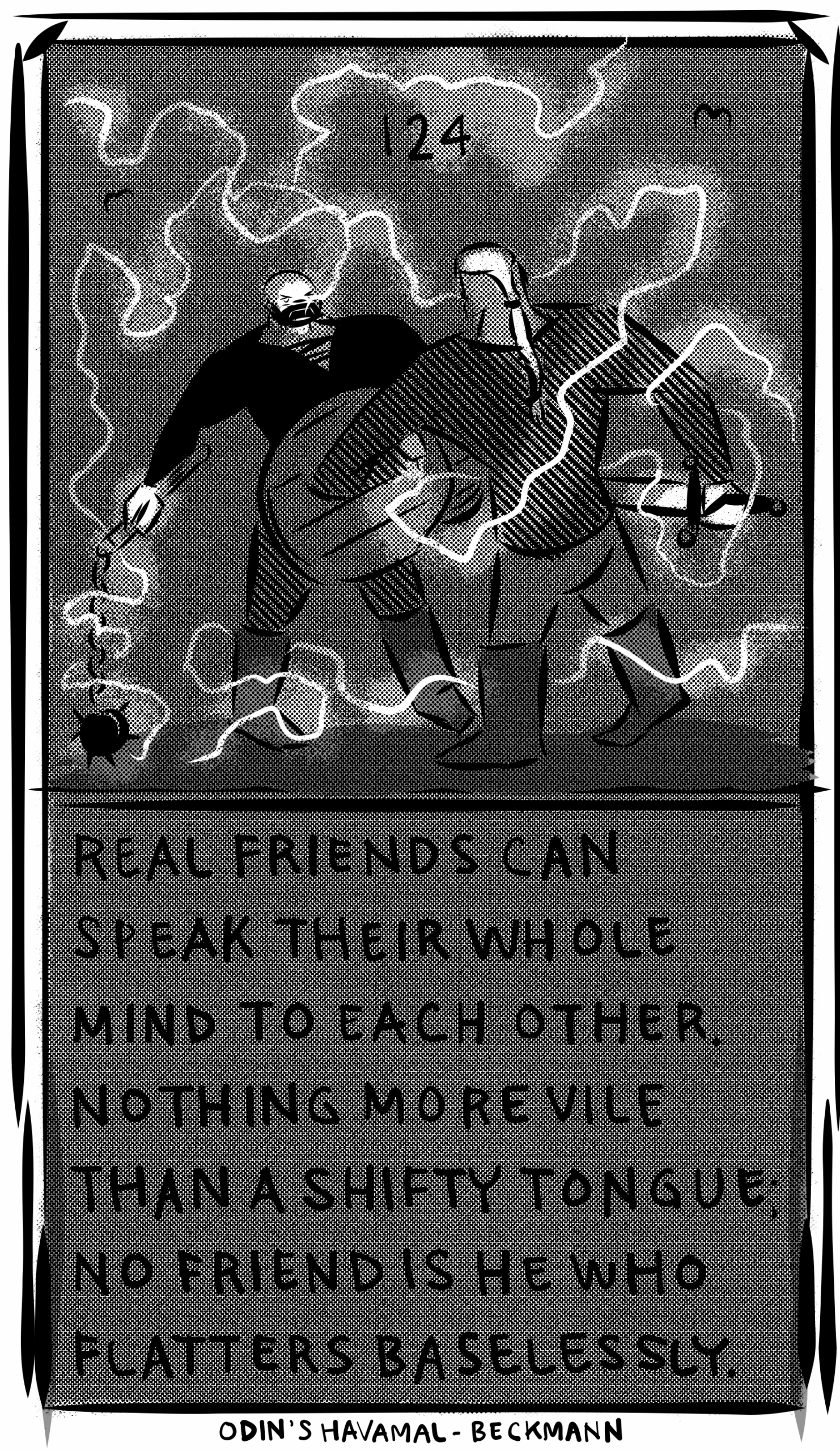
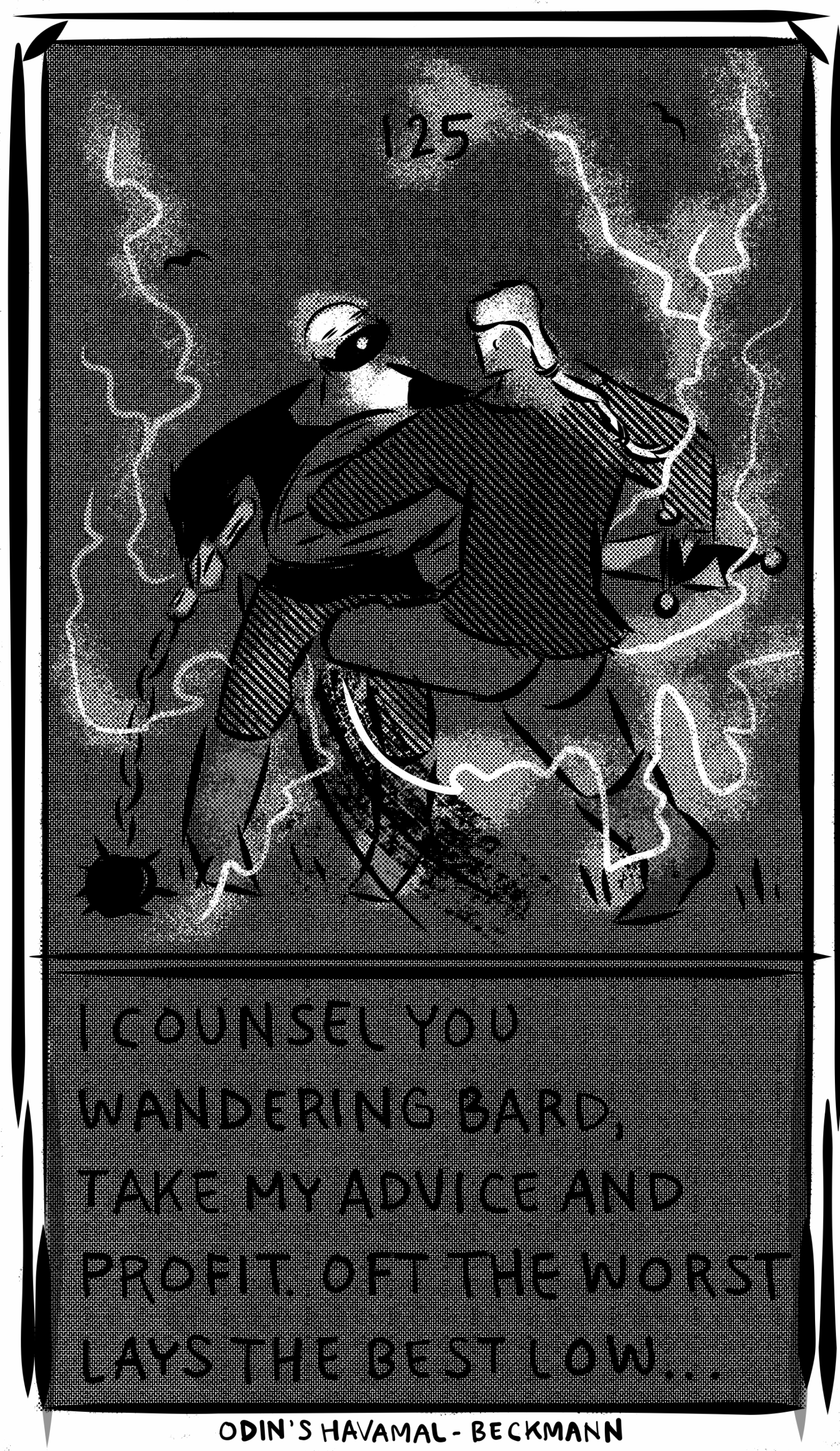

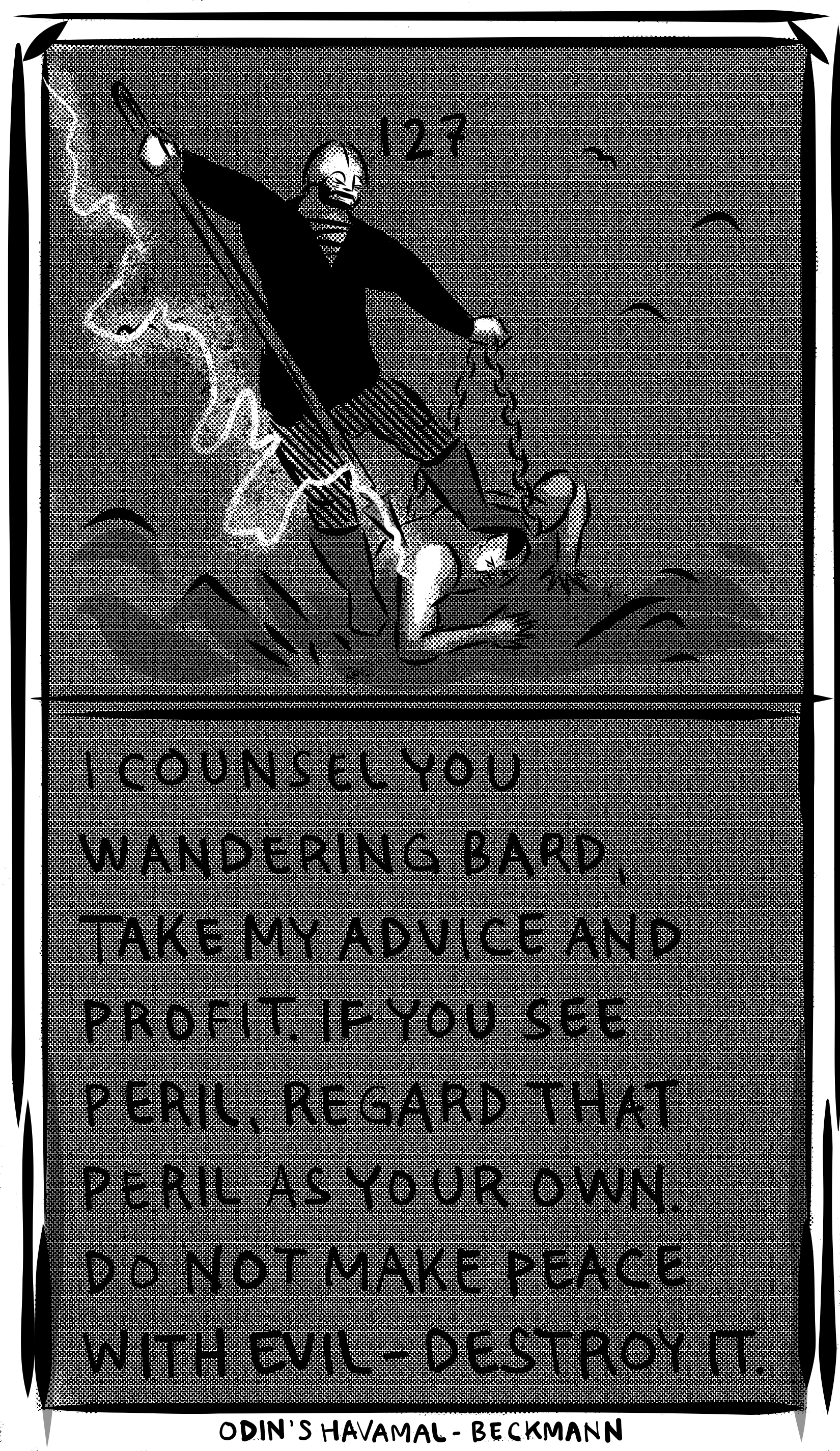
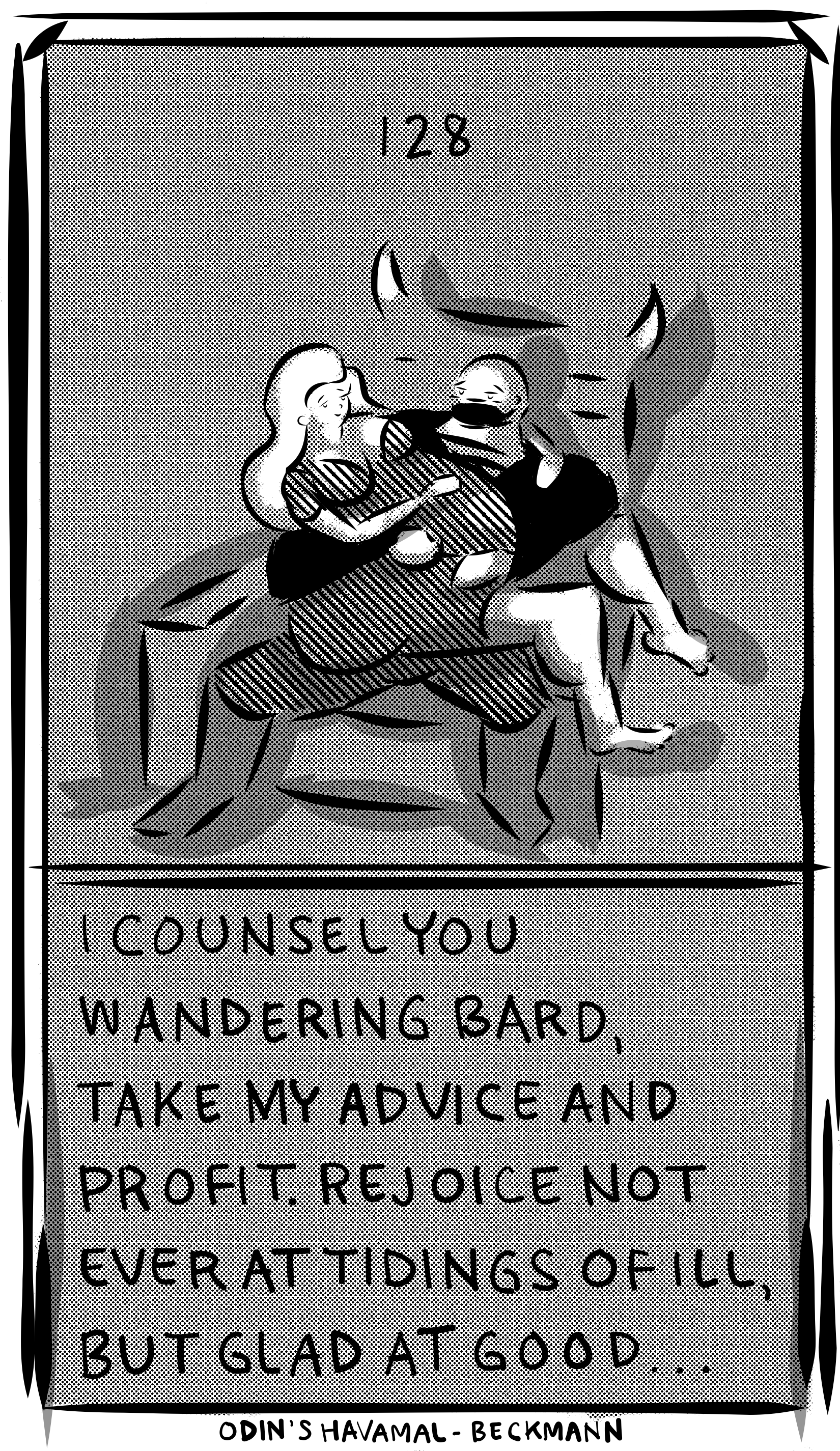
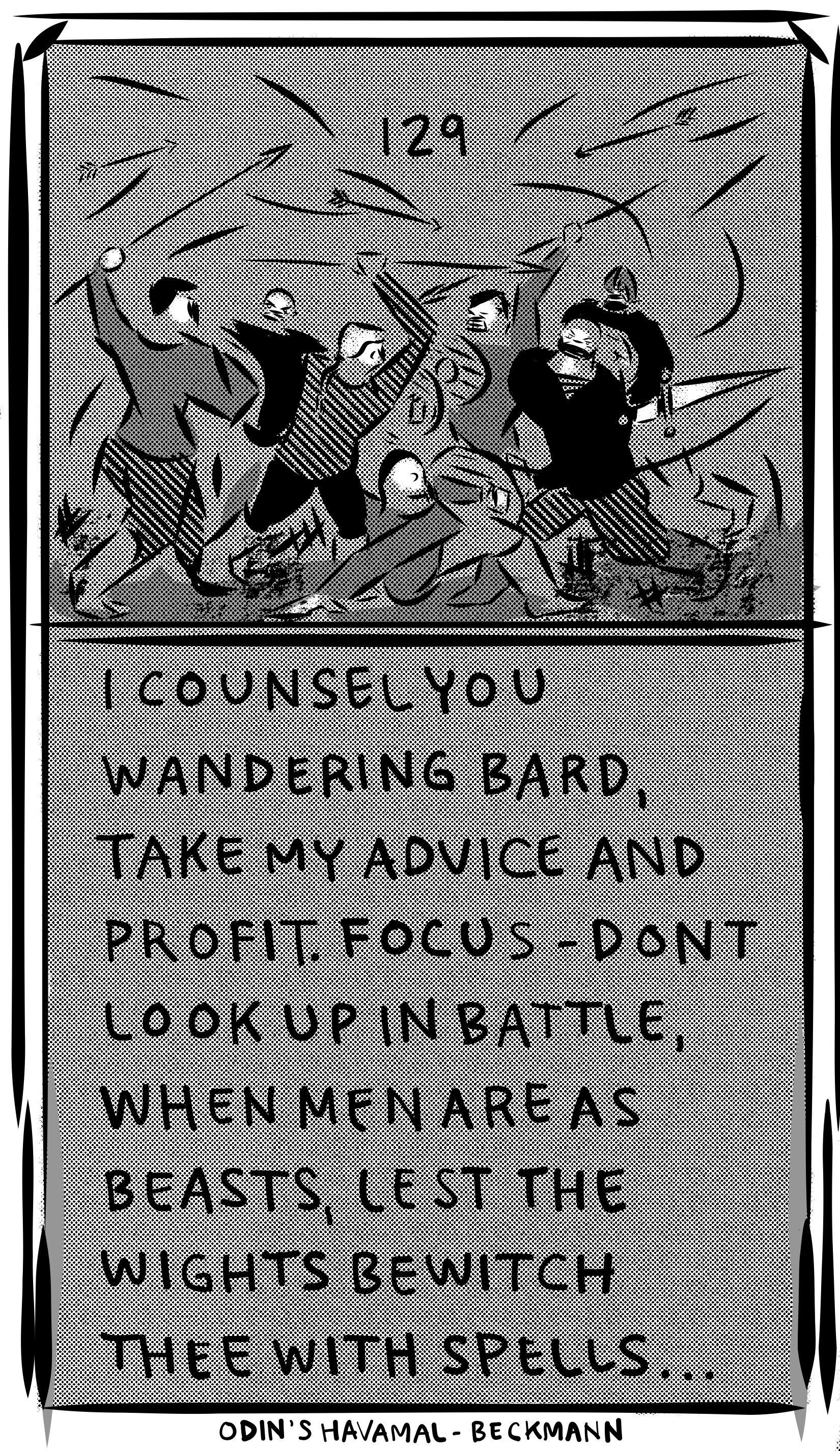

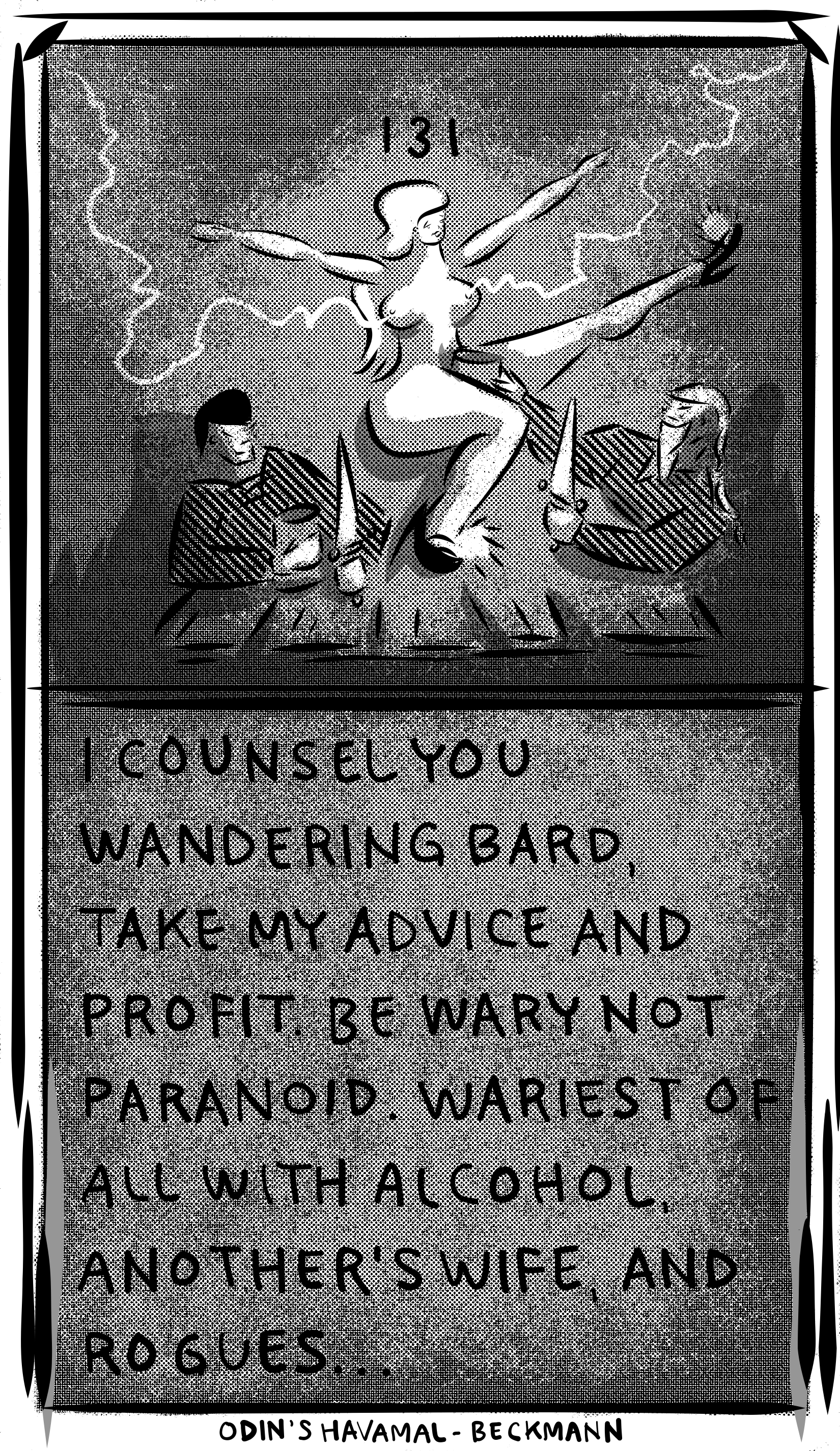

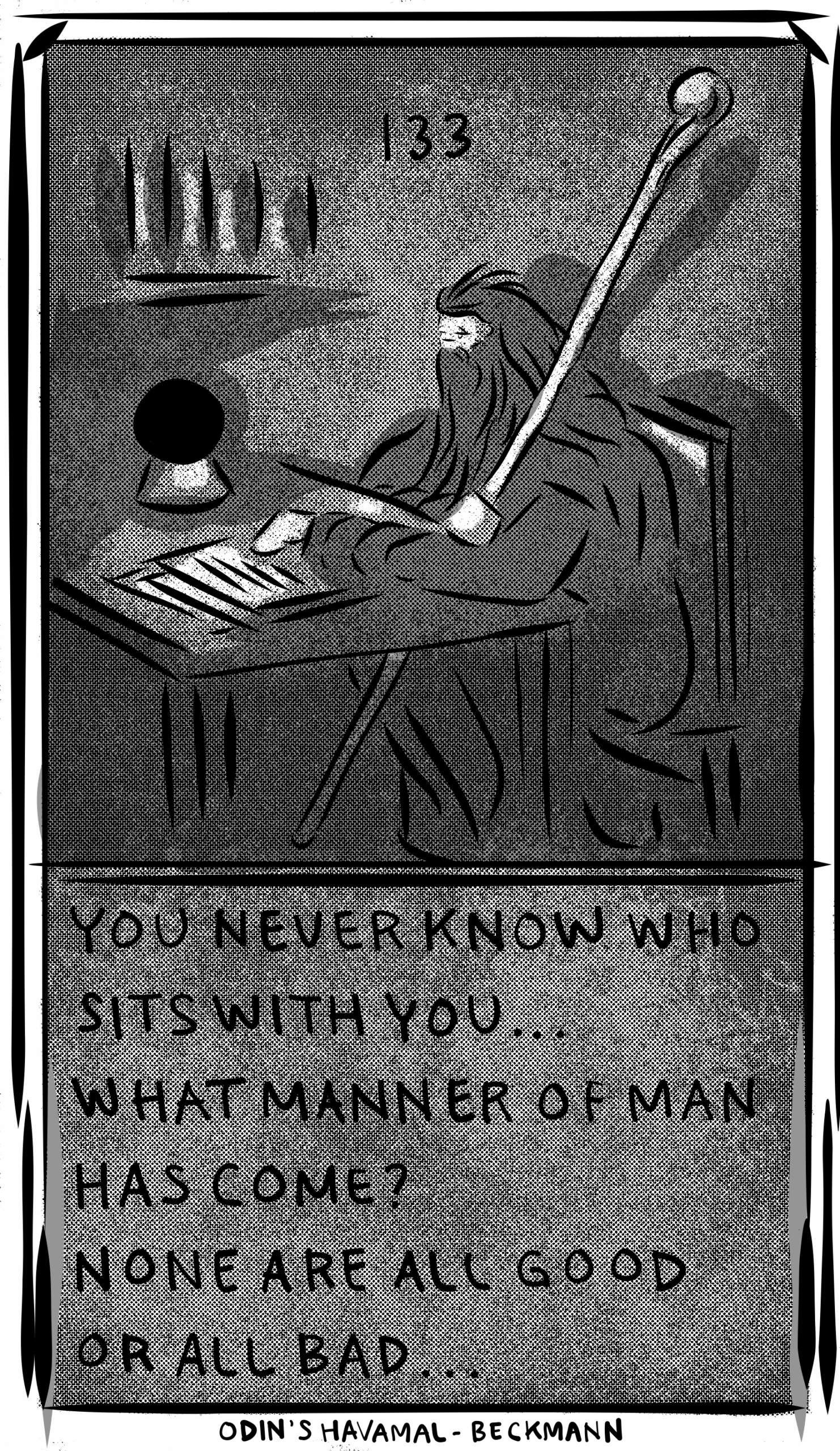
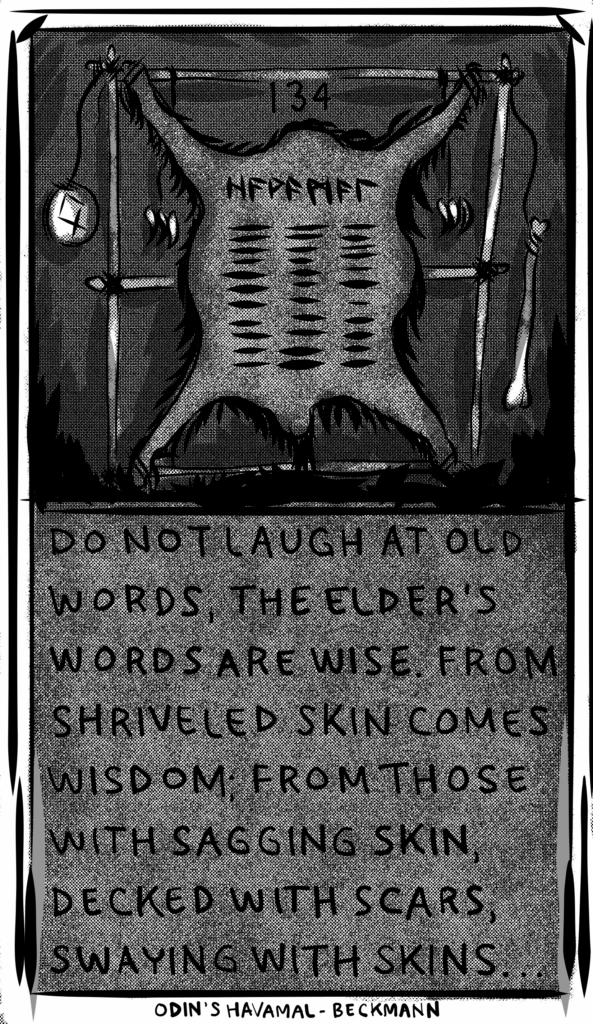

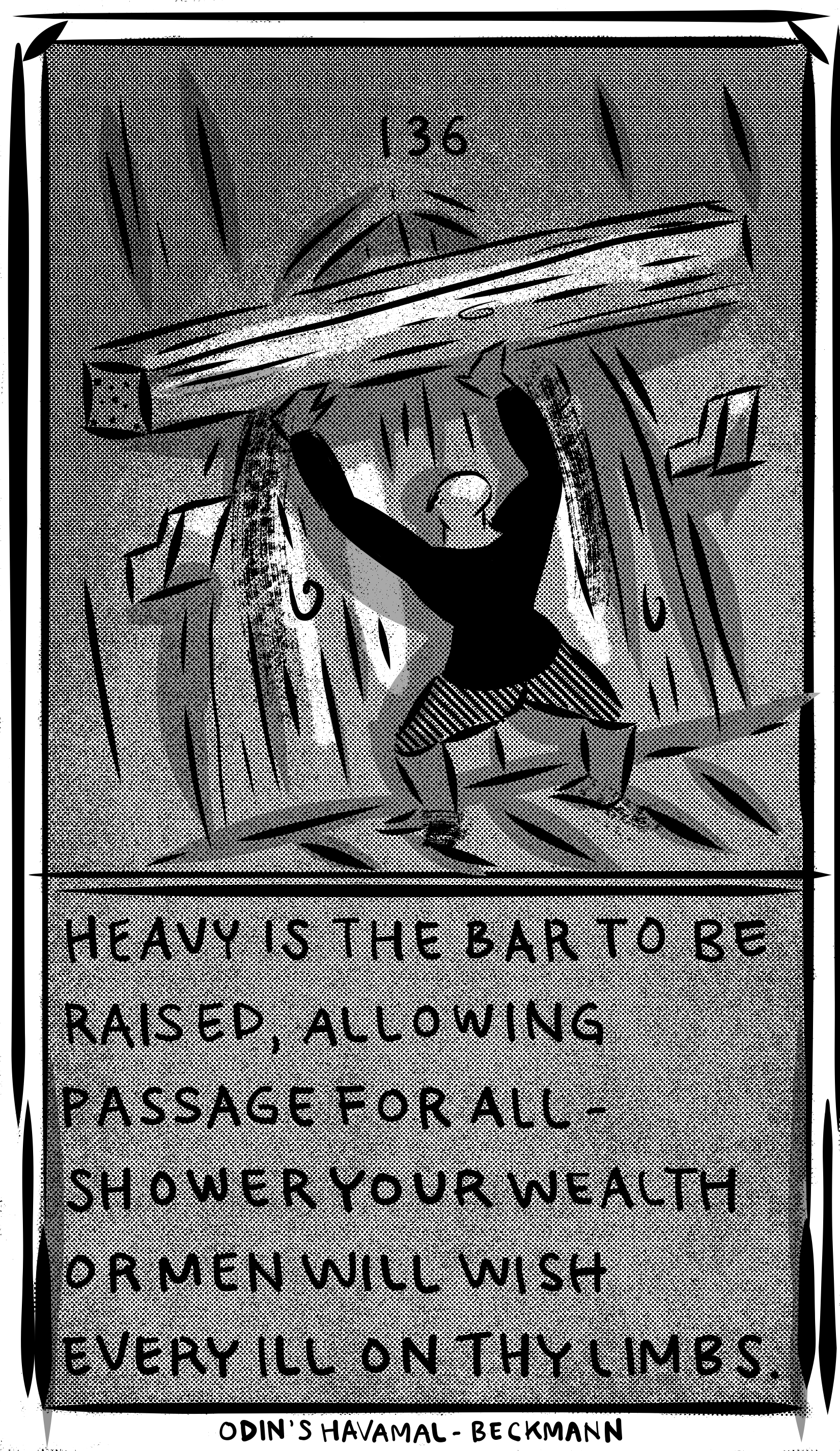
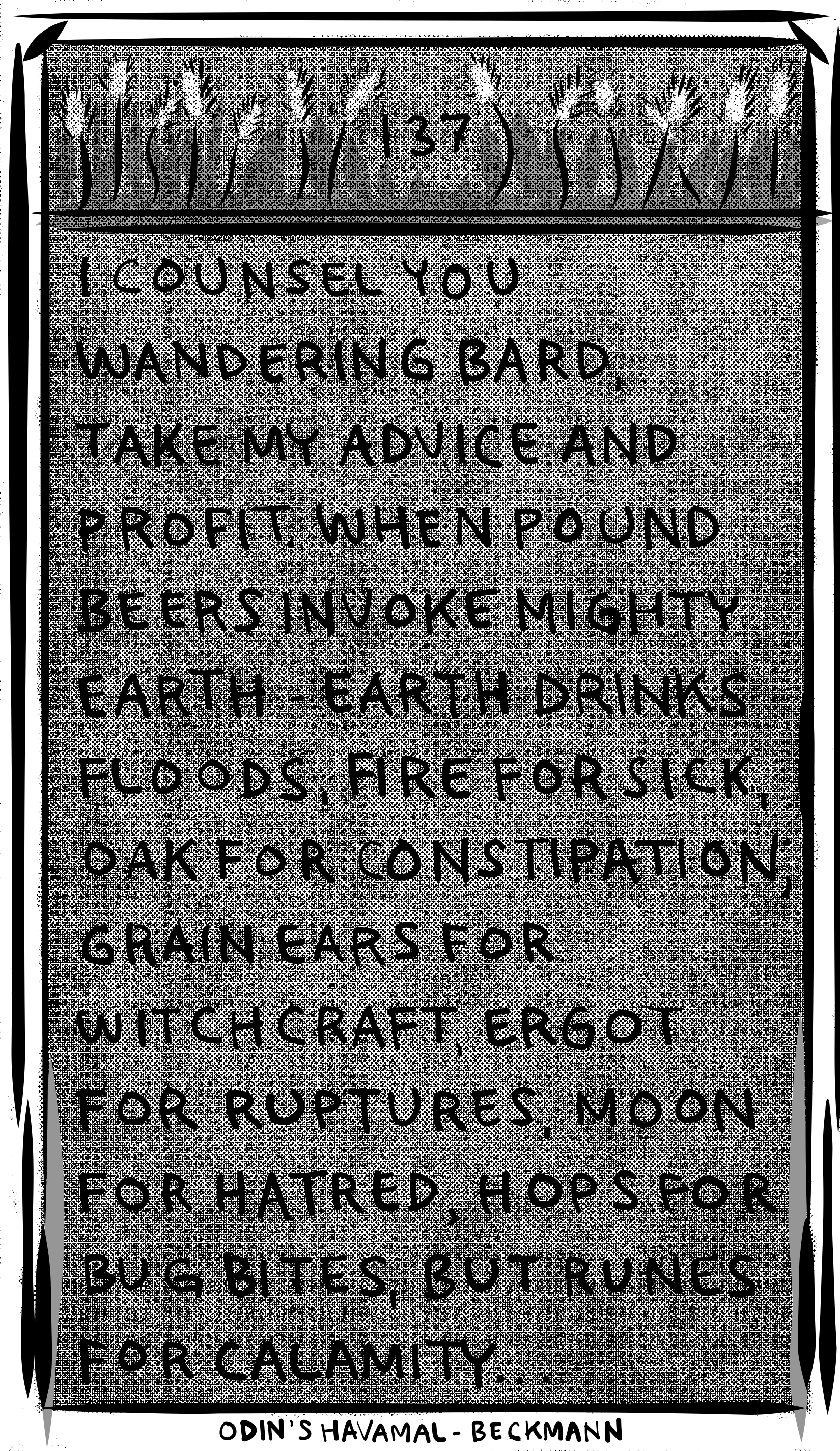
Odin’s Quest after Runes (138-XXX)
